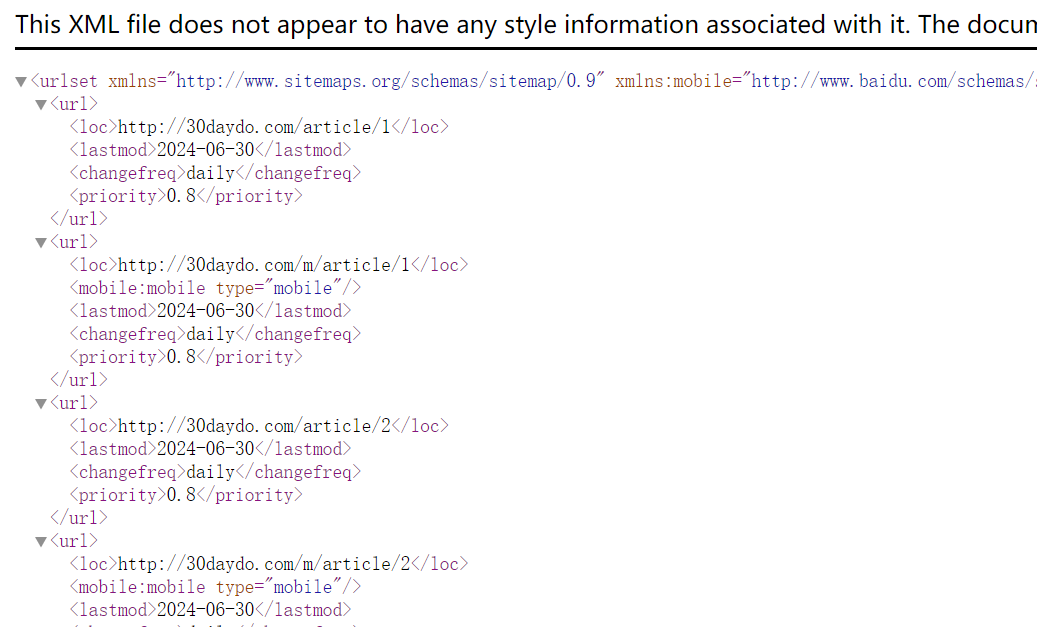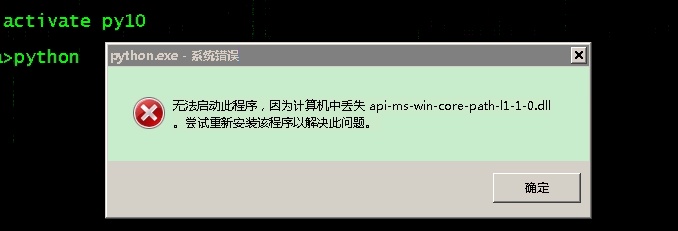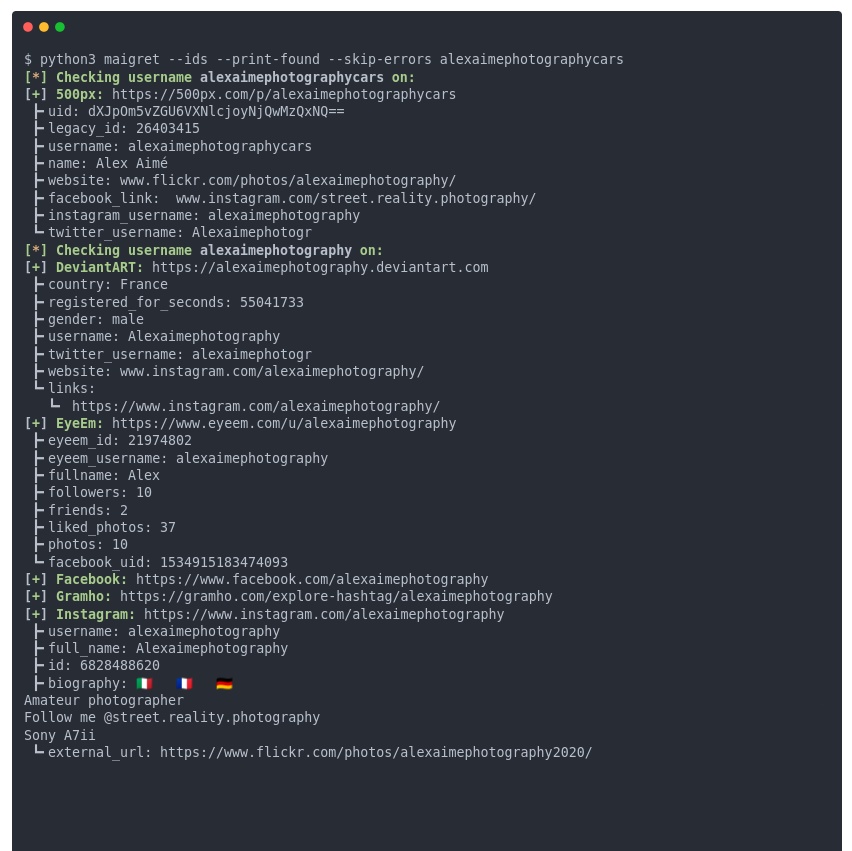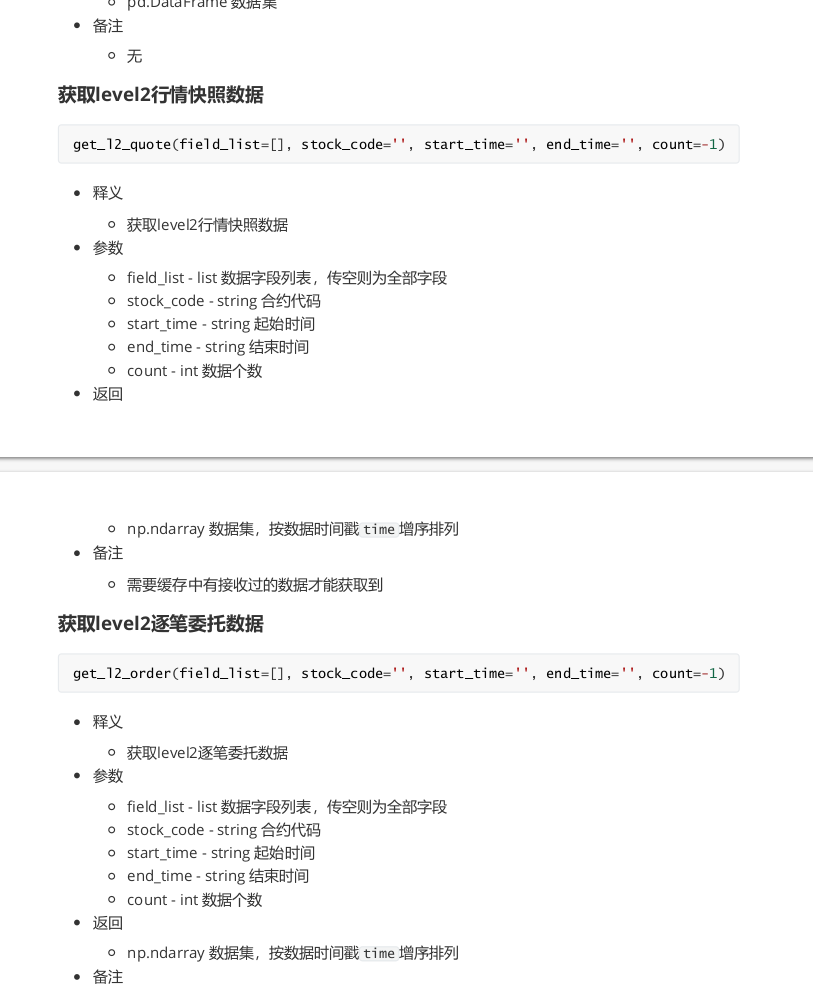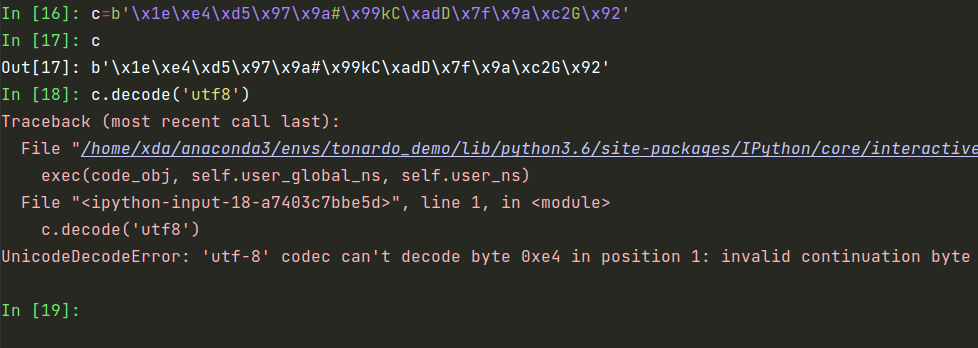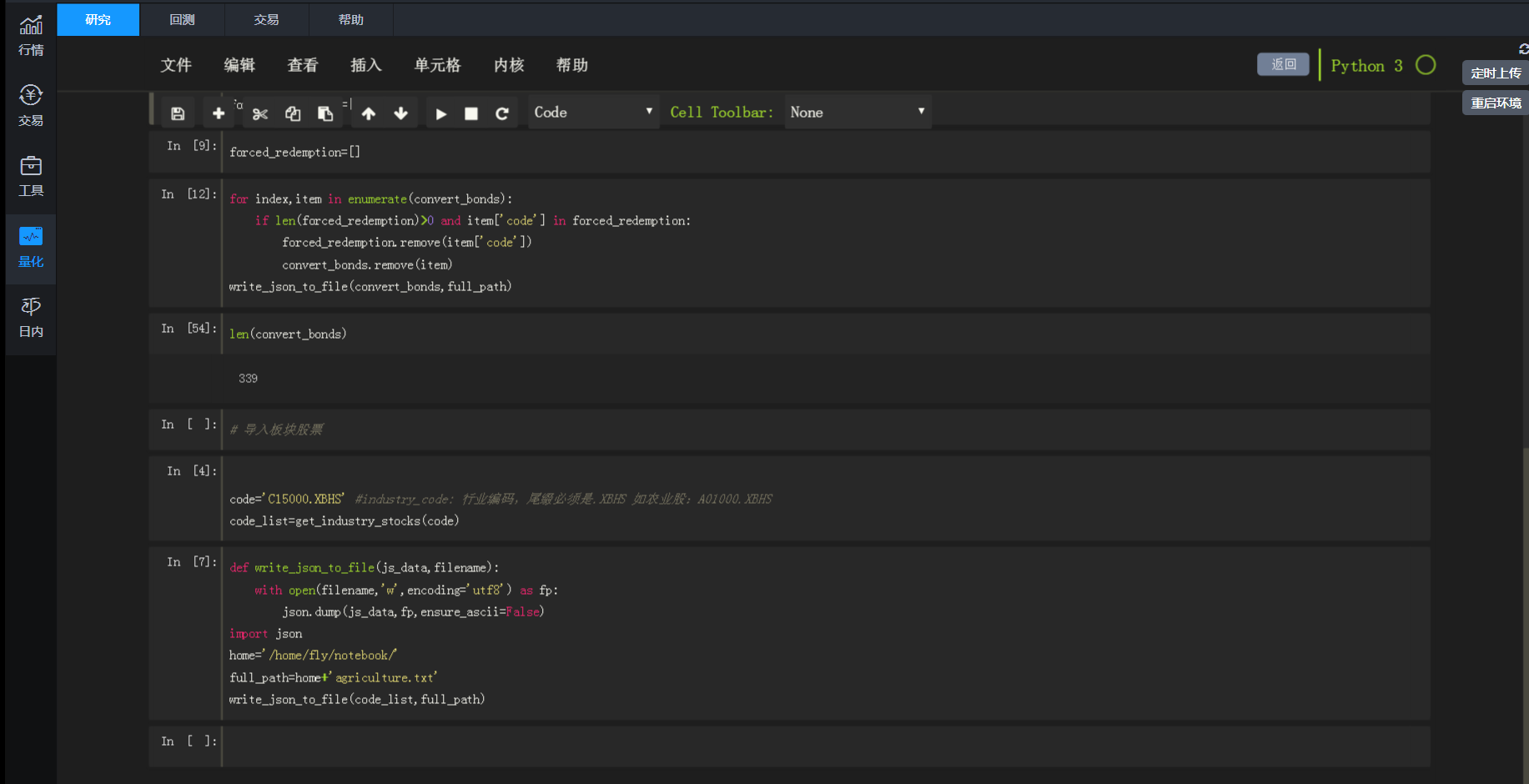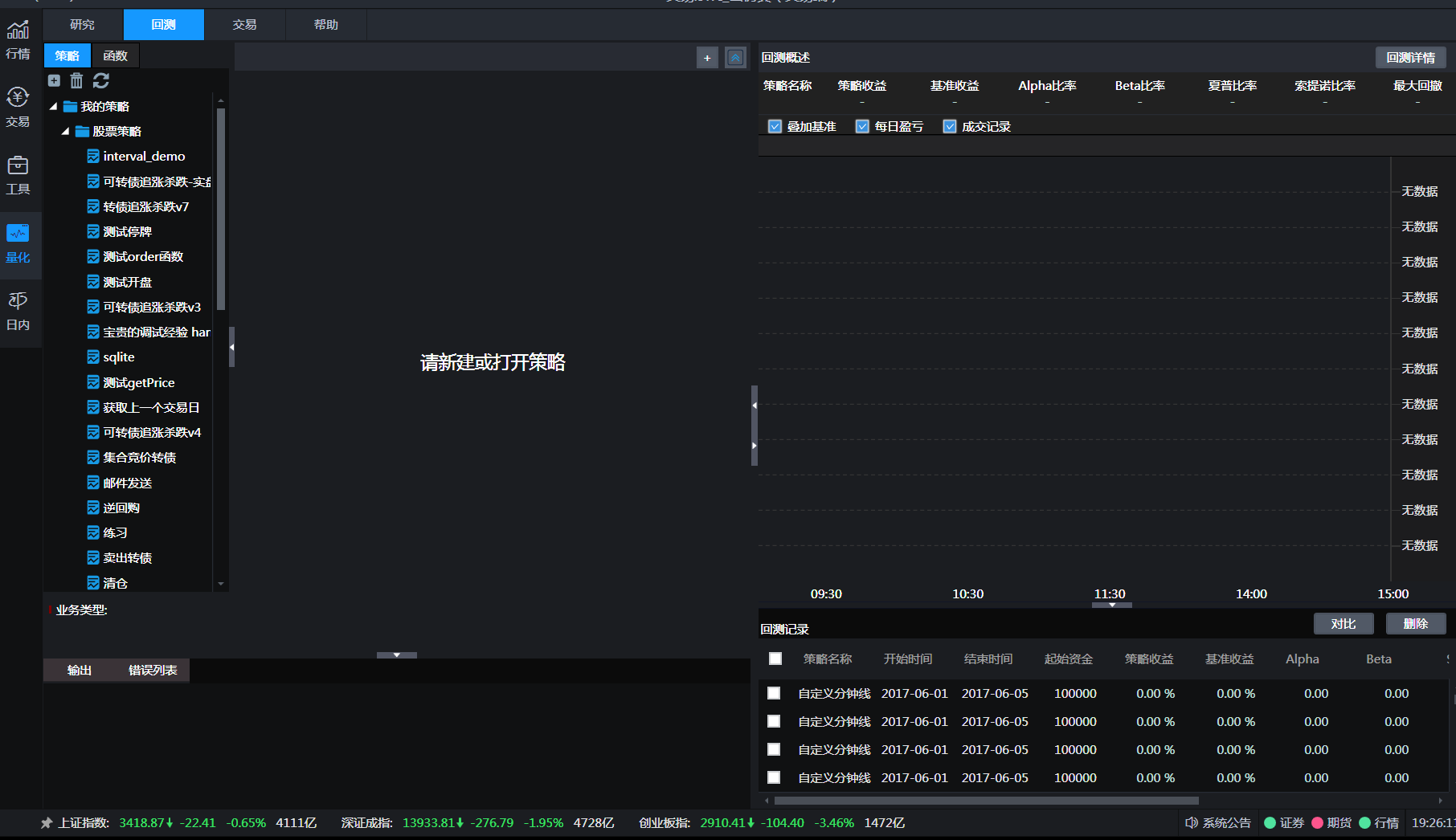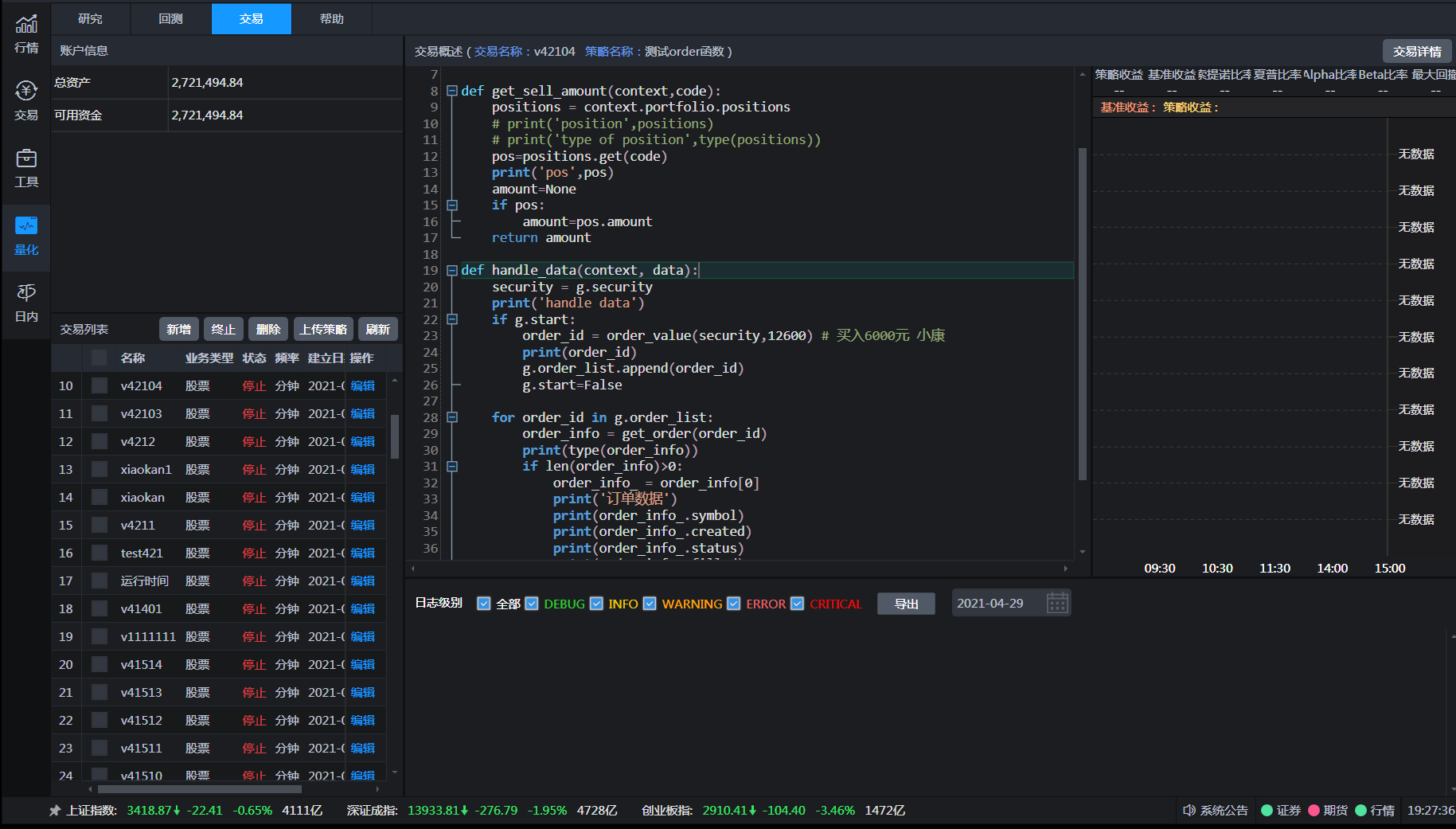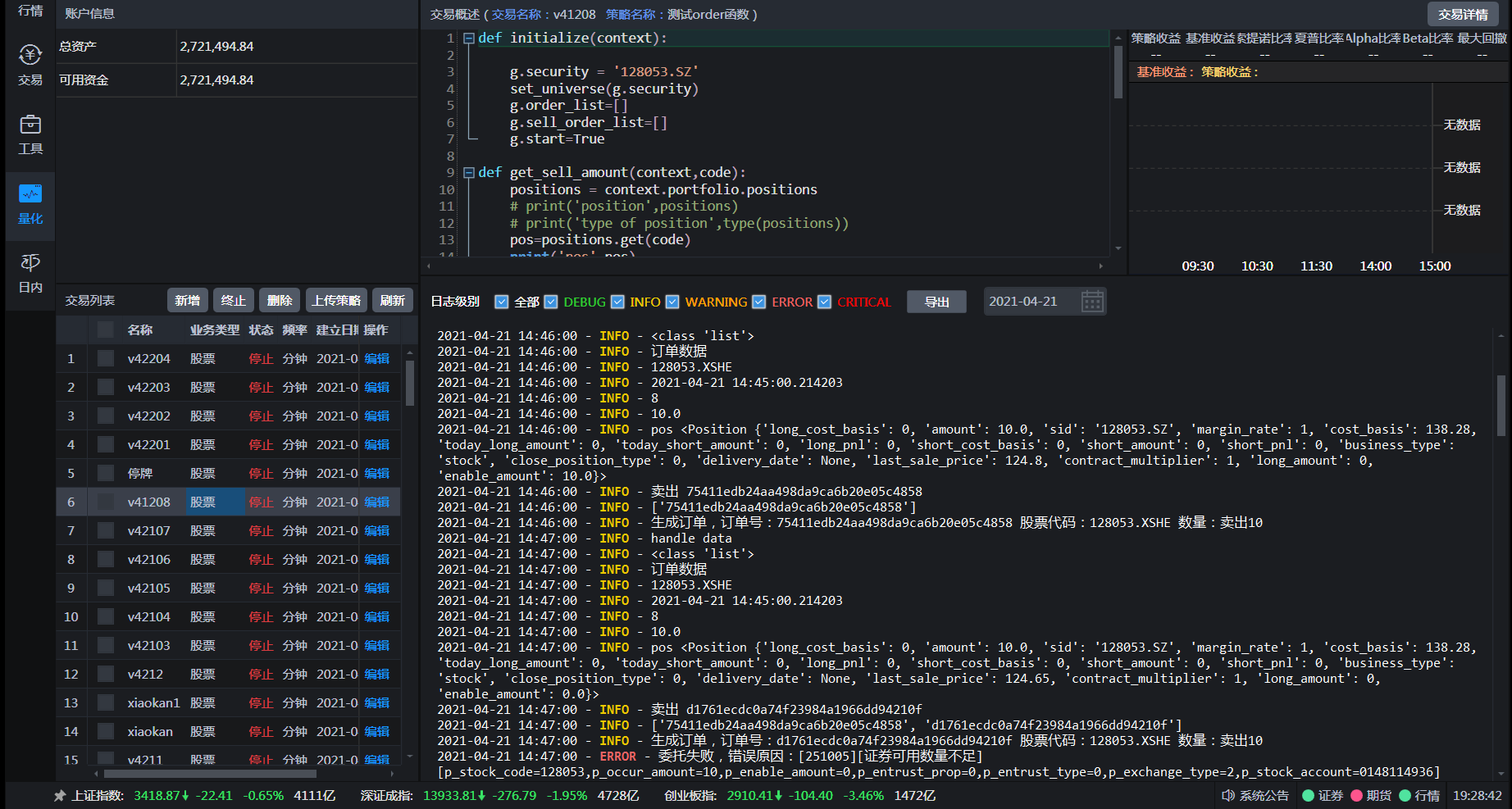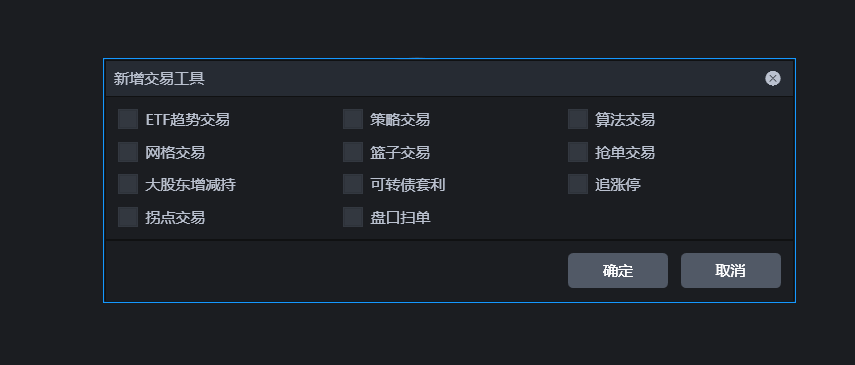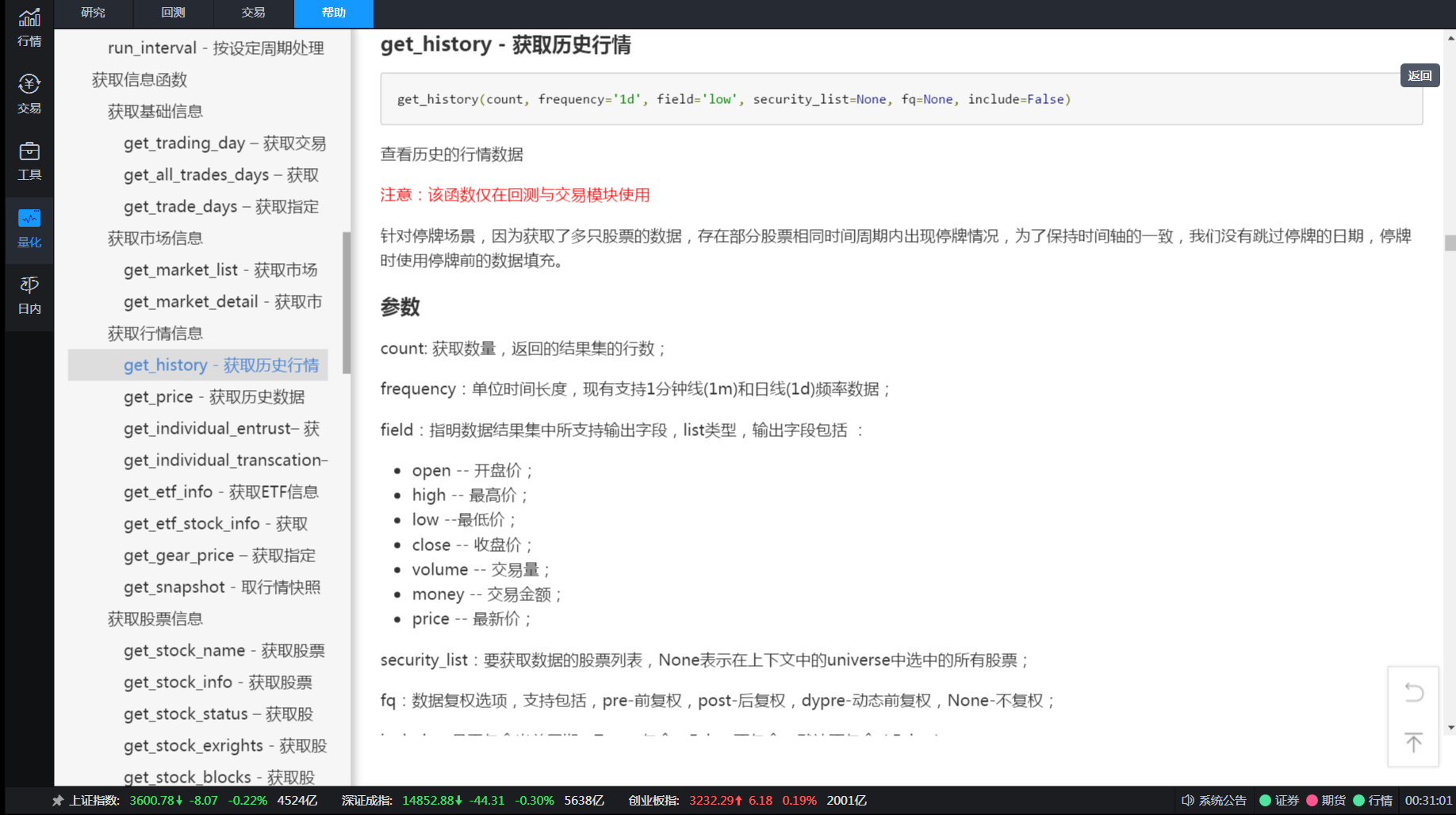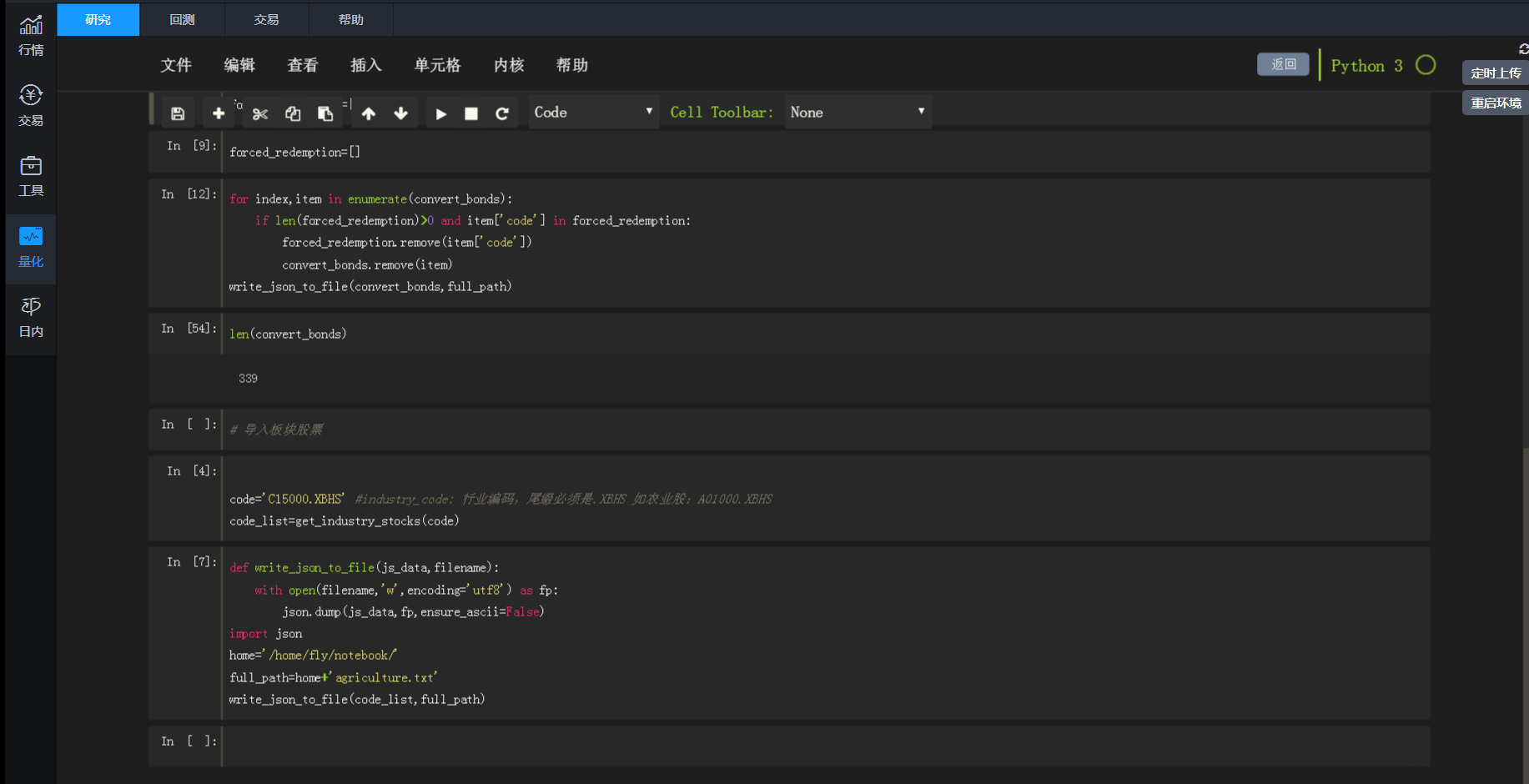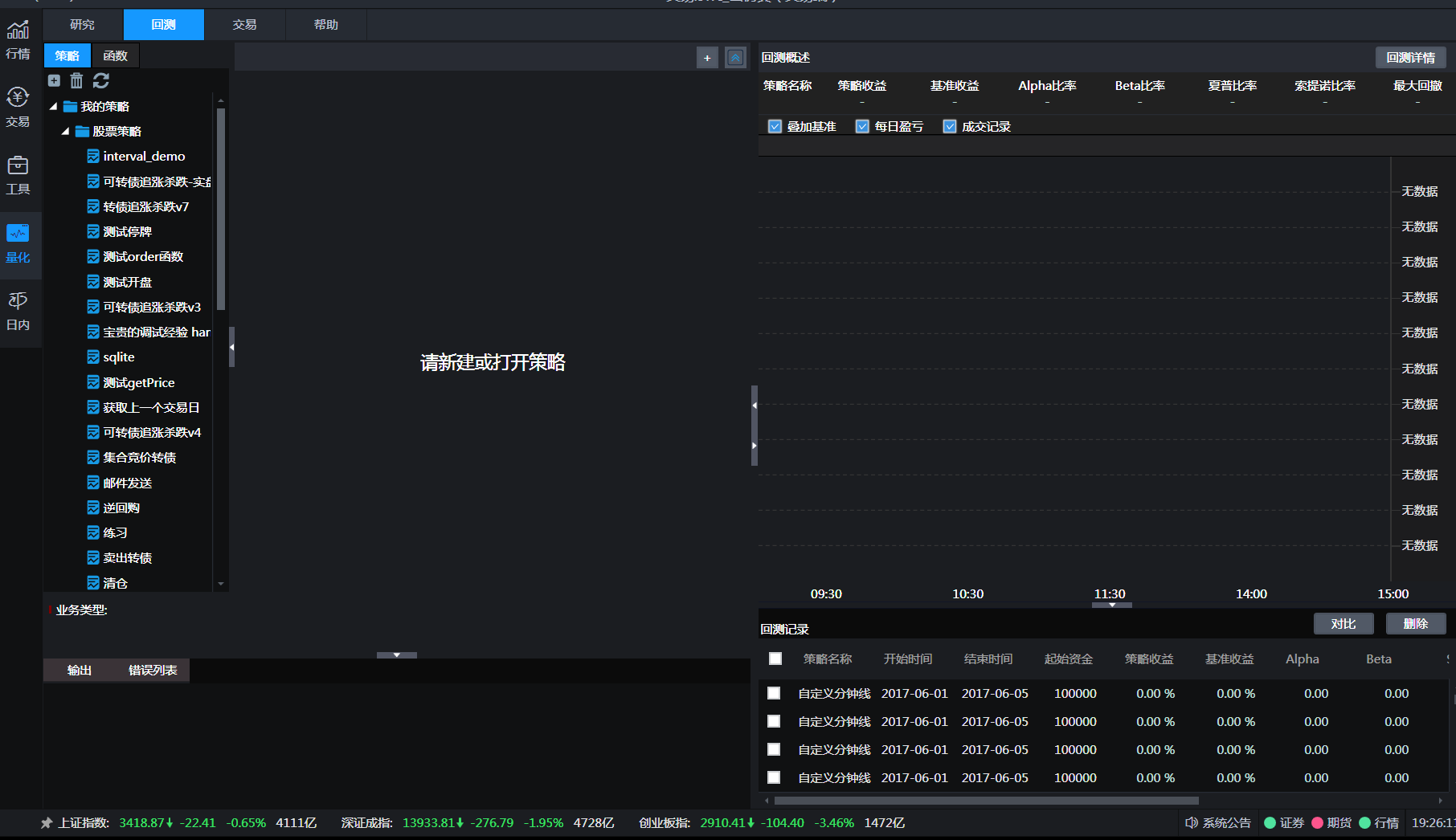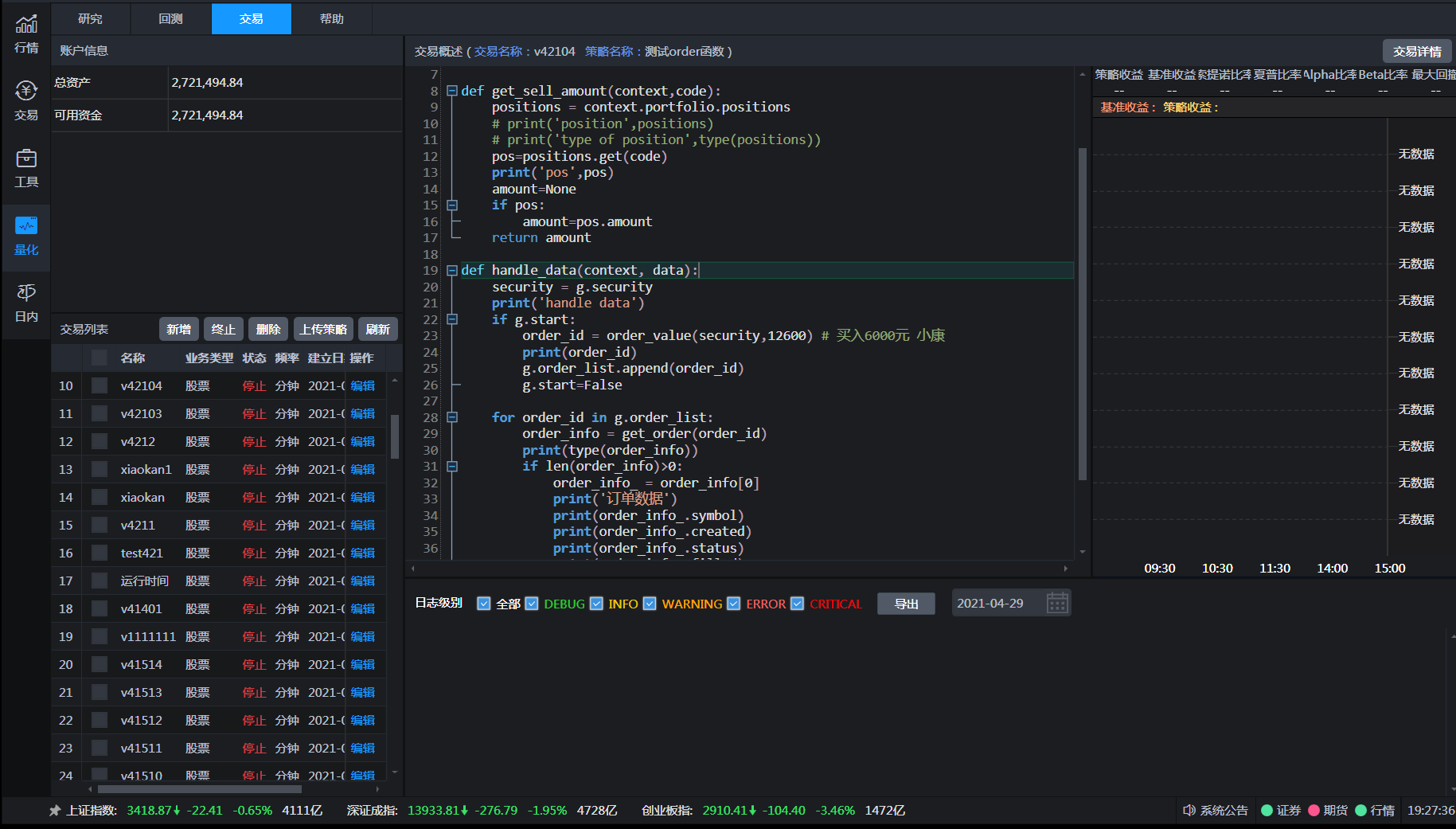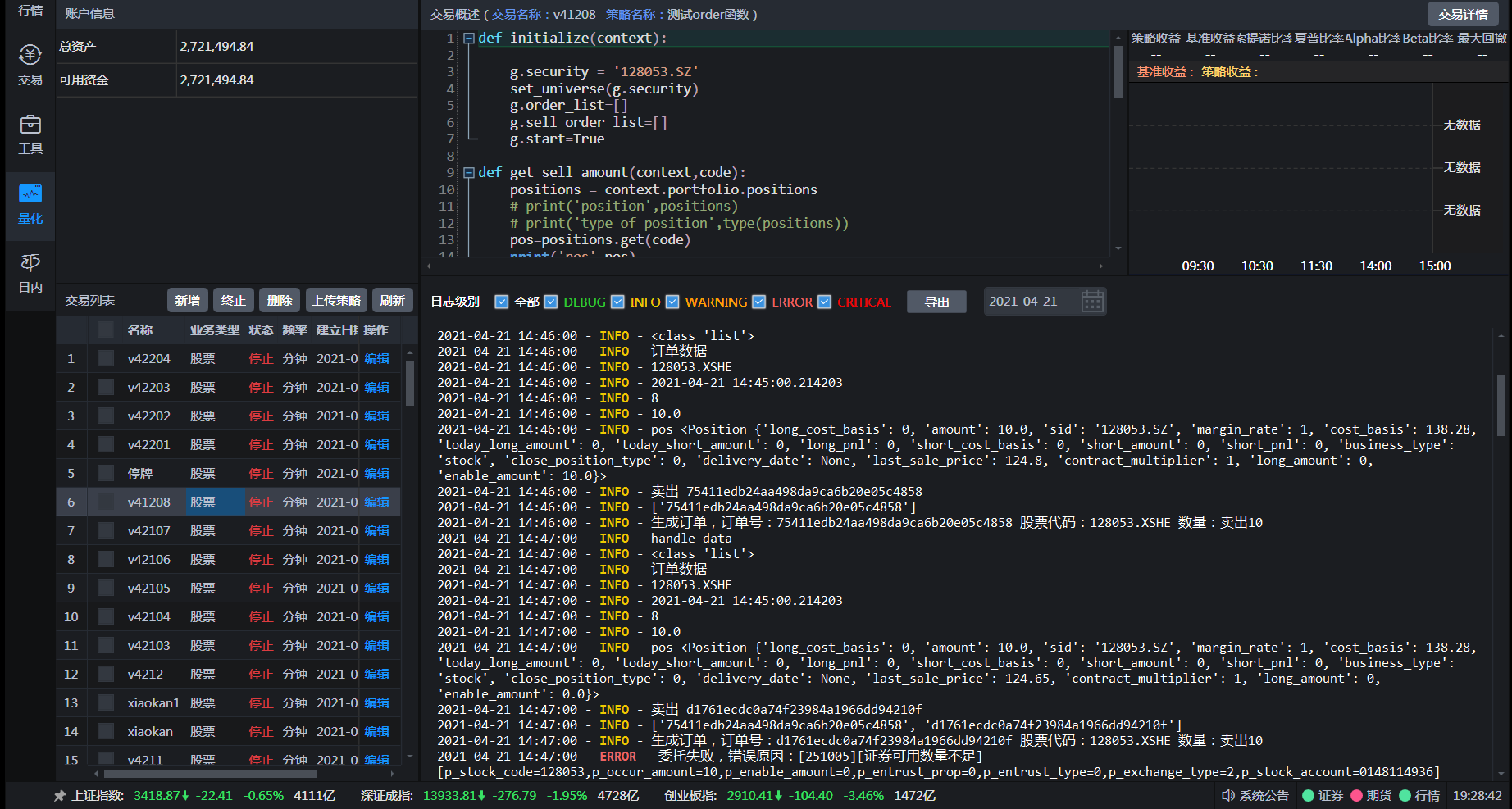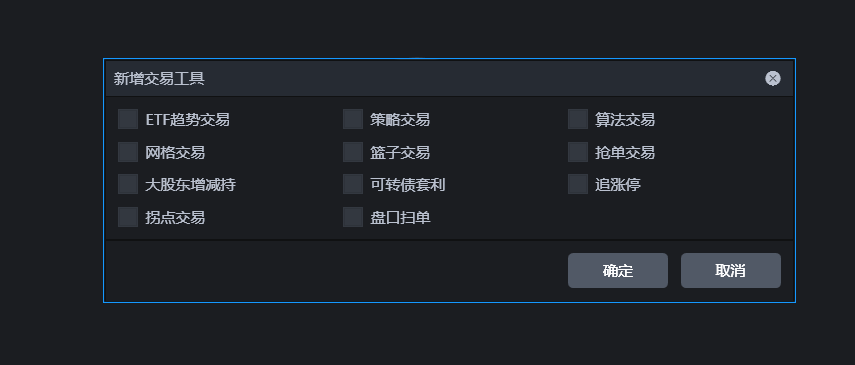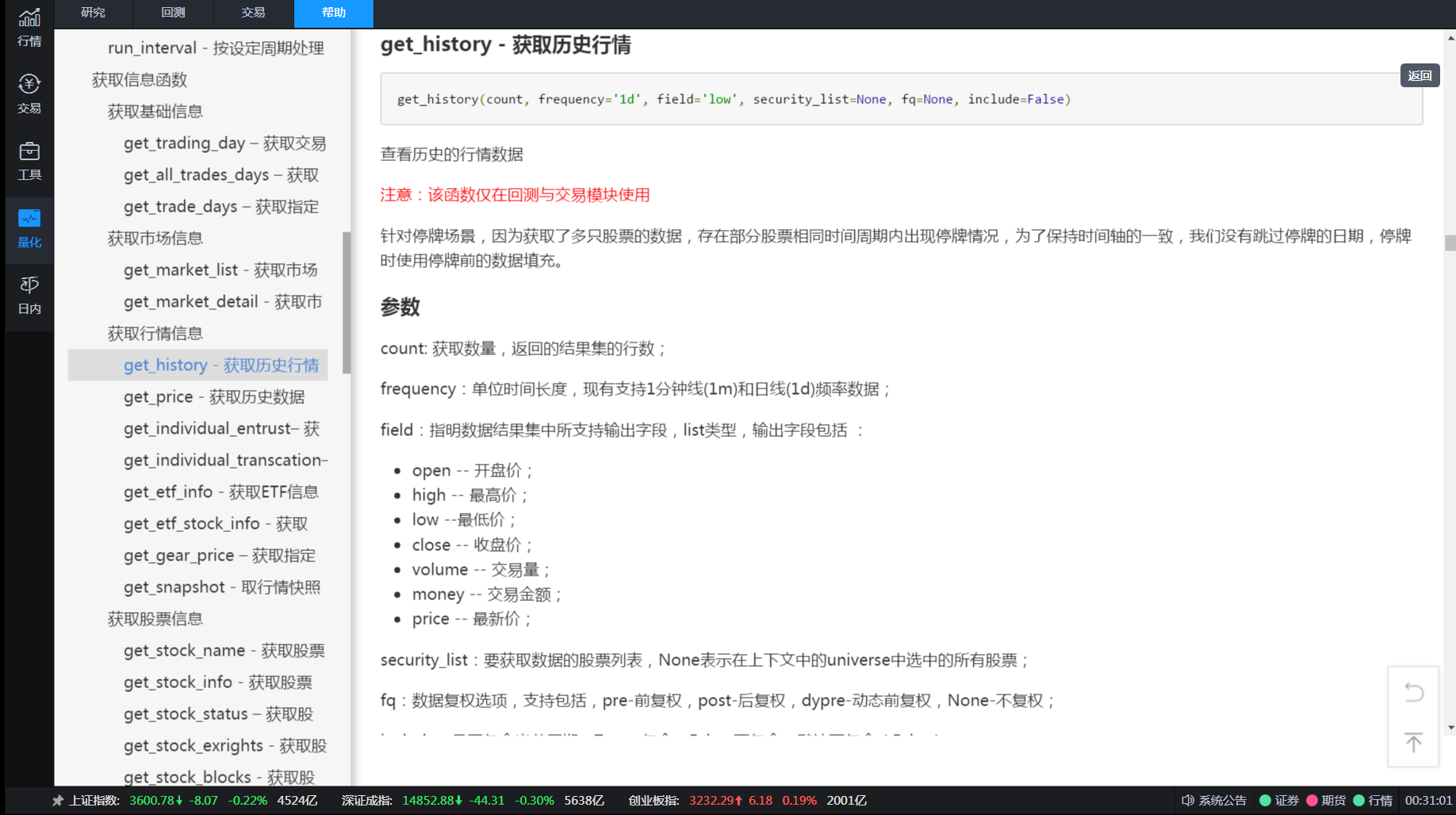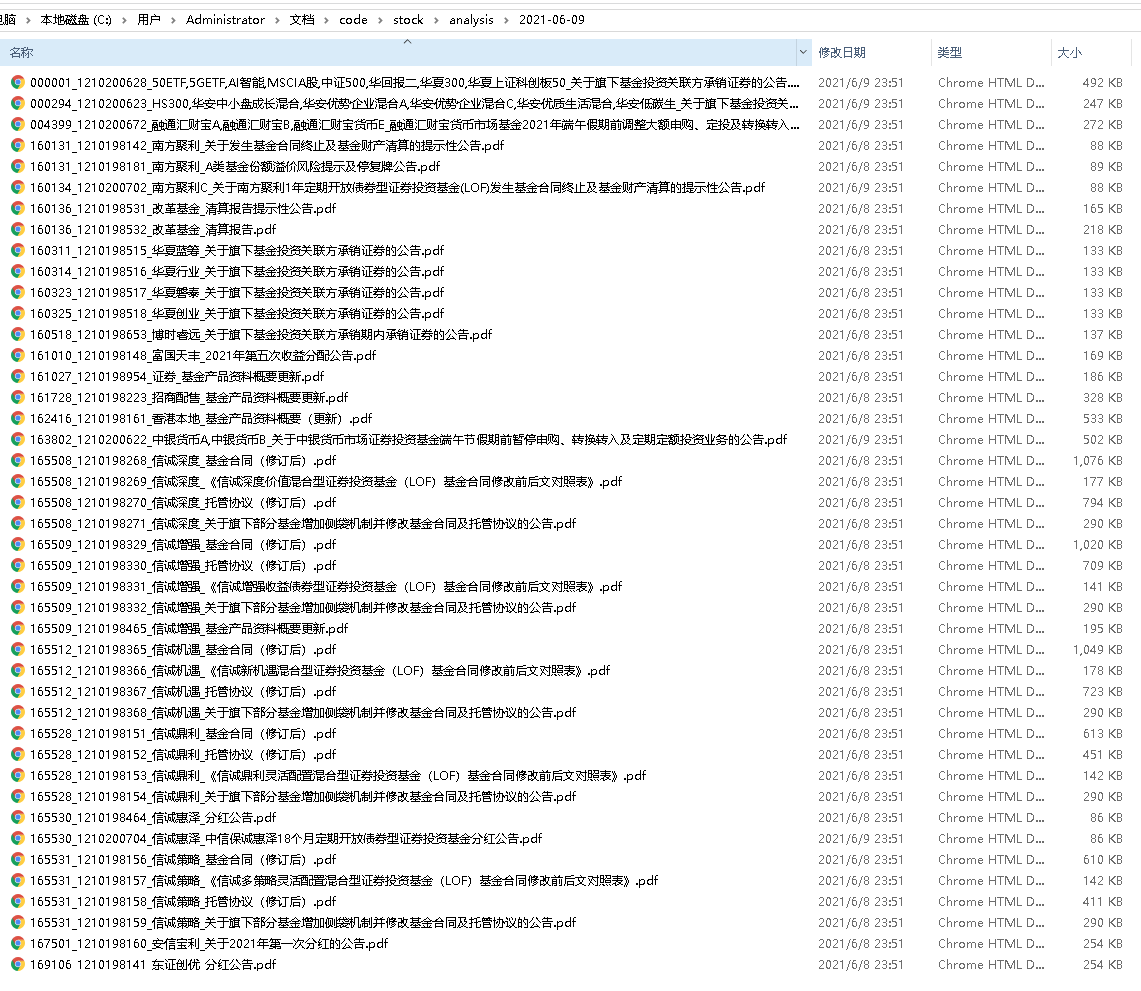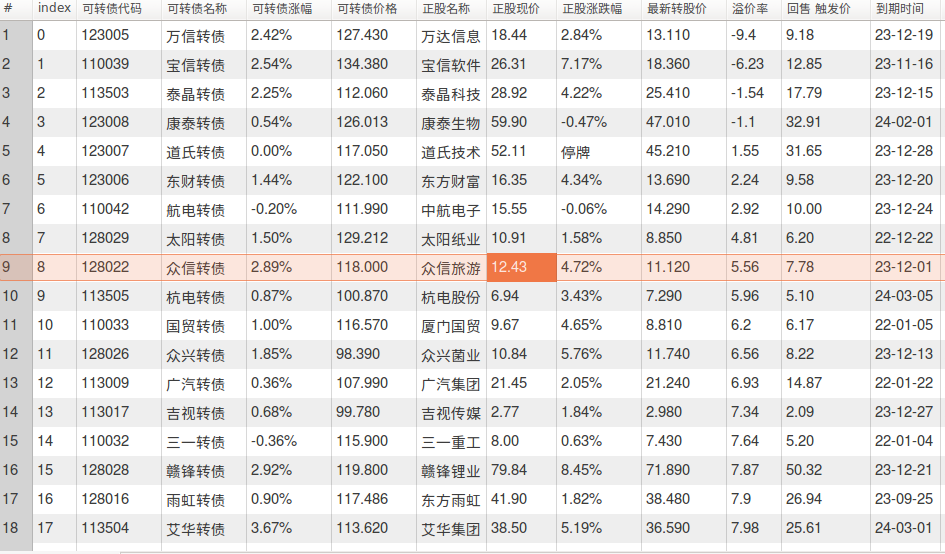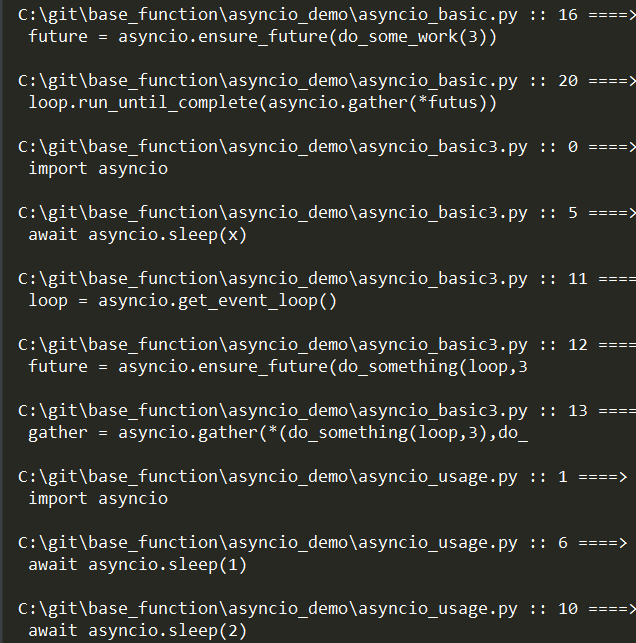
python
python自动生成网站sitemap.xml 代码
python • 李魔佛 发表了文章 • 0 个评论 • 2161 次浏览 • 2024-06-30 13:32
<urlset xmlns="http://www.sitemaps.org/schemas/sitemap/0.9" xmlns:mobile="http://www.baidu.com/schemas/s ... gt%3B
<url>
<loc>http://30daydo.com/article/1</loc>
<mobile:mobile type="mobile"/>
<lastmod>2024-06-30</lastmod>
<changefreq>daily</changefreq>
<priority>0.8</priority>
</url>
</urlset>
然后我们要做的就是拿到我们页面上所有的链接地址,填充到这里:
<url>
<loc>http://30daydo.com/article/1</loc>
<mobile:mobile type="mobile"/>
<lastmod>2024-06-30</lastmod>
<changefreq>daily</changefreq>
<priority>0.8</priority>
</url>
只需要替换上面的http://30daydo.com/article/1 地址就可以了。这个你跟你的完整url规律生成,或者从数据库读取就好了。
然后生成一个文件,自动复制到文章目录就可以了。
完整源码:
https://github.com/Rockyzsu/sitemap_generator
欢迎star,有问题留言。
查看全部
<urlset xmlns="http://www.sitemaps.org/schemas/sitemap/0.9" xmlns:mobile="http://www.baidu.com/schemas/s ... gt%3B
<url>
<loc>http://30daydo.com/article/1</loc>
<mobile:mobile type="mobile"/>
<lastmod>2024-06-30</lastmod>
<changefreq>daily</changefreq>
<priority>0.8</priority>
</url>
</urlset>
然后我们要做的就是拿到我们页面上所有的链接地址,填充到这里:
<url>
<loc>http://30daydo.com/article/1</loc>
<mobile:mobile type="mobile"/>
<lastmod>2024-06-30</lastmod>
<changefreq>daily</changefreq>
<priority>0.8</priority>
</url>
只需要替换上面的http://30daydo.com/article/1 地址就可以了。这个你跟你的完整url规律生成,或者从数据库读取就好了。
然后生成一个文件,自动复制到文章目录就可以了。
完整源码:
https://github.com/Rockyzsu/sitemap_generator
欢迎star,有问题留言。
anaconda安装python报错 缺少:api-ms-win-core-path-l1-1-0.dll
python • 马化云 发表了文章 • 0 个评论 • 3188 次浏览 • 2023-03-30 18:16
少了dll文件。
于是学网上(csdn)的方法进行修复,把缺的dll下载下来复制到system32的目录。
但是后面还是报错。
Python path configuration:
PYTHONHOME = (not set)
PYTHONPATH = (not set)
program name = 'python'
isolated = 0
environment = 1
user site = 1
import site = 1
sys._base_executable = '\u0158\x06'
sys.base_prefix = '.'
sys.base_exec_prefix = '.'
sys.executable = '\u0158\x06'
sys.prefix = '.'
sys.exec_prefix = '.'
sys.path = [
'C:\\anaconda\\python38.zip',
'.\\DLLs',
'.\\lib',
'',
]
Fatal Python error: init_fs_encoding: failed to get the Python codec of the filesystem encodin
Python runtime state: core initialized
ModuleNotFoundError: No module named 'encodings'
Current thread 0x000013a8 (most recent call first):
后面才发现,win7的机子只能安装python3.8以下的版本,高版本会报错。
查看全部
少了dll文件。
于是学网上(csdn)的方法进行修复,把缺的dll下载下来复制到system32的目录。
但是后面还是报错。
Python path configuration:
PYTHONHOME = (not set)
PYTHONPATH = (not set)
program name = 'python'
isolated = 0
environment = 1
user site = 1
import site = 1
sys._base_executable = '\u0158\x06'
sys.base_prefix = '.'
sys.base_exec_prefix = '.'
sys.executable = '\u0158\x06'
sys.prefix = '.'
sys.exec_prefix = '.'
sys.path = [
'C:\\anaconda\\python38.zip',
'.\\DLLs',
'.\\lib',
'',
]
Fatal Python error: init_fs_encoding: failed to get the Python codec of the filesystem encodin
Python runtime state: core initialized
ModuleNotFoundError: No module named 'encodings'
Current thread 0x000013a8 (most recent call first):
后面才发现,win7的机子只能安装python3.8以下的版本,高版本会报错。
python父类如何判断子类时候实现了某个方法或者属性赋值
python • 李魔佛 发表了文章 • 0 个评论 • 2368 次浏览 • 2022-12-04 10:47
看看下面的例子 class Parent:
def __init__(self):
self.name='parent'
self.age=10
def run(self):
if hasattr(self,'get_salary'):
print('has func')
print(self.get_salary())
class Child(Parent):
def __init__(self):
# self.name='child'
Parent.__init__(self)
self.salary=100
def get_salary(self):
return self.salary
obj = Child()
obj.run()
obj.run调用的是parent里面的方法。
而parent的run里面调用一个hasattr, 来判断self 是否有get_salary这个函数。
因为self是从子类传进去的,所以self实际是 child的实例。
因为child里面是有get_salary方法(属性)的,所以hasatrr 是返回true, 然后调用子类的self.get_salary
从而程序没有报错。打印正确的返回数据
查看全部
看看下面的例子
class Parent:
def __init__(self):
self.name='parent'
self.age=10
def run(self):
if hasattr(self,'get_salary'):
print('has func')
print(self.get_salary())
class Child(Parent):
def __init__(self):
# self.name='child'
Parent.__init__(self)
self.salary=100
def get_salary(self):
return self.salary
obj = Child()
obj.run()
obj.run调用的是parent里面的方法。
而parent的run里面调用一个hasattr, 来判断self 是否有get_salary这个函数。
因为self是从子类传进去的,所以self实际是 child的实例。
因为child里面是有get_salary方法(属性)的,所以hasatrr 是返回true, 然后调用子类的self.get_salary
从而程序没有报错。打印正确的返回数据
Django mysql SSL 证书配置
数据库 • 马化云 发表了文章 • 0 个评论 • 2605 次浏览 • 2022-10-13 15:35
具体配置如下:
ca_path = '/etc/ssl/certs/ca-certificates.crt' # 证书地址
DATABASES = {
'default': {
'ENGINE': 'django.db.backends.mysql',
'NAME': 'wordpress',
'USER': 'root',
'PASSWORD': '123456',
'HOST': '127.0.0.1`',
'PORT': 3306,
'OPTIONS': {'ssl':{'KEY': ca_path}}
}
} 查看全部
具体配置如下:
ca_path = '/etc/ssl/certs/ca-certificates.crt' # 证书地址
DATABASES = {
'default': {
'ENGINE': 'django.db.backends.mysql',
'NAME': 'wordpress',
'USER': 'root',
'PASSWORD': '123456',
'HOST': '127.0.0.1`',
'PORT': 3306,
'OPTIONS': {'ssl':{'KEY': ca_path}}
}
}
SQLAlchemy mysql ssl证书 连接
数据库 • 马化云 发表了文章 • 0 个评论 • 2827 次浏览 • 2022-10-09 20:50
需要加上参数:
connect_args,加上ssl路径。
from sqlalchemy import create_engine
ca_path = '/etc/ssl/certs/ca-certificates.crt' # linux 证书路径
ssl_args = {'ssl_ca': ca_path}
engine = create_engine('mysql+pymysql://root:password@127.0.01:3306/wordpressdb?charset=utf8',
echo = True,
connect_args=ssl_args
) 查看全部
需要加上参数:
connect_args,加上ssl路径。
from sqlalchemy import create_engine
ca_path = '/etc/ssl/certs/ca-certificates.crt' # linux 证书路径
ssl_args = {'ssl_ca': ca_path}
engine = create_engine('mysql+pymysql://root:password@127.0.01:3306/wordpressdb?charset=utf8',
echo = True,
connect_args=ssl_args
)
python社工库合集
网络安全 • 马化云 发表了文章 • 0 个评论 • 3607 次浏览 • 2022-10-08 17:30
这个项目太吓人了,输入 id,就能把互联网上你的相关账号全部扒出来,而且不仅仅是简单的 id 匹配,你的用户资料字段也会被匹配,而且连 pornhub/xvideo 账号都有。
使用方法(python):
# install from pypi
pip3 install maigret
# usage
maigret username
个人亲测了一下,这个库主要针对国内外一些大型的网站进行扫描,得到的结果还是很准的。
如果有专门针对国内网站的库,欢迎留言回复~
查看全部
https://github.com/soxoj/maigret
这个项目太吓人了,输入 id,就能把互联网上你的相关账号全部扒出来,而且不仅仅是简单的 id 匹配,你的用户资料字段也会被匹配,而且连 pornhub/xvideo 账号都有。
使用方法(python):
# install from pypi
pip3 install maigret
# usage
maigret username
个人亲测了一下,这个库主要针对国内外一些大型的网站进行扫描,得到的结果还是很准的。
如果有专门针对国内网站的库,欢迎留言回复~
国庆节 微信头像红旗 制作 附 python代码 和 红旗素材
python • 马化云 发表了文章 • 0 个评论 • 3421 次浏览 • 2022-09-23 10:31
给自己制作国旗头像,是一件很有意义的事。微信官方就曾经举办过活动。
制作国旗头像的方法有很多,本文给大家介绍用Python制作渐变的微信国旗头像。
渐变的国旗头像效果非常好看。
制作方式也很简单,下面介绍实现方法,可以复制本文的代码,制作属于自己的国旗头像。
1.准备国旗图片
声明:严禁非法使用国旗图片。在国旗图片下载页面下方有《国旗法》等相关规定。
本文使用1024像素的图片。
2.准备头像图片
登录自己的微信,打开个人信息,点击头像,点击右上角的三个点,将图片保存到手机,
然后将图片传到电脑上。
为了不失一般性,本文使用的图片是我从网络上获取的一张600*600像素的头像图片。
准备好后,将国旗图片和头像图片拷贝到代码同一个目录下。
代码实现
先安装Python中用于处理图片的pillow库。
pip install pillow
安装完成后,使用pillow库来制作国旗头像。
只需要十几行代码就能实现。完整代码如下。
# coding=utf-8
from PIL import Image
import math
key = 3.2# 修改key值可以调整国旗的范围,推荐2~4之间的数字,支持小数
motherland_flag = Image.open('flag-1024.png')
head_picture = Image.open('mmexport1663893338571.png')
# 截图国旗上的五颗五角星
flag_width, flag_height = motherland_flag.size
crop_flag = motherland_flag.crop((66, 0, flag_height+66, flag_height))
# 将国旗截图处理成颜色渐变
for i in range(flag_height):
for j in range(flag_height):
color = crop_flag.getpixel((i, j))
distance = int(math.sqrt(i*i + j*j))
alpha = 255 - int(distance//key)
new_color = (*color[0:-1], alpha if alpha > 0 else 0)
crop_flag.putpixel((i, j), new_color)
# 修改渐变图片的尺寸,适应头像大小,粘贴到头像上
new_crop_flag = crop_flag.resize(head_picture.size)
head_picture.paste(new_crop_flag, (0, 0), new_crop_flag)
# 保存自己的国旗头像
head_picture.save('国旗头像.png')
到此为止,已经制作好了国旗头像了。
下面是代码的详细结束:
代码介绍:代码介绍:
导入需要使用的Python库,pillow库用于对图片进行截取、大小修改、粘贴等处理。math库用于计算像素点的距离。
使用Image.open()方法,读取准备好的国旗图片和头像图片到代码中。
对国旗图片进行截取,获取一张正方形的图片,截取时调整截取位置,保证5颗五角星完整展示在截图中。
crop()方法中传入的是一个(left, upper, right, lower)的元组,分别是截图的左、上、右、下像素位置。
将正方形国旗截图设置成透明度渐变的图片。国旗图片的模式默认是RGBA,本文需要的刚好是RGBA(red,green,blue,alpha)模式的图片,RGBA模式的图片颜色值是一个长度为4的元组,我们修改不同像素点的A值即可将图片设置成渐变。
本文是以国旗左上角为圆心,离圆心越远的像素点A值越小,像素点越透明。使用getpixel()和putpixel()两个方法来获取和重设像素点的颜色值,使用math.sqrt()计算像素点距离。
将渐变图片的大小转换成和头像的大小一样,然后粘贴到图片顶层。使用resize()方法重设图片大小,使用paste()方法粘贴图片。
保存图片,此时的微信头像图片上已经粘贴了透明渐变的国旗图片,微信国旗头像制作完成。
本文介绍了用Python制作微信国旗头像的方法。在本文的代码中,以左上角为圆心,离圆心越远越透明,可以修改key值,调整国旗透明变化的范围。
如果需要制作其他渐变类型,如以右上角为圆心逐渐透明、从左侧向右侧逐渐透明、从上到下逐渐透明等,可以修改国旗渐变部分的代码、翻转图片等。
查看全部
给自己制作国旗头像,是一件很有意义的事。微信官方就曾经举办过活动。
制作国旗头像的方法有很多,本文给大家介绍用Python制作渐变的微信国旗头像。
渐变的国旗头像效果非常好看。
制作方式也很简单,下面介绍实现方法,可以复制本文的代码,制作属于自己的国旗头像。
1.准备国旗图片
声明:严禁非法使用国旗图片。在国旗图片下载页面下方有《国旗法》等相关规定。
本文使用1024像素的图片。
2.准备头像图片
登录自己的微信,打开个人信息,点击头像,点击右上角的三个点,将图片保存到手机,
然后将图片传到电脑上。
为了不失一般性,本文使用的图片是我从网络上获取的一张600*600像素的头像图片。
准备好后,将国旗图片和头像图片拷贝到代码同一个目录下。
代码实现
先安装Python中用于处理图片的pillow库。
pip install pillow
安装完成后,使用pillow库来制作国旗头像。
只需要十几行代码就能实现。完整代码如下。
# coding=utf-8
from PIL import Image
import math
key = 3.2# 修改key值可以调整国旗的范围,推荐2~4之间的数字,支持小数
motherland_flag = Image.open('flag-1024.png')
head_picture = Image.open('mmexport1663893338571.png')
# 截图国旗上的五颗五角星
flag_width, flag_height = motherland_flag.size
crop_flag = motherland_flag.crop((66, 0, flag_height+66, flag_height))
# 将国旗截图处理成颜色渐变
for i in range(flag_height):
for j in range(flag_height):
color = crop_flag.getpixel((i, j))
distance = int(math.sqrt(i*i + j*j))
alpha = 255 - int(distance//key)
new_color = (*color[0:-1], alpha if alpha > 0 else 0)
crop_flag.putpixel((i, j), new_color)
# 修改渐变图片的尺寸,适应头像大小,粘贴到头像上
new_crop_flag = crop_flag.resize(head_picture.size)
head_picture.paste(new_crop_flag, (0, 0), new_crop_flag)
# 保存自己的国旗头像
head_picture.save('国旗头像.png')
到此为止,已经制作好了国旗头像了。
下面是代码的详细结束:
代码介绍:
代码介绍:
导入需要使用的Python库,pillow库用于对图片进行截取、大小修改、粘贴等处理。math库用于计算像素点的距离。
使用Image.open()方法,读取准备好的国旗图片和头像图片到代码中。
对国旗图片进行截取,获取一张正方形的图片,截取时调整截取位置,保证5颗五角星完整展示在截图中。
crop()方法中传入的是一个(left, upper, right, lower)的元组,分别是截图的左、上、右、下像素位置。
将正方形国旗截图设置成透明度渐变的图片。国旗图片的模式默认是RGBA,本文需要的刚好是RGBA(red,green,blue,alpha)模式的图片,RGBA模式的图片颜色值是一个长度为4的元组,我们修改不同像素点的A值即可将图片设置成渐变。
本文是以国旗左上角为圆心,离圆心越远的像素点A值越小,像素点越透明。使用getpixel()和putpixel()两个方法来获取和重设像素点的颜色值,使用math.sqrt()计算像素点距离。
将渐变图片的大小转换成和头像的大小一样,然后粘贴到图片顶层。使用resize()方法重设图片大小,使用paste()方法粘贴图片。
保存图片,此时的微信头像图片上已经粘贴了透明渐变的国旗图片,微信国旗头像制作完成。
本文介绍了用Python制作微信国旗头像的方法。在本文的代码中,以左上角为圆心,离圆心越远越透明,可以修改key值,调整国旗透明变化的范围。
如果需要制作其他渐变类型,如以右上角为圆心逐渐透明、从左侧向右侧逐渐透明、从上到下逐渐透明等,可以修改国旗渐变部分的代码、翻转图片等。
6行python代码 获取通达信的可转债分时数据
量化交易-Ptrade-QMT • 李魔佛 发表了文章 • 0 个评论 • 3683 次浏览 • 2022-08-27 14:33
api = TdxHq_API()
with api.connect('119.147.212.81', 7709):
data = api.get_security_bars(7, 0, '123045', 0, 240) # 123045 为转债代码 ,240 为获取 240个转债数据
df = api.to_df(data)
df=df.sort_values('datetime')
点击查看大图
如果需要遍历当前最新可转债代码(集思录),需要结合前面的文章。
公众号:
查看全部
ptrade如何以指定价格下单?
量化交易-Ptrade-QMT • 李魔佛 发表了文章 • 0 个评论 • 3471 次浏览 • 2022-07-30 19:27
order函数:order-按数量买卖
order(security, amount, limit_price=None)
买卖标的。
注意:
由于下述原因,回测中实际买入或者卖出的股票数量有时候可能与委托设置的不一样,针对上述内容调整,系统会在日志中增加警告信息:
根据委托买入数量与价格经计算后的资金数量,大于当前可用资金;
委托卖出数量大于当前可用持仓数量;
每次交易数量只能是100的整数倍,但是卖出所有股票时不受此限制;
股票停牌、股票未上市或者退市、股票不存在;
回测中每天结束时会取消所有未完成交易;
order_target - 函数order_target(security, amount, limit_price=None)
买卖股票,直到股票最终数量达到指定的amount。
注意:该函数在委托股票时取整100股,委托可转债时取整100张。
参数
security: 股票代码(str);
amount: 期望的最终数量(int);
limit_price:买卖限价(float);
返回
Order对象中的id或者None。如果创建订单成功,则返回Order对象的id,失败则返回None(str)。
order_value 函数order_value - 指定目标价值买卖
order_value(security, value, limit_price=None)
买卖指定价值为value的股票。
注意:该函数在委托股票时取整100股,委托可转债时取整100张。
order_target_value - 函数order_target_value - 指定持仓市值买卖
order_target_value(security, value, limit_price=None)
调整股票仓位到value价值
注意:该函数在委托股票时取整100股,委托可转债时取整100张。
order_market 函数order_market - 按市价进行委托
order_market(security, amount, market_type=None, limit_price=None)
可以使用多种市价类型进行委托。
注意:该函数仅在股票交易模块可用。
上面几个在handle_data中使用的下单函数,都是无法指定价格的,limit_price 只是用于限价,比如你要卖1000股,limit_price的作用是不要把价格卖出你的目标,至于多少卖,是无法控制的。
但是有一个tick_data函数,专门用于行情交易的,里面可调用的函数也很少。tick_data(可选)
tick_data(context, data)
该函数会每隔3秒执行一次。
注意 :
该函数仅在交易模块可用。
该函数在9:30之后才能执行。
该函数中只能使用order_tick进行对应的下单操作。里面下单,用的下单函数是
order_tick - tick行情触发买卖
order_tick(sid, amount, priceGear='1', limit_price=None)
买卖股票下单,可设定价格档位进行委托
注意:该函数仅在交易模块可用。
参数
sid:股票代码(str);
amount:交易数量,正数表示买入,负数表示卖出(int)
priceGear:盘口档位,level1:1~5买档/-1~-5卖档,level2:1~10买档/-1~-10卖档(str)
limit_price:买卖限价,当输入参数中也包含priceGear时,下单价格以limit_price为主(float);
注意到里面:
limit_price:买卖限价,当输入参数中也包含priceGear时,下单价格以limit_price为主
发现这里面居然可以定义价格下单,所以如果一定要指定价格,就需要使用tick_data 触发。
使用代码:
def initialize(context):
g.security = "600570.SS"
set_universe(g.security)
def tick_data(context,data):
security = g.security
current_price = eval(data[security]['tick']['bid_grp'][0])[1][0]
if current_price > 56 and current_price < 57:
# 以买一档下单
order_tick(g.security, -100, "1")
# 以卖二档下单
order_tick(g.security, 100, "-2")
# 以指定价格下单
order_tick(g.security, 100, limit_price=56.5)
def handle_data(context, data):
pass 查看全部
order函数:
order-按数量买卖
order(security, amount, limit_price=None)
买卖标的。
注意:
由于下述原因,回测中实际买入或者卖出的股票数量有时候可能与委托设置的不一样,针对上述内容调整,系统会在日志中增加警告信息:
根据委托买入数量与价格经计算后的资金数量,大于当前可用资金;
委托卖出数量大于当前可用持仓数量;
每次交易数量只能是100的整数倍,但是卖出所有股票时不受此限制;
股票停牌、股票未上市或者退市、股票不存在;
回测中每天结束时会取消所有未完成交易;
order_target - 函数
order_target(security, amount, limit_price=None)
买卖股票,直到股票最终数量达到指定的amount。
注意:该函数在委托股票时取整100股,委托可转债时取整100张。
参数
security: 股票代码(str);
amount: 期望的最终数量(int);
limit_price:买卖限价(float);
返回
Order对象中的id或者None。如果创建订单成功,则返回Order对象的id,失败则返回None(str)。
order_value 函数
order_value - 指定目标价值买卖
order_value(security, value, limit_price=None)
买卖指定价值为value的股票。
注意:该函数在委托股票时取整100股,委托可转债时取整100张。
order_target_value - 函数
order_target_value - 指定持仓市值买卖
order_target_value(security, value, limit_price=None)
调整股票仓位到value价值
注意:该函数在委托股票时取整100股,委托可转债时取整100张。
order_market 函数
order_market - 按市价进行委托
order_market(security, amount, market_type=None, limit_price=None)
可以使用多种市价类型进行委托。
注意:该函数仅在股票交易模块可用。
上面几个在handle_data中使用的下单函数,都是无法指定价格的,limit_price 只是用于限价,比如你要卖1000股,limit_price的作用是不要把价格卖出你的目标,至于多少卖,是无法控制的。
但是有一个tick_data函数,专门用于行情交易的,里面可调用的函数也很少。
tick_data(可选)里面下单,用的下单函数是
tick_data(context, data)
该函数会每隔3秒执行一次。
注意 :
该函数仅在交易模块可用。
该函数在9:30之后才能执行。
该函数中只能使用order_tick进行对应的下单操作。
order_tick - tick行情触发买卖
order_tick(sid, amount, priceGear='1', limit_price=None)
买卖股票下单,可设定价格档位进行委托
注意:该函数仅在交易模块可用。
参数
sid:股票代码(str);
amount:交易数量,正数表示买入,负数表示卖出(int)
priceGear:盘口档位,level1:1~5买档/-1~-5卖档,level2:1~10买档/-1~-10卖档(str)
limit_price:买卖限价,当输入参数中也包含priceGear时,下单价格以limit_price为主(float);
注意到里面:
limit_price:买卖限价,当输入参数中也包含priceGear时,下单价格以limit_price为主
发现这里面居然可以定义价格下单,所以如果一定要指定价格,就需要使用tick_data 触发。
使用代码:
def initialize(context):
g.security = "600570.SS"
set_universe(g.security)
def tick_data(context,data):
security = g.security
current_price = eval(data[security]['tick']['bid_grp'][0])[1][0]
if current_price > 56 and current_price < 57:
# 以买一档下单
order_tick(g.security, -100, "1")
# 以卖二档下单
order_tick(g.security, 100, "-2")
# 以指定价格下单
order_tick(g.security, 100, limit_price=56.5)
def handle_data(context, data):
pass
国盛证券qmt mini模式 xtquant
券商万一免五 • 李魔佛 发表了文章 • 0 个评论 • 13006 次浏览 • 2022-07-29 01:00
【国盛QMT支持 xtquant qmt mini模式】
mini模式可以在外部运行,同时可以下载历史tick数据。xtdata是xtquant库中提供行情相关数据的模块,本模块旨在提供精简直接的数据满足量化交易者的数
据需求,作为python库的形式可以被灵活添加到各种策略脚本中。
主要提供行情数据(历史和实时的K线和分笔)、财务数据、合约基础信息、板块和行业分类信息等通
用的行情数据
可以直接获取level2的数据
使用python代码直接运行,不用在qmt软件里面憋屈地写代码,可直接使用pycharm,vscode编写,且有代码提示,补全,好用多了。
附一个完整的策略例子。
保存为: demo.py
命令行下运行:
python demo.py# 创建策略
#coding=utf-8
from xtquant.xttrader import XtQuantTrader, XtQuantTraderCallback
from xtquant.xtquant import StockAccount
from xtquant import xtconstant
class MyXtQuantTraderCallback(XtQuantTraderCallback):
def on_disconnected(self):
"""
连接断开
:return:
"""
print("connection lost")
def on_stock_order(self, order):
"""
委托回报推送
:param order: XtOrder对象
:return:
"""
print("on order callback:")
print(order.stock_code, order.order_status, order.order_sysid)
def on_stock_asset(self, asset):
"""
资金变动推送
:param asset: XtAsset对象
:return:
"""
print("on asset callback")
print(asset.account_id, asset.cash, asset.total_asset)
def on_stock_trade(self, trade):
"""
成交变动推送
:param trade: XtTrade对象
:return:
"""
print("on trade callback")
print(trade.account_id, trade.stock_code, trade.order_id)
def on_stock_position(self, position):
"""
持仓变动推送
:param position: XtPosition对象
:return:
"""
print("on position callback")
print(position.stock_code, position.volume)
def on_order_error(self, order_error):
"""
委托失败推送
:param order_error:XtOrderError 对象
:return:
"""
print("on order_error callback")
print(order_error.order_id, order_error.error_id, order_error.error_msg)
def on_cancel_error(self, cancel_error):
"""
撤单失败推送
:param cancel_error: XtCancelError 对象
:return:
"""
print("on cancel_error callback")
print(cancel_error.order_id, cancel_error.error_id,
cancel_error.error_msg)
def on_order_stock_async_response(self, response):
"""
异步下单回报推送
:param response: XtOrderResponse 对象
:return:
"""
print("on_order_stock_async_response")
print(response.account_id, response.order_id, response.seq)
if __name__ == "__main__":
print("demo test")
# path为mini qmt客户端安装目录下userdata_mini路径
path = 'D:\\迅投极速交易终端 睿智融科版\\userdata_mini'
# session_id为会话编号,策略使用方对于不同的Python策略需要使用不同的会话编号
session_id = 123456
xt_trader = XtQuantTrader(path, session_id)
# 创建资金账号为1000000365的证券账号对象
acc = StockAccount('1000000365')
# 创建交易回调类对象,并声明接收回调
callback = MyXtQuantTraderCallback()
xt_trader.register_callback(callback)
# 启动交易线程
xt_trader.start()
# 建立交易连接,返回0表示连接成功
connect_result = xt_trader.connect()
print(connect_result)
# 对交易回调进行订阅,订阅后可以收到交易主推,返回0表示订阅成功
subscribe_result = xt_trader.subscribe(acc)
print(subscribe_result)
stock_code = '600000.SH'
# 使用指定价下单,接口返回订单编号,后续可以用于撤单操作以及查询委托状态
print("order using the fix price:")
fix_result_order_id = xt_trader.order_stock(acc, stock_code,
xtconstant.STOCK_BUY, 200, xtconstant.FIX_PRICE, 10.5, 'strategy_name',
'remark')
print(fix_result_order_id)
# 使用订单编号撤单
print("cancel order:")
cancel_order_result = xt_trader.cancel_order_stock(acc, fix_result_order_id)
print(cancel_order_result)
# 使用异步下单接口,接口返回下单请求序号seq,seq可以和on_order_stock_async_response
的委托反馈response对应起来
print("order using async api:")
async_seq = xt_trader.order_stock(acc, stock_code, xtconstant.STOCK_BUY,
200, xtconstant.FIX_PRICE, 10.5, 'strategy_name', 'remark')
print(async_seq)
# 查询证券资产
print("query asset:")
asset = xt_trader.query_stock_asset(acc)
if asset:
print("asset:")
print("cash {0}".format(asset.cash))
# 根据订单编号查询委托
print("query order:")
order = xt_trader.query_stock_order(acc, fix_result_order_id)
if order:
print("order:")
print("order {0}".format(order.order_id))
# 查询当日所有的委托
print("query orders:")
orders = xt_trader.query_stock_orders(acc)
print("orders:", len(orders))
if len(orders) != 0:
print("last order:")
print("{0} {1} {2}".format(orders[-1].stock_code,
orders[-1].order_volume, orders[-1].price))
# 查询当日所有的成交
print("query trade:")
trades = xt_trader.query_stock_trades(acc)
print("trades:", len(trades))
if len(trades) != 0:
print("last trade:")
print("{0} {1} {2}".format(trades[-1].stock_code,
trades[-1].traded_volume, trades[-1].traded_price))
# 查询当日所有的持仓
print("query positions:")
positions = xt_trader.query_stock_positions(acc)
print("positions:", len(positions))
if len(positions) != 0:
print("last position:")
print("{0} {1} {2}".format(positions[-1].account_id,
positions[-1].stock_code, positions[-1].volume))
# 根据股票代码查询对应持仓
print("query position:")
position = xt_trader.query_stock_position(acc, stock_code)
if position:
print("position:")
print("{0} {1} {2}".format(position.account_id, position.stock_code,
position.volume))
# 阻塞线程,接收交易推送
xt_trader.run_forever()
开通xtquant的方式可以咨询。
目前开户费率低,门槛低,提供技术支持与交流。
需要的朋友,可以扫码咨询:
备注开户 查看全部
【国盛QMT支持 xtquant qmt mini模式】
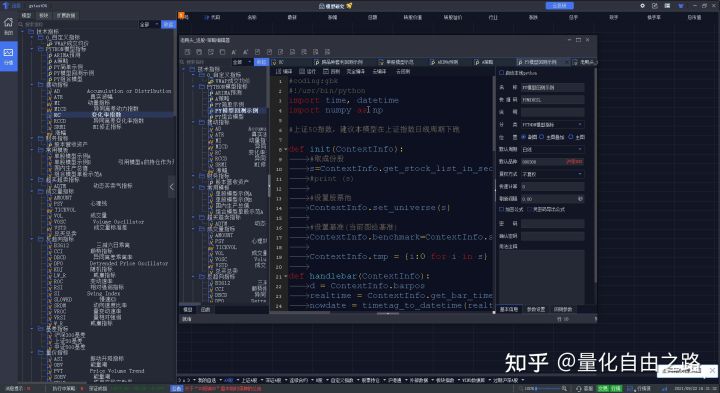
mini模式可以在外部运行,同时可以下载历史tick数据。
xtdata是xtquant库中提供行情相关数据的模块,本模块旨在提供精简直接的数据满足量化交易者的数
据需求,作为python库的形式可以被灵活添加到各种策略脚本中。
主要提供行情数据(历史和实时的K线和分笔)、财务数据、合约基础信息、板块和行业分类信息等通
用的行情数据
可以直接获取level2的数据
使用python代码直接运行,不用在qmt软件里面憋屈地写代码,可直接使用pycharm,vscode编写,且有代码提示,补全,好用多了。
附一个完整的策略例子。
保存为: demo.py
命令行下运行:
python demo.py
# 创建策略
#coding=utf-8
from xtquant.xttrader import XtQuantTrader, XtQuantTraderCallback
from xtquant.xtquant import StockAccount
from xtquant import xtconstant
class MyXtQuantTraderCallback(XtQuantTraderCallback):
def on_disconnected(self):
"""
连接断开
:return:
"""
print("connection lost")
def on_stock_order(self, order):
"""
委托回报推送
:param order: XtOrder对象
:return:
"""
print("on order callback:")
print(order.stock_code, order.order_status, order.order_sysid)
def on_stock_asset(self, asset):
"""
资金变动推送
:param asset: XtAsset对象
:return:
"""
print("on asset callback")
print(asset.account_id, asset.cash, asset.total_asset)
def on_stock_trade(self, trade):
"""
成交变动推送
:param trade: XtTrade对象
:return:
"""
print("on trade callback")
print(trade.account_id, trade.stock_code, trade.order_id)
def on_stock_position(self, position):
"""
持仓变动推送
:param position: XtPosition对象
:return:
"""
print("on position callback")
print(position.stock_code, position.volume)
def on_order_error(self, order_error):
"""
委托失败推送
:param order_error:XtOrderError 对象
:return:
"""
print("on order_error callback")
print(order_error.order_id, order_error.error_id, order_error.error_msg)
def on_cancel_error(self, cancel_error):
"""
撤单失败推送
:param cancel_error: XtCancelError 对象
:return:
"""
print("on cancel_error callback")
print(cancel_error.order_id, cancel_error.error_id,
cancel_error.error_msg)
def on_order_stock_async_response(self, response):
"""
异步下单回报推送
:param response: XtOrderResponse 对象
:return:
"""
print("on_order_stock_async_response")
print(response.account_id, response.order_id, response.seq)
if __name__ == "__main__":
print("demo test")
# path为mini qmt客户端安装目录下userdata_mini路径
path = 'D:\\迅投极速交易终端 睿智融科版\\userdata_mini'
# session_id为会话编号,策略使用方对于不同的Python策略需要使用不同的会话编号
session_id = 123456
xt_trader = XtQuantTrader(path, session_id)
# 创建资金账号为1000000365的证券账号对象
acc = StockAccount('1000000365')
# 创建交易回调类对象,并声明接收回调
callback = MyXtQuantTraderCallback()
xt_trader.register_callback(callback)
# 启动交易线程
xt_trader.start()
# 建立交易连接,返回0表示连接成功
connect_result = xt_trader.connect()
print(connect_result)
# 对交易回调进行订阅,订阅后可以收到交易主推,返回0表示订阅成功
subscribe_result = xt_trader.subscribe(acc)
print(subscribe_result)
stock_code = '600000.SH'
# 使用指定价下单,接口返回订单编号,后续可以用于撤单操作以及查询委托状态
print("order using the fix price:")
fix_result_order_id = xt_trader.order_stock(acc, stock_code,
xtconstant.STOCK_BUY, 200, xtconstant.FIX_PRICE, 10.5, 'strategy_name',
'remark')
print(fix_result_order_id)
# 使用订单编号撤单
print("cancel order:")
cancel_order_result = xt_trader.cancel_order_stock(acc, fix_result_order_id)
print(cancel_order_result)
# 使用异步下单接口,接口返回下单请求序号seq,seq可以和on_order_stock_async_response
的委托反馈response对应起来
print("order using async api:")
async_seq = xt_trader.order_stock(acc, stock_code, xtconstant.STOCK_BUY,
200, xtconstant.FIX_PRICE, 10.5, 'strategy_name', 'remark')
print(async_seq)
# 查询证券资产
print("query asset:")
asset = xt_trader.query_stock_asset(acc)
if asset:
print("asset:")
print("cash {0}".format(asset.cash))
# 根据订单编号查询委托
print("query order:")
order = xt_trader.query_stock_order(acc, fix_result_order_id)
if order:
print("order:")
print("order {0}".format(order.order_id))
# 查询当日所有的委托
print("query orders:")
orders = xt_trader.query_stock_orders(acc)
print("orders:", len(orders))
if len(orders) != 0:
print("last order:")
print("{0} {1} {2}".format(orders[-1].stock_code,
orders[-1].order_volume, orders[-1].price))
# 查询当日所有的成交
print("query trade:")
trades = xt_trader.query_stock_trades(acc)
print("trades:", len(trades))
if len(trades) != 0:
print("last trade:")
print("{0} {1} {2}".format(trades[-1].stock_code,
trades[-1].traded_volume, trades[-1].traded_price))
# 查询当日所有的持仓
print("query positions:")
positions = xt_trader.query_stock_positions(acc)
print("positions:", len(positions))
if len(positions) != 0:
print("last position:")
print("{0} {1} {2}".format(positions[-1].account_id,
positions[-1].stock_code, positions[-1].volume))
# 根据股票代码查询对应持仓
print("query position:")
position = xt_trader.query_stock_position(acc, stock_code)
if position:
print("position:")
print("{0} {1} {2}".format(position.account_id, position.stock_code,
position.volume))
# 阻塞线程,接收交易推送
xt_trader.run_forever()
开通xtquant的方式可以咨询。
目前开户费率低,门槛低,提供技术支持与交流。
需要的朋友,可以扫码咨询:

备注开户
ptrade每天自动打新 (新股和可转债)附python代码
量化交易-Ptrade-QMT • 李魔佛 发表了文章 • 0 个评论 • 5063 次浏览 • 2022-07-28 11:10
def initialize(context):
g.flag = False
log.info("initialize g.flag=" + str(g.flag) )
def before_trading_start(context, data):
g.flag = False
log.info("before_trading_start g.flag=" + str(g.flag) )
def handle_data(context, data):
if not g.flag and time.strftime("%H:%M:%S", time.localtime()) > '09:35:00':
# 自动打新
log.info("自动打新")
ipo_stocks_order()
g.flag = True
def on_order_response(context, order_list):
# 该函数会在委托回报返回时响应
log.info(order_list)
交易页面
程序运行返回代码:
点击查看大图
【如果没有打新额度或者没有开通对应的权限,会显示可收购为0】
底下的成功的是可转债申购成功。
然后可以到券商app上看看是否已经有自动申购成功的记录。 查看全部
import time
def initialize(context):
g.flag = False
log.info("initialize g.flag=" + str(g.flag) )
def before_trading_start(context, data):
g.flag = False
log.info("before_trading_start g.flag=" + str(g.flag) )
def handle_data(context, data):
if not g.flag and time.strftime("%H:%M:%S", time.localtime()) > '09:35:00':
# 自动打新
log.info("自动打新")
ipo_stocks_order()
g.flag = True
def on_order_response(context, order_list):
# 该函数会在委托回报返回时响应
log.info(order_list)
交易页面
程序运行返回代码:
点击查看大图
【如果没有打新额度或者没有开通对应的权限,会显示可收购为0】
底下的成功的是可转债申购成功。
然后可以到券商app上看看是否已经有自动申购成功的记录。
ciso8601 性能对比 datetime 默认库
python • 李魔佛 发表了文章 • 0 个评论 • 2206 次浏览 • 2022-07-22 12:04
In [2]: ds = u'2014-01-09T21:48:00.921000'
In [3]: %timeit ciso8601.parse_datetime(ds)
1000000 loops, best of 3: 204 ns per loop
In [4]: %timeit datetime.datetime.strptime(ds, "%Y-%m-%dT%H:%M:%S.%f")
100000 loops, best of 3: 15 µs per loop
In [5]: %timeit dateutil.parser.parse(ds)
10000 loops, best of 3: 122 µs per loop
In [6]: %timeit aniso8601.parse_datetime(ds)
10000 loops, best of 3: 28.9 µs per loop
In [7]: %timeit iso8601.parse_date(ds)
10000 loops, best of 3: 42 µs per loop
In [8]: %timeit isodate.parse_datetime(ds)
10000 loops, best of 3: 69.4 µs per loop
In [9]: %timeit arrow.get(ds).datetime
10000 loops, best of 3: 87 µs per loopIn [1]: import datetime, aniso8601, iso8601, isodate, dateutil.parser, arrow, ciso8601
In [2]: ds = u'2014-01-09T21:48:00.921000+05:30'
In [3]: %timeit ciso8601.parse_datetime(ds)
1000000 loops, best of 3: 525 ns per loop
In [4]: %timeit dateutil.parser.parse(ds)
10000 loops, best of 3: 162 µs per loop
In [5]: %timeit aniso8601.parse_datetime(ds)
10000 loops, best of 3: 36.8 µs per loop
In [6]: %timeit iso8601.parse_date(ds)
10000 loops, best of 3: 53.5 µs per loop
In [7]: %timeit isodate.parse_datetime(ds)
10000 loops, best of 3: 82.6 µs per loop
In [8]: %timeit arrow.get(ds).datetime
10000 loops, best of 3: 104 µs per loop
Even with time zone information, ciso8601 is 70x as fast as aniso8601.
Tested on Python 2.7.10 on macOS 10.12.6 using the following modules:
ciso8601 是纳秒级别的,如果要对上千万的数据操作,建议使用ciso这个C库。
查看全部
In [1]: import datetime, aniso8601, iso8601, isodate, dateutil.parser, arrow, ciso8601
In [2]: ds = u'2014-01-09T21:48:00.921000'
In [3]: %timeit ciso8601.parse_datetime(ds)
1000000 loops, best of 3: 204 ns per loop
In [4]: %timeit datetime.datetime.strptime(ds, "%Y-%m-%dT%H:%M:%S.%f")
100000 loops, best of 3: 15 µs per loop
In [5]: %timeit dateutil.parser.parse(ds)
10000 loops, best of 3: 122 µs per loop
In [6]: %timeit aniso8601.parse_datetime(ds)
10000 loops, best of 3: 28.9 µs per loop
In [7]: %timeit iso8601.parse_date(ds)
10000 loops, best of 3: 42 µs per loop
In [8]: %timeit isodate.parse_datetime(ds)
10000 loops, best of 3: 69.4 µs per loop
In [9]: %timeit arrow.get(ds).datetime
10000 loops, best of 3: 87 µs per loop
In [1]: import datetime, aniso8601, iso8601, isodate, dateutil.parser, arrow, ciso8601
In [2]: ds = u'2014-01-09T21:48:00.921000+05:30'
In [3]: %timeit ciso8601.parse_datetime(ds)
1000000 loops, best of 3: 525 ns per loop
In [4]: %timeit dateutil.parser.parse(ds)
10000 loops, best of 3: 162 µs per loop
In [5]: %timeit aniso8601.parse_datetime(ds)
10000 loops, best of 3: 36.8 µs per loop
In [6]: %timeit iso8601.parse_date(ds)
10000 loops, best of 3: 53.5 µs per loop
In [7]: %timeit isodate.parse_datetime(ds)
10000 loops, best of 3: 82.6 µs per loop
In [8]: %timeit arrow.get(ds).datetime
10000 loops, best of 3: 104 µs per loop
Even with time zone information, ciso8601 is 70x as fast as aniso8601.
Tested on Python 2.7.10 on macOS 10.12.6 using the following modules:
ciso8601 是纳秒级别的,如果要对上千万的数据操作,建议使用ciso这个C库。
python安装demjson报错:error in setup command: use_2to3 is invalid.
python • 李魔佛 发表了文章 • 0 个评论 • 3527 次浏览 • 2022-06-06 19:23
随便整一个
pip install setuptools==57.5.0
原因:在setuptools 58之后的版本已经废弃了use_2to3所以安装一个旧版本的setuptools就可以了
随便整一个
pip install setuptools==57.5.0
B站批量下载某个UP主的所有视频
python • 李魔佛 发表了文章 • 0 个评论 • 4604 次浏览 • 2022-05-21 18:48
使用python实现
https://github.com/Rockyzsu/bilibili
B站视频下载
自动批量下载B站一个系列的视频
下载某个UP主的所有视频
使用:
下载you-get库,git clone https://github.com/soimort/you-get.git 复制其本地路径,比如/root/you-get/you-get
初次运行,删除history.db 文件, 修改配置文件config.py
START=1 # 下载系列视频的 第一个
END=1 # 下载系列视频的最后一个 , 比如一个系列教程有30个视频, start=5 ,end = 20 下载从第5个到第20个
ID='BV1oK411L7au' # 视频的ID
YOU_GET_PATH='/home/xda/othergit/you-get/you-get' # 你的you-get路径
MINS=1 # 每次循环等待1分钟
user_id = '518973111' # UP主的ID
total_page = 3 # up主的视频的页数
执行 python downloader.py ,进行下载循环
python people.py ,把某个up主的视频链接加入到待下载队列
python add_data.py --id=BV1oK411L7au --start=4 --end=8 下载视频id为BV1oK411L7au的系列教程,从第4开始,到第8个结束,如果只有一个的话,start和end设为1即可。
可以不断地往队列里面添加下载链接。
主要代码:
# @Time : 2019/1/28 14:19
# @File : youtube_downloader.py
import logging
import os
import subprocess
import datetime
import sqlite3
import time
from config import YOU_GET_PATH,MINS
CMD = 'python {} {}'
filename = 'url.txt'
class SQLite():
def __init__(self):
self.conn = sqlite3.connect('history.db')
self.cursor = self.conn.cursor()
self.create_table()
def create_table(self):
create_sql = 'create table if not exists tb_download (url varchar(100),status tinyint,crawltime datetime)'
create_record_tb = 'create table if not exists tb_record (idx varchar(100) PRIMARY KEY,start tinyint,end tinyint,status tinyint)'
self.cursor.execute(create_record_tb)
self.conn.commit()
self.cursor.execute(create_sql)
self.conn.commit()
def exists(self,url):
querySet = 'select * from tb_download where url = ? and status = 1'
self.cursor.execute(querySet,(url,))
ret = self.cursor.fetchone()
return True if ret else False
def insert_history(self,url,status):
query = 'select * from tb_download where url=?'
self.cursor.execute(query,(url,))
ret = self.cursor.fetchone()
current = datetime.datetime.now()
if ret:
insert_sql='update tb_download set status=?,crawltime=? where url = ?'
args=(status,status,current,url)
else:
insert_sql = 'insert into tb_download values(?,?,?)'
args=(url,status,current)
try:
self.cursor.execute(insert_sql,args)
except:
self.conn.rollback()
return False
else:
self.conn.commit()
return True
def get(self):
sql = 'select idx,start,end from tb_record where status=0'
self.cursor.execute(sql)
ret= self.cursor.fetchone()
return ret
def set(self,idx):
print('set status =1')
sql='update tb_record set status=1 where idx=?'
self.cursor.execute(sql,(idx,))
self.conn.commit()
def llogger(filename):
logger = logging.getLogger(filename) # 不加名称设置root logger
logger.setLevel(logging.DEBUG) # 设置输出级别
formatter = logging.Formatter(
'[%(asctime)s][%(filename)s][line: %(lineno)d]\[%(levelname)s] ## %(message)s)',
datefmt='%Y-%m-%d %H:%M:%S')
# 使用FileHandler输出到文件
prefix = os.path.splitext(filename)[0]
fh = logging.FileHandler(prefix + '.log')
fh.setLevel(logging.DEBUG)
fh.setFormatter(formatter)
# 使用StreamHandler输出到屏幕
ch = logging.StreamHandler()
ch.setLevel(logging.DEBUG)
ch.setFormatter(formatter)
# 添加两个Handler
logger.addHandler(ch)
logger.addHandler(fh)
return logger
logger = llogger('download.log')
sql_obj = SQLite()
def run():
while 1:
result = sql_obj.get()
print(result)
if result:
idx=result[0]
start=result[1]
end=result[2]
try:
download_bilibili(idx,start,end)
except:
pass
else:
sql_obj.set(idx)
else:
time.sleep(MINS*60)
def download_bilibili(id,start_page,total_page):
global doc
bilibili_url = 'https://www.bilibili.com/video/{}?p={}'
for i in range(start_page, total_page+1):
next_url = bilibili_url.format(id, i)
if sql_obj.exists(next_url):
print('have download')
continue
try:
command = CMD.format(YOU_GET_PATH, next_url)
p = subprocess.Popen(command, stdout=subprocess.PIPE, stderr=subprocess.PIPE,
shell=True)
output, error = p.communicate()
except Exception as e:
print('has execption')
sql_obj.insert_history(next_url,status=0)
logger.error(e)
continue
else:
output_str = output.decode()
if len(output_str) == 0:
sql_obj.insert_history(next_url,status=0)
logger.info('下载失败')
continue
logger.info('{} has been downloaded !'.format(next_url))
sql_obj.insert_history(next_url,status=1)
run()
查看全部

使用python实现
https://github.com/Rockyzsu/bilibili
B站视频下载
自动批量下载B站一个系列的视频
下载某个UP主的所有视频
使用:
下载you-get库,git clone https://github.com/soimort/you-get.git 复制其本地路径,比如/root/you-get/you-get
初次运行,删除history.db 文件, 修改配置文件config.py
START=1 # 下载系列视频的 第一个
END=1 # 下载系列视频的最后一个 , 比如一个系列教程有30个视频, start=5 ,end = 20 下载从第5个到第20个
ID='BV1oK411L7au' # 视频的ID
YOU_GET_PATH='/home/xda/othergit/you-get/you-get' # 你的you-get路径
MINS=1 # 每次循环等待1分钟
user_id = '518973111' # UP主的ID
total_page = 3 # up主的视频的页数
执行 python downloader.py ,进行下载循环
python people.py ,把某个up主的视频链接加入到待下载队列
python add_data.py --id=BV1oK411L7au --start=4 --end=8 下载视频id为BV1oK411L7au的系列教程,从第4开始,到第8个结束,如果只有一个的话,start和end设为1即可。
可以不断地往队列里面添加下载链接。
主要代码:
# @Time : 2019/1/28 14:19
# @File : youtube_downloader.py
import logging
import os
import subprocess
import datetime
import sqlite3
import time
from config import YOU_GET_PATH,MINS
CMD = 'python {} {}'
filename = 'url.txt'
class SQLite():
def __init__(self):
self.conn = sqlite3.connect('history.db')
self.cursor = self.conn.cursor()
self.create_table()
def create_table(self):
create_sql = 'create table if not exists tb_download (url varchar(100),status tinyint,crawltime datetime)'
create_record_tb = 'create table if not exists tb_record (idx varchar(100) PRIMARY KEY,start tinyint,end tinyint,status tinyint)'
self.cursor.execute(create_record_tb)
self.conn.commit()
self.cursor.execute(create_sql)
self.conn.commit()
def exists(self,url):
querySet = 'select * from tb_download where url = ? and status = 1'
self.cursor.execute(querySet,(url,))
ret = self.cursor.fetchone()
return True if ret else False
def insert_history(self,url,status):
query = 'select * from tb_download where url=?'
self.cursor.execute(query,(url,))
ret = self.cursor.fetchone()
current = datetime.datetime.now()
if ret:
insert_sql='update tb_download set status=?,crawltime=? where url = ?'
args=(status,status,current,url)
else:
insert_sql = 'insert into tb_download values(?,?,?)'
args=(url,status,current)
try:
self.cursor.execute(insert_sql,args)
except:
self.conn.rollback()
return False
else:
self.conn.commit()
return True
def get(self):
sql = 'select idx,start,end from tb_record where status=0'
self.cursor.execute(sql)
ret= self.cursor.fetchone()
return ret
def set(self,idx):
print('set status =1')
sql='update tb_record set status=1 where idx=?'
self.cursor.execute(sql,(idx,))
self.conn.commit()
def llogger(filename):
logger = logging.getLogger(filename) # 不加名称设置root logger
logger.setLevel(logging.DEBUG) # 设置输出级别
formatter = logging.Formatter(
'[%(asctime)s][%(filename)s][line: %(lineno)d]\[%(levelname)s] ## %(message)s)',
datefmt='%Y-%m-%d %H:%M:%S')
# 使用FileHandler输出到文件
prefix = os.path.splitext(filename)[0]
fh = logging.FileHandler(prefix + '.log')
fh.setLevel(logging.DEBUG)
fh.setFormatter(formatter)
# 使用StreamHandler输出到屏幕
ch = logging.StreamHandler()
ch.setLevel(logging.DEBUG)
ch.setFormatter(formatter)
# 添加两个Handler
logger.addHandler(ch)
logger.addHandler(fh)
return logger
logger = llogger('download.log')
sql_obj = SQLite()
def run():
while 1:
result = sql_obj.get()
print(result)
if result:
idx=result[0]
start=result[1]
end=result[2]
try:
download_bilibili(idx,start,end)
except:
pass
else:
sql_obj.set(idx)
else:
time.sleep(MINS*60)
def download_bilibili(id,start_page,total_page):
global doc
bilibili_url = 'https://www.bilibili.com/video/{}?p={}'
for i in range(start_page, total_page+1):
next_url = bilibili_url.format(id, i)
if sql_obj.exists(next_url):
print('have download')
continue
try:
command = CMD.format(YOU_GET_PATH, next_url)
p = subprocess.Popen(command, stdout=subprocess.PIPE, stderr=subprocess.PIPE,
shell=True)
output, error = p.communicate()
except Exception as e:
print('has execption')
sql_obj.insert_history(next_url,status=0)
logger.error(e)
continue
else:
output_str = output.decode()
if len(output_str) == 0:
sql_obj.insert_history(next_url,status=0)
logger.info('下载失败')
continue
logger.info('{} has been downloaded !'.format(next_url))
sql_obj.insert_history(next_url,status=1)
run()
python3的map是迭代器,不用for循环或者next触发是不会执行的
python • 李魔佛 发表了文章 • 0 个评论 • 2416 次浏览 • 2022-05-21 17:59
def update_data(id,start,end):
status=0
conn = sqlite3.connect('history.db')
cursor = conn.cursor()
insert_sql ='insert into tb_record values(?,?,?,?)'
try:
cursor.execute(insert_sql,(id,start,end,status))
except Exception as e:
print(e)
print('Error')
else:
conn.commit()
print("successfully insert")
bv_list = []
for i in range(1, total_page + 1):
bv_list.extend(visit(i))
print(bv_list)
map(lambda x:update_data(x,1,1),bv_list)
作用很简单,就是拿到列表后用map放入到sqlite里面。
但是上面的代码并不起作用。
因为map只是定义了一个迭代器,并没有被触发。
可以加一个list(map(lambda x:update_data(x,1,1),bv_list))
这样就可以执行了。 查看全部
def update_data(id,start,end):
status=0
conn = sqlite3.connect('history.db')
cursor = conn.cursor()
insert_sql ='insert into tb_record values(?,?,?,?)'
try:
cursor.execute(insert_sql,(id,start,end,status))
except Exception as e:
print(e)
print('Error')
else:
conn.commit()
print("successfully insert")
bv_list = []
for i in range(1, total_page + 1):
bv_list.extend(visit(i))
print(bv_list)
map(lambda x:update_data(x,1,1),bv_list)
作用很简单,就是拿到列表后用map放入到sqlite里面。
但是上面的代码并不起作用。
因为map只是定义了一个迭代器,并没有被触发。
可以加一个list(map(lambda x:update_data(x,1,1),bv_list))
这样就可以执行了。
dataframe如何 遍历所有的列?
python • 李魔佛 发表了文章 • 0 个评论 • 3232 次浏览 • 2022-05-21 02:16
可以使用df.items()
Python pandas.DataFrame.items用法及代码示例
用法:
DataFrame.items()
迭代(列名,系列)对。
遍历 DataFrame 列,返回一个包含列名和内容的元组作为一个系列。
生成(Yield):
label:对象
被迭代的 DataFrame 的列名。
content:Series
属于每个标签的列条目,作为一个系列。
例子:
>>> df = pd.DataFrame({'species':['bear', 'bear', 'marsupial'],
... 'population':[1864, 22000, 80000]},
... index=['panda', 'polar', 'koala'])
>>> df
species population
panda bear 1864
polar bear 22000
koala marsupial 80000
>>> for label, content in df.items():
... print(f'label:{label}')
... print(f'content:{content}', sep='\n')
...
label:species
content:
panda bear
polar bear
koala marsupial
Name:species, dtype:object
label:population
content:
panda 1864
polar 22000
koala 80000
Name:population, dtype:int64 查看全部
可以使用df.items()
Python pandas.DataFrame.items用法及代码示例
用法:
DataFrame.items()
迭代(列名,系列)对。
遍历 DataFrame 列,返回一个包含列名和内容的元组作为一个系列。
生成(Yield):
label:对象
被迭代的 DataFrame 的列名。
content:Series
属于每个标签的列条目,作为一个系列。
例子:
>>> df = pd.DataFrame({'species':['bear', 'bear', 'marsupial'],
... 'population':[1864, 22000, 80000]},
... index=['panda', 'polar', 'koala'])
>>> df
species population
panda bear 1864
polar bear 22000
koala marsupial 80000
>>> for label, content in df.items():
... print(f'label:{label}')
... print(f'content:{content}', sep='\n')
...
label:species
content:
panda bear
polar bear
koala marsupial
Name:species, dtype:object
label:population
content:
panda 1864
polar 22000
koala 80000
Name:population, dtype:int64
python3 安装demjson 报错 use_2to3 is invalid
python • 李魔佛 发表了文章 • 0 个评论 • 6306 次浏览 • 2022-04-18 20:19
Collecting demjson==2.2.4
Downloading https://pypi.doubanio.com/pack ... ar.gz (131 kB)
|████████████████████████████████| 131 kB 985 kB/s
ERROR: Command errored out with exit status 1:
command: /root/miniconda3/envs/py37/bin/python -c 'import io, os, sys, setuptools, tokenize; sys.argv[0] = '"'"'/tmp/pip-install-pj0ajcpl/demjson_86a1bab6643c4ed7a7b0c6bb6d3a43a2/setup.py'"'"'; __file__='"'"'/tmp/pip-install-pj0ajcpl/demjson_86a1bab6643c4ed7a7b0c6bb6d3a43a2/setup.py'"'"';f = getattr(tokenize, '"'"'open'"'"', open)(__file__) if os.path.exists(__file__) else io.StringIO('"'"'from setuptools import setup; setup()'"'"');code = f.read().replace('"'"'\r\n'"'"', '"'"'\n'"'"');f.close();exec(compile(code, __file__, '"'"'exec'"'"'))' egg_info --egg-base /tmp/pip-pip-egg-info-7ve4tu87
cwd: /tmp/pip-install-pj0ajcpl/demjson_86a1bab6643c4ed7a7b0c6bb6d3a43a2/
Complete output (3 lines):
/root/miniconda3/envs/py37/lib/python3.7/site-packages/setuptools/dist.py:760: UserWarning: Usage of dash-separated 'index-url' will not be supported in future versions. Please use the underscore name 'index_url' instead
% (opt, underscore_opt)
error in demjson setup command: use_2to3 is invalid.
记录一下解决办法:
setuptools 降级:
pip install --upgrade setuptools==57.5.0
然后再pip install demjson 即可
如果担心setuptools 修改到系统的其他库,可以创建一个虚拟环境。
然后在虚拟环境里面对setuptools 降级,再安装demjson
来个养眼图: 查看全部
ooking in indexes: https://pypi.douban.com/simple
Collecting demjson==2.2.4
Downloading https://pypi.doubanio.com/pack ... ar.gz (131 kB)
|████████████████████████████████| 131 kB 985 kB/s
ERROR: Command errored out with exit status 1:
command: /root/miniconda3/envs/py37/bin/python -c 'import io, os, sys, setuptools, tokenize; sys.argv[0] = '"'"'/tmp/pip-install-pj0ajcpl/demjson_86a1bab6643c4ed7a7b0c6bb6d3a43a2/setup.py'"'"'; __file__='"'"'/tmp/pip-install-pj0ajcpl/demjson_86a1bab6643c4ed7a7b0c6bb6d3a43a2/setup.py'"'"';f = getattr(tokenize, '"'"'open'"'"', open)(__file__) if os.path.exists(__file__) else io.StringIO('"'"'from setuptools import setup; setup()'"'"');code = f.read().replace('"'"'\r\n'"'"', '"'"'\n'"'"');f.close();exec(compile(code, __file__, '"'"'exec'"'"'))' egg_info --egg-base /tmp/pip-pip-egg-info-7ve4tu87
cwd: /tmp/pip-install-pj0ajcpl/demjson_86a1bab6643c4ed7a7b0c6bb6d3a43a2/
Complete output (3 lines):
/root/miniconda3/envs/py37/lib/python3.7/site-packages/setuptools/dist.py:760: UserWarning: Usage of dash-separated 'index-url' will not be supported in future versions. Please use the underscore name 'index_url' instead
% (opt, underscore_opt)
error in demjson setup command: use_2to3 is invalid.
记录一下解决办法:
setuptools 降级:
pip install --upgrade setuptools==57.5.0
然后再pip install demjson 即可
如果担心setuptools 修改到系统的其他库,可以创建一个虚拟环境。
然后在虚拟环境里面对setuptools 降级,再安装demjson
来个养眼图:

centos/ubuntu linux 下 python matplotlib 绘图中文标题乱码 解决
Linux • 李魔佛 发表了文章 • 0 个评论 • 2948 次浏览 • 2022-04-15 22:23
测试代码:import matplotlib as mpl
import matplotlib.pyplot as plt
from matplotlib import rcParams
plt.rcParams['font.family'] = 'sans-serif'
plt.rcParams['font.sans-serif'] = ['simhei'] # 指定默认字体
plt.rcParams['axes.unicode_minus'] = False
plt.title(r'宋体 Times New Roman')
plt.axis('off')
plt.savefig('usestix.png')
每次换机器都遇到这个问题,所以记录下来,以免日后又在折腾
首先找到一个ttf格式的中文字体,windows系统的可以在C盘的system里面找找。
我用的是微软雅黑。msyh.ttf , 需要的可以到公众号里面取。 后台回复: msyh.ttf 即可
或者simhei.ttfcd /usr/share/fonts/
sudo mkdir chinese
sudo cp simhei.ttf /usr/share/fonts/chinese/
sudo chmod -R 755 /usr/share/fonts/chinese
更新缓存mkfontscale
mkfontdir
fc-cache
注意,如果你的系统没有上述命令,需要使用yum install mkfontscale mkfontdir c-cache安装
然后接下来这一步,很重要。
清理缓存,不然不会生效!!!!rm -rf ~/.cache/matplotlib
matplotlib:
同时把这个msyh.ttf的文件复制到matplotlib库下的文件夹:
~python3.9/site-packages/matplotlib/mpl-data/fonts/ttf/
下面
然后运行程序,搞定~
公众号:可转债量化分析
后台回复 : msyh.ttf 或者 simhei.ttf 即可获取字体文件。 查看全部
测试代码:
import matplotlib as mpl
import matplotlib.pyplot as plt
from matplotlib import rcParams
plt.rcParams['font.family'] = 'sans-serif'
plt.rcParams['font.sans-serif'] = ['simhei'] # 指定默认字体
plt.rcParams['axes.unicode_minus'] = False
plt.title(r'宋体 Times New Roman')
plt.axis('off')
plt.savefig('usestix.png')
每次换机器都遇到这个问题,所以记录下来,以免日后又在折腾
首先找到一个ttf格式的中文字体,windows系统的可以在C盘的system里面找找。
我用的是微软雅黑。msyh.ttf , 需要的可以到公众号里面取。 后台回复: msyh.ttf 即可
或者simhei.ttf
cd /usr/share/fonts/
sudo mkdir chinese
sudo cp simhei.ttf /usr/share/fonts/chinese/
sudo chmod -R 755 /usr/share/fonts/chinese
更新缓存
mkfontscale
mkfontdir
fc-cache
注意,如果你的系统没有上述命令,需要使用yum install mkfontscale mkfontdir c-cache安装
然后接下来这一步,很重要。
清理缓存,不然不会生效!!!!
rm -rf ~/.cache/matplotlib
matplotlib:
同时把这个msyh.ttf的文件复制到matplotlib库下的文件夹:
~python3.9/site-packages/matplotlib/mpl-data/fonts/ttf/
下面
然后运行程序,搞定~
公众号:可转债量化分析

后台回复 : msyh.ttf 或者 simhei.ttf 即可获取字体文件。
知识星球获取文章链接与数据
python爬虫 • 李魔佛 发表了文章 • 0 个评论 • 2812 次浏览 • 2022-03-21 20:15
既然官方不提供这个功能,只能自己使用爬虫手段获取了,额。

既然官方不提供这个功能,只能自己使用爬虫手段获取了,额。
python AES 加密 windows和linux平台的不同
python • 李魔佛 发表了文章 • 0 个评论 • 3012 次浏览 • 2022-03-19 11:18
实际两个平台使用pip install安装的aes库不一样。
windows报错
File "C:\anaconda\lib\site-packages\Crypto\Cipher\__init__.py", line 77, in _create_cipher
raise TypeError("IV is not meaningful for the ECB mode")
TypeError: IV is not meaningful for the ECB mode
只需要把AES.new() 的参数里面的iv给去掉就可以了。
查看全部
实际两个平台使用pip install安装的aes库不一样。
windows报错
File "C:\anaconda\lib\site-packages\Crypto\Cipher\__init__.py", line 77, in _create_cipher
raise TypeError("IV is not meaningful for the ECB mode")
TypeError: IV is not meaningful for the ECB mode
只需要把AES.new() 的参数里面的iv给去掉就可以了。

不是所有的bytes都可以转换为string
python • 李魔佛 发表了文章 • 0 个评论 • 2618 次浏览 • 2022-01-14 14:56
b.decode('utf8')
如果报错:UnicodeDecodeError: 'utf-8' codec can't decode byte 0xe4 in position 1: invalid continuation byte
说明字节无法字节转为string,
上面的字节是可以正常decode为utf8
而改下字节数据
所以你试下decode下面的字节:c=b'\x1e\xe4\xd5\x97\x9a#\x99kC\xadD\x7f\x9a\xc2G\x92'
是无法解析的。
这个是没有办法的,如果要硬刚 。
可以加入参数errors = ‘replace’
b.decode('utf8',errors='replace')
这样就不会报错。但是这也只是输出的乱码。
正确的姿势是要看看你的字节的最原始编码格式。如果是gbk,那么就应该使用b.decode('gbk')
查看全部
b.decode('utf8')
如果报错:
UnicodeDecodeError: 'utf-8' codec can't decode byte 0xe4 in position 1: invalid continuation byte
说明字节无法字节转为string,
上面的字节是可以正常decode为utf8
而改下字节数据
所以你试下decode下面的字节:
c=b'\x1e\xe4\xd5\x97\x9a#\x99kC\xadD\x7f\x9a\xc2G\x92'
是无法解析的。
这个是没有办法的,如果要硬刚 。
可以加入参数errors = ‘replace’
b.decode('utf8',errors='replace')这样就不会报错。但是这也只是输出的乱码。
正确的姿势是要看看你的字节的最原始编码格式。如果是gbk,那么就应该使用b.decode('gbk')
目前能用的 可以下载youtube 油管视频的方法 合集 亲测
网络 • 李魔佛 发表了文章 • 0 个评论 • 5778 次浏览 • 2021-11-08 13:03
Subject: Discontinuation of Service in the United States
April 16, 2020
Dear Savefrom User:
As you may have heard, our industry has been under strenuous attacks by certain US copyright holders. Because of these attacks, it has become financially impractical for Savefrom to continue to provide services in the United States.
Accordingly, Savefrom will be terminating its services in the United States as of April 28, 2020.
We thank you for your past loyalty and patronage and wish you health and safety during the present health crisis and beyond.
Very truly yours,
Savefrom所以这个网页下载的方法失效了。
还有其他 可以使用的方法:
方法一 you-get
这是一个python库。
在github下载下来
默认github下载是很卡,且断断续续,具体原因,你懂的。
所以笔者提供一个镜像下载,代码也是最新的。
git clone https://hub.fastgit.org/soimort/you-get.git
运行上面命令即可。
然后下载过程就是切换的CMD命令行:
python you-get --debug https://www.youtube.com/watch?v=59a-XNPngrw
静静等待即可下载。
查看全部
Subject: Discontinuation of Service in the United States所以这个网页下载的方法失效了。
April 16, 2020
Dear Savefrom User:
As you may have heard, our industry has been under strenuous attacks by certain US copyright holders. Because of these attacks, it has become financially impractical for Savefrom to continue to provide services in the United States.
Accordingly, Savefrom will be terminating its services in the United States as of April 28, 2020.
We thank you for your past loyalty and patronage and wish you health and safety during the present health crisis and beyond.
Very truly yours,
Savefrom
还有其他 可以使用的方法:
方法一 you-get
这是一个python库。
在github下载下来
默认github下载是很卡,且断断续续,具体原因,你懂的。
所以笔者提供一个镜像下载,代码也是最新的。
git clone https://hub.fastgit.org/soimort/you-get.git
运行上面命令即可。
然后下载过程就是切换的CMD命令行:
python you-get --debug https://www.youtube.com/watch?v=59a-XNPngrw
静静等待即可下载。

通达信公式转python代码
股票 • 量化大师 发表了文章 • 0 个评论 • 3777 次浏览 • 2021-08-12 18:10

如何使用控制台将动态加载数据刷新出来啊????
python • 低调的哥哥 回复了问题 • 2 人关注 • 1 个回复 • 3589 次浏览 • 2021-08-11 02:06
python 上传文件夹内图片到七牛,同时加入批量删除,单个删除
python • 李魔佛 发表了文章 • 0 个评论 • 2827 次浏览 • 2021-08-07 17:08
然后把key写入到环境变量或者写到下面的python文件里面from qiniu import Auth, put_file,BucketManager,build_batch_delete
import os
import fire
access_key = os.getenv('qiniu_access_key')
secret_key = os.getenv('qiniu_secret_key')
bucket_name = '' # 你的空间名称
HOST ='[url]http://xximg.xxx.com/{}'[/url] # 可以不用填
TEMPLATE = '\n\n\n\n'
def upload(file,category=''):
#构建鉴权对象
q = Auth(access_key, secret_key)
#要上传的空间
#上传后保存的文件名
key = category +'/' + os.path.split(file)[1]
#生成上传 Token,可以指定过期时间等
token = q.upload_token(bucket_name, key) # 永不过期
#要上传文件的本地路径
ret, info = put_file(token, key, file, version='v1')
print(ret)
print(info)
return HOST.format(ret['key'])
def bulk_upload(path,category=''):
with open('qiniu_image.md','a+') as fp:
for file in os.listdir(path):
full_path = os.path.join(path,file)
if os.path.isfile(full_path):
host_url = upload(full_path,category)
fp.write(TEMPLATE.format(host_url,host_url))
def get_file_info(prefix,limit = 10):
q = Auth(access_key, secret_key)
bucket = BucketManager(q)
delimiter = None
marker = None
ret, eof, info = bucket.list(bucket_name, prefix, marker, limit, delimiter)
# assert len(ret.get('items')) is not None
url_list=[]
for item in ret.get('items',):
url_list.append(item['key'])
# print(url_list)
# print(len(url_list))
return url_list,len(url_list)
def bulk_delete(prefix,limit=None):
url_list,lens = get_file_info(prefix,limit=limit)
q = Auth(access_key, secret_key)
bucket = BucketManager(q)
ops = build_batch_delete(bucket_name, url_list)
ret, info = bucket.batch(ops)
print(info)
print(ret)
def delete_one(key):
q = Auth(access_key, secret_key)
#初始化BucketManager
bucket = BucketManager(q)
#你要测试的空间, 并且这个key在你空间中存在
# key = 'python-logo.png'
#删除bucket_name 中的文件 key
ret, info = bucket.delete(bucket_name, key)
print(info)
print(ret)
# assert ret == {}
def bulk_delete_ones(prefix):
url_list,lens = get_file_info(prefix,limit=10)
for url in url_list:
delete_one(url)
# print(url)
def main(path,category):
if os.path.isdir(path):
bulk_upload(path,category)
elif os.path.isfile(path):
upload(path,category)
else:
raise ValueError('文件不存在')
get_file_info()
bulk_delete('resource')
bulk_delete_ones('resource')
delete_one('resource/data_beauty.png')
if __name__ == '__main__':
fire.Fire(main)
然后运行:
python main.py --path='C:\Photo' --category='person'
运行后会上传到七牛的虚拟目录 person目录下
如果要删除,bulk_delete批量删除某个前缀或者文件夹的 查看全部
然后把key写入到环境变量或者写到下面的python文件里面
from qiniu import Auth, put_file,BucketManager,build_batch_delete
import os
import fire
access_key = os.getenv('qiniu_access_key')
secret_key = os.getenv('qiniu_secret_key')
bucket_name = '' # 你的空间名称
HOST ='[url]http://xximg.xxx.com/{}'[/url] # 可以不用填
TEMPLATE = '\n\n\n\n'
def upload(file,category=''):
#构建鉴权对象
q = Auth(access_key, secret_key)
#要上传的空间
#上传后保存的文件名
key = category +'/' + os.path.split(file)[1]
#生成上传 Token,可以指定过期时间等
token = q.upload_token(bucket_name, key) # 永不过期
#要上传文件的本地路径
ret, info = put_file(token, key, file, version='v1')
print(ret)
print(info)
return HOST.format(ret['key'])
def bulk_upload(path,category=''):
with open('qiniu_image.md','a+') as fp:
for file in os.listdir(path):
full_path = os.path.join(path,file)
if os.path.isfile(full_path):
host_url = upload(full_path,category)
fp.write(TEMPLATE.format(host_url,host_url))
def get_file_info(prefix,limit = 10):
q = Auth(access_key, secret_key)
bucket = BucketManager(q)
delimiter = None
marker = None
ret, eof, info = bucket.list(bucket_name, prefix, marker, limit, delimiter)
# assert len(ret.get('items')) is not None
url_list=[]
for item in ret.get('items',):
url_list.append(item['key'])
# print(url_list)
# print(len(url_list))
return url_list,len(url_list)
def bulk_delete(prefix,limit=None):
url_list,lens = get_file_info(prefix,limit=limit)
q = Auth(access_key, secret_key)
bucket = BucketManager(q)
ops = build_batch_delete(bucket_name, url_list)
ret, info = bucket.batch(ops)
print(info)
print(ret)
def delete_one(key):
q = Auth(access_key, secret_key)
#初始化BucketManager
bucket = BucketManager(q)
#你要测试的空间, 并且这个key在你空间中存在
# key = 'python-logo.png'
#删除bucket_name 中的文件 key
ret, info = bucket.delete(bucket_name, key)
print(info)
print(ret)
# assert ret == {}
def bulk_delete_ones(prefix):
url_list,lens = get_file_info(prefix,limit=10)
for url in url_list:
delete_one(url)
# print(url)
def main(path,category):
if os.path.isdir(path):
bulk_upload(path,category)
elif os.path.isfile(path):
upload(path,category)
else:
raise ValueError('文件不存在')
get_file_info()
bulk_delete('resource')
bulk_delete_ones('resource')
delete_one('resource/data_beauty.png')
if __name__ == '__main__':
fire.Fire(main)
然后运行:
python main.py --path='C:\Photo' --category='person'
运行后会上传到七牛的虚拟目录 person目录下
如果要删除,bulk_delete批量删除某个前缀或者文件夹的
为什么登录成功但是爬取不到其他数据
python爬虫 • 低调的哥哥 回复了问题 • 2 人关注 • 1 个回复 • 3718 次浏览 • 2021-08-04 01:17
优矿接口的日期定义真让人蛋疼
股票 • 李魔佛 发表了文章 • 0 个评论 • 2581 次浏览 • 2021-07-17 20:24
然后接口查询结果返回的是YYYY-MM-DD
难道统一一下这么难吗?
然后接口查询结果返回的是YYYY-MM-DD
难道统一一下这么难吗?
开通Ptrade Python量化接口 国金证券/国盛证券
股票 • 绫波丽 发表了文章 • 0 个评论 • 25082 次浏览 • 2021-07-06 08:40
而退而求其次使用按键精灵,模拟点击交易软件进行点击下单,非常不稳定,无法判断下单后是否成交,也无法实时获取行情数据。如果使用tushare或者新浪接口数据,扫描一次全市场的行情用时很久且不稳定,等扫描结束,再下单,此时价格可能已经是几分钟前的了,且此类接口调用次数多是会被封IP的。
笔者使用的是券商提供的量化软件:Ptrade。是恒生电子研发的提供给机构使用的程序化交易软件。提供策略回测,下单API接口,实时行情获取,并且使用的开发语言python,易于上手。
策略回测与实盘交易
研究页面
研究页面,熟悉python jupyter notebook的朋友对这个界面肯定很熟悉。
研究的页面实际就运行你逐行输出调试程序,了解每个函数的具体使用,或者你策略的中途结果调试。
回测策略
实际代码需要在回测策略里面写,写完后确定无误,就可以放在仿真环境下真实运行。如果你运行得到的结果很满意,那么就可以直接部署到实盘服务器上。实盘服务器是在券商那边,不需要个人购买服务器,也不需要本地开着这个Ptrade,就是说不需要在个人电脑上一直开着跑,你的最终代码和程序是在券商服务器上部署与运行,除非有报错异常停止,不然在你不暂停或者停止的前提下,可以一直运行下去。
条件满足后下单
可视化量化
同时也提供一些常见的现成的量化策略,选中后只要鼠标点点点也能够自动化跑这些策略了,当然里面很多参数都可以用鼠标点点点修改。
接口文档也非常详细:
一些常见策略代码:
集合竞价追涨停策略def initialize(context):
# 初始化此策略
# 设置我们要操作的股票池, 这里我们只操作一支股票
g.security = '600570.SS'
set_universe(g.security)
#每天9:23分运行集合竞价处理函数
run_daily(context, aggregate_auction_func, time='9:23')
def aggregate_auction_func(context):
stock = g.security
#最新价
snapshot = get_snapshot(stock)
price = snapshot[stock]['last_px']
#涨停价
up_limit = snapshot[stock]['up_px']
#如果最新价不小于涨停价,买入
if float(price) >= float(up_limit):
order(g.security, 100, limit_price=up_limit)
def handle_data(context, data):
pass
双均线策略def initialize(context):
# 初始化此策略
# 设置我们要操作的股票池, 这里我们只操作一支股票
g.security = '600570.SS'
set_universe(g.security)
pass
#当五日均线高于十日均线时买入,当五日均线低于十日均线时卖出
def handle_data(context, data):
security = g.security
#得到十日历史价格
df = get_history(10, '1d', 'close', security, fq=None, include=False)
# 得到五日均线价格
ma5 = round(df['close'][-5:].mean(), 3)
# 得到十日均线价格
ma10 = round(df['close'][-10:].mean(), 3)
# 取得昨天收盘价
price = data[security]['close']
# 得到当前资金余额
cash = context.portfolio.cash
# 如果当前有余额,并且五日均线大于十日均线
if ma5 > ma10:
# 用所有 cash 买入股票
order_value(security, cash)
# 记录这次买入
log.info("Buying %s" % (security))
# 如果五日均线小于十日均线,并且目前有头寸
elif ma5 < ma10 and get_position(security).amount > 0:
# 全部卖出
order_target(security, 0)
# 记录这次卖出
log.info("Selling %s" % (security))
tick级别均线策略
通俗点就是按照秒级别进行操作。def initialize(context):
# 初始化此策略
# 设置我们要操作的股票池, 这里我们只操作一支股票
g.security = '600570.SS'
set_universe(g.security)
#每3秒运行一次主函数
run_interval(context, func, seconds=3)
#盘前准备历史数据
def before_trading_start(context, data):
history = get_history(10, '1d', 'close', g.security, fq='pre', include=False)
g.close_array = history['close'].values
#当五日均线高于十日均线时买入,当五日均线低于十日均线时卖出
def func(context):
stock = g.security
#获取最新价
snapshot = get_snapshot(stock)
price = snapshot[stock]['last_px']
# 得到五日均线价格
days = 5
ma5 = get_MA_day(stock, days, g.close_array[-4:], price)
# 得到十日均线价格
days = 10
ma10 = get_MA_day(stock, days, g.close_array[-9:], price)
# 得到当前资金余额
cash = context.portfolio.cash
# 如果当前有余额,并且五日均线大于十日均线
if ma5 > ma10:
# 用所有 cash 买入股票
order_value(stock, cash)
# 记录这次买入
log.info("Buying %s" % (stock))
# 如果五日均线小于十日均线,并且目前有头寸
elif ma5 < ma10 and get_position(stock).amount > 0:
# 全部卖出
order_target(stock, 0)
# 记录这次卖出
log.info("Selling %s" % (stock))
#计算实时均线函数
def get_MA_day(stock,days,close_array,current_price):
close_sum = close_array[-(days-1):].sum()
MA = (current_price + close_sum)/days
return MA
def handle_data(context, data):
pass
macd策略def f_expma(N,m,EXPMA1,price):
a = m/(N+1)
EXPMA2 = a * price + (1 - a)*EXPMA1
return EXPMA2 #2为后一天值
#定义macd函数,输入平滑系数参数、前一日值,输出当日值
def macd(N1,N2,N3,m,EXPMA12_1,EXPMA26_1,DEA1,price):
EXPMA12_2 = f_expma(N1,m,EXPMA12_1,price)
EXPMA26_2 = f_expma(N2,m,EXPMA26_1,price)
DIF2 = EXPMA12_2 - EXPMA26_2
a = m/(N3+1)
DEA2 = a * DIF2 + (1 - a)*DEA1
BAR2=2*(DIF2-DEA2)
return EXPMA12_2,EXPMA26_2,DIF2,DEA2,BAR2
def initialize(context):
global init_price
init_price = None
# 获取沪深300股票
g.security = get_index_stocks('000300.SS')
#g.security = ['600570.SS']
# 设置我们要操作的股票池, 这里我们只操作一支股票
set_universe(g.security)
def handle_data(context, data):
# 获取历史数据,这里只获取了2天的数据,如果希望最终MACD指标结果更准确最好是获取
# 从股票上市至今的所有历史数据,即增加获取的天数
close_price = get_history(2, '1d', field='close', security_list=g.security)
#如果是停牌不进行计算
for security in g.security:
if data[security].is_open >0:
global init_price,EXPMA12_1,EXPMA26_1,EXPMA12_2,EXPMA26_2,DIF1,DIF2,DEA1,DEA2
if init_price is None:
init_price = close_price[security].mean()#nan和N-1个数,mean为N-1个数的均值
EXPMA12_1 = init_price
EXPMA26_1 = init_price
DIF1 = init_price
DEA1 = init_price
# m用于计算平滑系数a=m/(N+1)
m = 2.0
#设定指数平滑基期数
N1 = 12
N2 = 26
N3 = 9
EXPMA12_2,EXPMA26_2,DIF2,DEA2,BAR2 = macd(N1,N2,N3,m,EXPMA12_1,EXPMA26_1,DEA1,close_price[security][-1])
# 取得当前价格
current_price = data[security].price
# 取得当前的现金
cash = context.portfolio.cash
# DIF、DEA均为正,DIF向上突破DEA,买入信号参考
if DIF2 > 0 and DEA2 > 0 and DIF1 < DEA1 and DIF2 > DEA2:
# 计算可以买多少只股票
number_of_shares = int(cash/current_price)
# 购买量大于0时,下单
if number_of_shares > 0:
# 以市单价买入股票,日回测时即是开盘价
order(security, +number_of_shares)
# 记录这次买入
log.info("Buying %s" % (security))
# DIF、DEA均为负,DIF向下突破DEA,卖出信号参考
elif DIF2 < 0 and DEA2 < 0 and DIF1 > DEA1 and DIF2 < DEA2 and get_position(security).amount > 0:
# 卖出所有股票,使这只股票的最终持有量为0
order_target(security, 0)
# 记录这次卖出
log.info("Selling %s" % (security))
# 将今日的值赋给全局变量作为下一次前一日的值
DEA1 = DEA2
DIF1 = DIF2
EXPMA12_1 = EXPMA12_2
EXPMA26_1 = EXPMA26_2
软件与交易接口开通条件:
开通该券商后,存入资金指定资金即可开通。开通后股票交易费率万一
本身券商的交易费率为股票万一,可转债沪百万分之五,深十万分之五,基金万0.5,非常厚道。
不太了解量化行业的可以了解下,不少面向机构的量化交易软件的佣金是万2.5的,且开户门槛高,基本是500W以上,比如华泰的matic量化的门槛是1千万元起步。
所以笔者还是很推荐目前该券商的量化交易接口。
需要开通咨询了解的朋友可以扫码联系:
开通券商账户后可以 可以先试用,再考虑是否开通量化接口权限 查看全部
而退而求其次使用按键精灵,模拟点击交易软件进行点击下单,非常不稳定,无法判断下单后是否成交,也无法实时获取行情数据。如果使用tushare或者新浪接口数据,扫描一次全市场的行情用时很久且不稳定,等扫描结束,再下单,此时价格可能已经是几分钟前的了,且此类接口调用次数多是会被封IP的。
笔者使用的是券商提供的量化软件:Ptrade。是恒生电子研发的提供给机构使用的程序化交易软件。提供策略回测,下单API接口,实时行情获取,并且使用的开发语言python,易于上手。
策略回测与实盘交易
研究页面
研究页面,熟悉python jupyter notebook的朋友对这个界面肯定很熟悉。
研究的页面实际就运行你逐行输出调试程序,了解每个函数的具体使用,或者你策略的中途结果调试。
回测策略
实际代码需要在回测策略里面写,写完后确定无误,就可以放在仿真环境下真实运行。如果你运行得到的结果很满意,那么就可以直接部署到实盘服务器上。实盘服务器是在券商那边,不需要个人购买服务器,也不需要本地开着这个Ptrade,就是说不需要在个人电脑上一直开着跑,你的最终代码和程序是在券商服务器上部署与运行,除非有报错异常停止,不然在你不暂停或者停止的前提下,可以一直运行下去。
条件满足后下单
可视化量化
同时也提供一些常见的现成的量化策略,选中后只要鼠标点点点也能够自动化跑这些策略了,当然里面很多参数都可以用鼠标点点点修改。
接口文档也非常详细:
一些常见策略代码:
集合竞价追涨停策略
def initialize(context):
# 初始化此策略
# 设置我们要操作的股票池, 这里我们只操作一支股票
g.security = '600570.SS'
set_universe(g.security)
#每天9:23分运行集合竞价处理函数
run_daily(context, aggregate_auction_func, time='9:23')
def aggregate_auction_func(context):
stock = g.security
#最新价
snapshot = get_snapshot(stock)
price = snapshot[stock]['last_px']
#涨停价
up_limit = snapshot[stock]['up_px']
#如果最新价不小于涨停价,买入
if float(price) >= float(up_limit):
order(g.security, 100, limit_price=up_limit)
def handle_data(context, data):
pass
双均线策略
def initialize(context):
# 初始化此策略
# 设置我们要操作的股票池, 这里我们只操作一支股票
g.security = '600570.SS'
set_universe(g.security)
pass
#当五日均线高于十日均线时买入,当五日均线低于十日均线时卖出
def handle_data(context, data):
security = g.security
#得到十日历史价格
df = get_history(10, '1d', 'close', security, fq=None, include=False)
# 得到五日均线价格
ma5 = round(df['close'][-5:].mean(), 3)
# 得到十日均线价格
ma10 = round(df['close'][-10:].mean(), 3)
# 取得昨天收盘价
price = data[security]['close']
# 得到当前资金余额
cash = context.portfolio.cash
# 如果当前有余额,并且五日均线大于十日均线
if ma5 > ma10:
# 用所有 cash 买入股票
order_value(security, cash)
# 记录这次买入
log.info("Buying %s" % (security))
# 如果五日均线小于十日均线,并且目前有头寸
elif ma5 < ma10 and get_position(security).amount > 0:
# 全部卖出
order_target(security, 0)
# 记录这次卖出
log.info("Selling %s" % (security))
tick级别均线策略
通俗点就是按照秒级别进行操作。
def initialize(context):
# 初始化此策略
# 设置我们要操作的股票池, 这里我们只操作一支股票
g.security = '600570.SS'
set_universe(g.security)
#每3秒运行一次主函数
run_interval(context, func, seconds=3)
#盘前准备历史数据
def before_trading_start(context, data):
history = get_history(10, '1d', 'close', g.security, fq='pre', include=False)
g.close_array = history['close'].values
#当五日均线高于十日均线时买入,当五日均线低于十日均线时卖出
def func(context):
stock = g.security
#获取最新价
snapshot = get_snapshot(stock)
price = snapshot[stock]['last_px']
# 得到五日均线价格
days = 5
ma5 = get_MA_day(stock, days, g.close_array[-4:], price)
# 得到十日均线价格
days = 10
ma10 = get_MA_day(stock, days, g.close_array[-9:], price)
# 得到当前资金余额
cash = context.portfolio.cash
# 如果当前有余额,并且五日均线大于十日均线
if ma5 > ma10:
# 用所有 cash 买入股票
order_value(stock, cash)
# 记录这次买入
log.info("Buying %s" % (stock))
# 如果五日均线小于十日均线,并且目前有头寸
elif ma5 < ma10 and get_position(stock).amount > 0:
# 全部卖出
order_target(stock, 0)
# 记录这次卖出
log.info("Selling %s" % (stock))
#计算实时均线函数
def get_MA_day(stock,days,close_array,current_price):
close_sum = close_array[-(days-1):].sum()
MA = (current_price + close_sum)/days
return MA
def handle_data(context, data):
pass
macd策略
def f_expma(N,m,EXPMA1,price):
a = m/(N+1)
EXPMA2 = a * price + (1 - a)*EXPMA1
return EXPMA2 #2为后一天值
#定义macd函数,输入平滑系数参数、前一日值,输出当日值
def macd(N1,N2,N3,m,EXPMA12_1,EXPMA26_1,DEA1,price):
EXPMA12_2 = f_expma(N1,m,EXPMA12_1,price)
EXPMA26_2 = f_expma(N2,m,EXPMA26_1,price)
DIF2 = EXPMA12_2 - EXPMA26_2
a = m/(N3+1)
DEA2 = a * DIF2 + (1 - a)*DEA1
BAR2=2*(DIF2-DEA2)
return EXPMA12_2,EXPMA26_2,DIF2,DEA2,BAR2
def initialize(context):
global init_price
init_price = None
# 获取沪深300股票
g.security = get_index_stocks('000300.SS')
#g.security = ['600570.SS']
# 设置我们要操作的股票池, 这里我们只操作一支股票
set_universe(g.security)
def handle_data(context, data):
# 获取历史数据,这里只获取了2天的数据,如果希望最终MACD指标结果更准确最好是获取
# 从股票上市至今的所有历史数据,即增加获取的天数
close_price = get_history(2, '1d', field='close', security_list=g.security)
#如果是停牌不进行计算
for security in g.security:
if data[security].is_open >0:
global init_price,EXPMA12_1,EXPMA26_1,EXPMA12_2,EXPMA26_2,DIF1,DIF2,DEA1,DEA2
if init_price is None:
init_price = close_price[security].mean()#nan和N-1个数,mean为N-1个数的均值
EXPMA12_1 = init_price
EXPMA26_1 = init_price
DIF1 = init_price
DEA1 = init_price
# m用于计算平滑系数a=m/(N+1)
m = 2.0
#设定指数平滑基期数
N1 = 12
N2 = 26
N3 = 9
EXPMA12_2,EXPMA26_2,DIF2,DEA2,BAR2 = macd(N1,N2,N3,m,EXPMA12_1,EXPMA26_1,DEA1,close_price[security][-1])
# 取得当前价格
current_price = data[security].price
# 取得当前的现金
cash = context.portfolio.cash
# DIF、DEA均为正,DIF向上突破DEA,买入信号参考
if DIF2 > 0 and DEA2 > 0 and DIF1 < DEA1 and DIF2 > DEA2:
# 计算可以买多少只股票
number_of_shares = int(cash/current_price)
# 购买量大于0时,下单
if number_of_shares > 0:
# 以市单价买入股票,日回测时即是开盘价
order(security, +number_of_shares)
# 记录这次买入
log.info("Buying %s" % (security))
# DIF、DEA均为负,DIF向下突破DEA,卖出信号参考
elif DIF2 < 0 and DEA2 < 0 and DIF1 > DEA1 and DIF2 < DEA2 and get_position(security).amount > 0:
# 卖出所有股票,使这只股票的最终持有量为0
order_target(security, 0)
# 记录这次卖出
log.info("Selling %s" % (security))
# 将今日的值赋给全局变量作为下一次前一日的值
DEA1 = DEA2
DIF1 = DIF2
EXPMA12_1 = EXPMA12_2
EXPMA26_1 = EXPMA26_2
软件与交易接口开通条件:
开通该券商后,存入资金指定资金即可开通。开通后股票交易费率万一
本身券商的交易费率为股票万一,可转债沪百万分之五,深十万分之五,基金万0.5,非常厚道。
不太了解量化行业的可以了解下,不少面向机构的量化交易软件的佣金是万2.5的,且开户门槛高,基本是500W以上,比如华泰的matic量化的门槛是1千万元起步。
所以笔者还是很推荐目前该券商的量化交易接口。
需要开通咨询了解的朋友可以扫码联系:

开通券商账户后可以 可以先试用,再考虑是否开通量化接口权限
量化交易接口python A股
股票 • 绫波丽 发表了文章 • 0 个评论 • 9706 次浏览 • 2021-07-01 11:22
实际操作也好,几乎没见几个人教你怎么用程序下单,实盘交易。
稍微好点的easytrader使用的是模拟点击交易软件进行点击下单,基本无法判断下单后是否成交,也无法实时获取行情数据。别跟我说用tushare或者新浪这些接口数据,除非你做的是低频交易。
试试扫描一次全市场的行情看看用时多少?等得到满足条件了,再下单,此时价格可能已经在涨停板上封住了。
笔者使用的是券商提供的量化软件:Ptrade。
是恒生电子研发的提供给券商机构使用的程序化交易软件。提供策略回测,自动下单功能,使用的开发语言python。
策略回测与实盘交易
研究页面
研究页面,熟悉python jupyter notebook的朋友对这个界面肯定很熟悉。
研究的页面实际就运行你逐行输出调试程序,了解每个函数的具体使用,或者你策略的中途结果调试。
回测策略
实际代码需要在回测策略里面写,写完后确定无误,就可以放在仿真环境下真实运行。
如果你运行得到的结果很满意,那么就可以直接部署到实盘服务器上。
实盘服务器是在券商那边,不需要个人购买服务器,也不需要本地开着这个Ptrade,就是说不需要在个人电脑上一直开着跑,你的最终代码和程序是在券商服务器上部署与运行,除非有报错异常停止,不然在你不暂停或者停止的前提下,可以一直运行下去。
条件满足后下单
可视化量化
同时也提供一些常见的现成的量化策略,选中后只要鼠标点点点也能够自动化跑这些策略了,当然里面很多参数都可以用鼠标点点点修改。
接口文档也非常详细:
一些常见策略代码:
双均线策略 def initialize(context):
2 # 初始化此策略
3 # 设置我们要操作的股票池, 这里我们只操作一支股票
4 g.security = '600570.SS'
5 set_universe(g.security)
6 pass
7
8 #当五日均线高于十日均线时买入,当五日均线低于十日均线时卖出
9 def handle_data(context, data):
10 security = g.security
11
12 #得到十日历史价格
13 df = get_history(10, '1d', 'close', security, fq=None, include=False)
14
15 # 得到五日均线价格
16 ma5 = round(df['close'][-5:].mean(), 3)
17
18 # 得到十日均线价格
19 ma10 = round(df['close'][-10:].mean(), 3)
20
21 # 取得昨天收盘价
22 price = data[security]['close']
23
24 # 得到当前资金余额
25 cash = context.portfolio.cash
26
27 # 如果当前有余额,并且五日均线大于十日均线
28 if ma5 > ma10:
29 # 用所有 cash 买入股票
30 order_value(security, cash)
31 # 记录这次买入
32 log.info("Buying %s" % (security))
33
34 # 如果五日均线小于十日均线,并且目前有头寸
35 elif ma5 < ma10 and get_position(security).amount > 0:
36 # 全部卖出
37 order_target(security, 0)
38 # 记录这次卖出
39 log.info("Selling %s" % (security))
macd策略
指数平滑均线函数,以price计算,可以选择收盘、开盘价等价格,N为时间周期,m用于计算平滑系数a=m/(N+1),EXPMA1为前一日值 def f_expma(N,m,EXPMA1,price):
2 a = m/(N+1)
3 EXPMA2 = a * price + (1 - a)*EXPMA1
4 return EXPMA2 #2为后一天值
5
6 #定义macd函数,输入平滑系数参数、前一日值,输出当日值
7 def macd(N1,N2,N3,m,EXPMA12_1,EXPMA26_1,DEA1,price):
8 EXPMA12_2 = f_expma(N1,m,EXPMA12_1,price)
9 EXPMA26_2 = f_expma(N2,m,EXPMA26_1,price)
10 DIF2 = EXPMA12_2 - EXPMA26_2
11 a = m/(N3+1)
12 DEA2 = a * DIF2 + (1 - a)*DEA1
13 BAR2=2*(DIF2-DEA2)
14 return EXPMA12_2,EXPMA26_2,DIF2,DEA2,BAR2
15
16 def initialize(context):
17 global init_price
18 init_price = None
19 # 获取沪深300股票
20 g.security = get_index_stocks('000300.SS')
21 #g.security = ['600570.SS']
22 # 设置我们要操作的股票池, 这里我们只操作一支股票
23 set_universe(g.security)
24
25 def handle_data(context, data):
26 # 获取历史数据,这里只获取了2天的数据,如果希望最终MACD指标结果更准确最好是获取
27 # 从股票上市至今的所有历史数据,即增加获取的天数
28 close_price = get_history(2, '1d', field='close', security_list=g.security)
29 #如果是停牌不进行计算
30 for security in g.security:
31 if data[security].is_open >0:
32 global init_price,EXPMA12_1,EXPMA26_1,EXPMA12_2,EXPMA26_2,DIF1,DIF2,DEA1,DEA2
33 if init_price is None:
34 init_price = close_price[security].mean()#nan和N-1个数,mean为N-1个数的均值
35 EXPMA12_1 = init_price
36 EXPMA26_1 = init_price
37 DIF1 = init_price
38 DEA1 = init_price
39 # m用于计算平滑系数a=m/(N+1)
40 m = 2.0
41 #设定指数平滑基期数
42 N1 = 12
43 N2 = 26
44 N3 = 9
45 EXPMA12_2,EXPMA26_2,DIF2,DEA2,BAR2 = macd(N1,N2,N3,m,EXPMA12_1,EXPMA26_1,DEA1,close_price[security][-1])
46 # 取得当前价格
47 current_price = data[security].price
48 # 取得当前的现金
49 cash = context.portfolio.cash
50 # DIF、DEA均为正,DIF向上突破DEA,买入信号参考
51 if DIF2 > 0 and DEA2 > 0 and DIF1 < DEA1 and DIF2 > DEA2:
52 # 计算可以买多少只股票
53 number_of_shares = int(cash/current_price)
54 # 购买量大于0时,下单
55 if number_of_shares > 0:
56 # 以市单价买入股票,日回测时即是开盘价
57 order(security, +number_of_shares)
58 # 记录这次买入
59 log.info("Buying %s" % (security))
60 # DIF、DEA均为负,DIF向下突破DEA,卖出信号参考
61 elif DIF2 < 0 and DEA2 < 0 and DIF1 > DEA1 and DIF2 < DEA2 and get_position(security).amount > 0:
62 # 卖出所有股票,使这只股票的最终持有量为0
63 order_target(security, 0)
64 # 记录这次卖出
65 log.info("Selling %s" % (security))
66 # 将今日的值赋给全局变量作为下一次前一日的值
67 DEA1 = DEA2
68 DIF1 = DIF2
69 EXPMA12_1 = EXPMA12_2
70 EXPMA26_1 = EXPMA26_2
同时也支持可转债T+0交易,笔者平时也主要是进行的可转债的交易。
软件与交易接口开通条件,
开通改券商后,存入资金50W放2周即可开通,开通后可取出。
本身券商的交易费率为股票万一免五,可转债百万分之二,非常厚道,因为不少面向机构的量化交易软件的佣金是万2.5的,笔者之前在国金渠道开的就是,坑的一比。所以笔者还是很推荐目前该券商的量化交易接口。
需要可以关注公众号获取开通链接: 查看全部
实际操作也好,几乎没见几个人教你怎么用程序下单,实盘交易。
稍微好点的easytrader使用的是模拟点击交易软件进行点击下单,基本无法判断下单后是否成交,也无法实时获取行情数据。别跟我说用tushare或者新浪这些接口数据,除非你做的是低频交易。
试试扫描一次全市场的行情看看用时多少?等得到满足条件了,再下单,此时价格可能已经在涨停板上封住了。
笔者使用的是券商提供的量化软件:Ptrade。
是恒生电子研发的提供给券商机构使用的程序化交易软件。提供策略回测,自动下单功能,使用的开发语言python。
策略回测与实盘交易
研究页面
研究页面,熟悉python jupyter notebook的朋友对这个界面肯定很熟悉。
研究的页面实际就运行你逐行输出调试程序,了解每个函数的具体使用,或者你策略的中途结果调试。
回测策略
实际代码需要在回测策略里面写,写完后确定无误,就可以放在仿真环境下真实运行。
如果你运行得到的结果很满意,那么就可以直接部署到实盘服务器上。
实盘服务器是在券商那边,不需要个人购买服务器,也不需要本地开着这个Ptrade,就是说不需要在个人电脑上一直开着跑,你的最终代码和程序是在券商服务器上部署与运行,除非有报错异常停止,不然在你不暂停或者停止的前提下,可以一直运行下去。
条件满足后下单
可视化量化
同时也提供一些常见的现成的量化策略,选中后只要鼠标点点点也能够自动化跑这些策略了,当然里面很多参数都可以用鼠标点点点修改。
接口文档也非常详细:
一些常见策略代码:
双均线策略
def initialize(context):
2 # 初始化此策略
3 # 设置我们要操作的股票池, 这里我们只操作一支股票
4 g.security = '600570.SS'
5 set_universe(g.security)
6 pass
7
8 #当五日均线高于十日均线时买入,当五日均线低于十日均线时卖出
9 def handle_data(context, data):
10 security = g.security
11
12 #得到十日历史价格
13 df = get_history(10, '1d', 'close', security, fq=None, include=False)
14
15 # 得到五日均线价格
16 ma5 = round(df['close'][-5:].mean(), 3)
17
18 # 得到十日均线价格
19 ma10 = round(df['close'][-10:].mean(), 3)
20
21 # 取得昨天收盘价
22 price = data[security]['close']
23
24 # 得到当前资金余额
25 cash = context.portfolio.cash
26
27 # 如果当前有余额,并且五日均线大于十日均线
28 if ma5 > ma10:
29 # 用所有 cash 买入股票
30 order_value(security, cash)
31 # 记录这次买入
32 log.info("Buying %s" % (security))
33
34 # 如果五日均线小于十日均线,并且目前有头寸
35 elif ma5 < ma10 and get_position(security).amount > 0:
36 # 全部卖出
37 order_target(security, 0)
38 # 记录这次卖出
39 log.info("Selling %s" % (security))
macd策略
指数平滑均线函数,以price计算,可以选择收盘、开盘价等价格,N为时间周期,m用于计算平滑系数a=m/(N+1),EXPMA1为前一日值
def f_expma(N,m,EXPMA1,price):
2 a = m/(N+1)
3 EXPMA2 = a * price + (1 - a)*EXPMA1
4 return EXPMA2 #2为后一天值
5
6 #定义macd函数,输入平滑系数参数、前一日值,输出当日值
7 def macd(N1,N2,N3,m,EXPMA12_1,EXPMA26_1,DEA1,price):
8 EXPMA12_2 = f_expma(N1,m,EXPMA12_1,price)
9 EXPMA26_2 = f_expma(N2,m,EXPMA26_1,price)
10 DIF2 = EXPMA12_2 - EXPMA26_2
11 a = m/(N3+1)
12 DEA2 = a * DIF2 + (1 - a)*DEA1
13 BAR2=2*(DIF2-DEA2)
14 return EXPMA12_2,EXPMA26_2,DIF2,DEA2,BAR2
15
16 def initialize(context):
17 global init_price
18 init_price = None
19 # 获取沪深300股票
20 g.security = get_index_stocks('000300.SS')
21 #g.security = ['600570.SS']
22 # 设置我们要操作的股票池, 这里我们只操作一支股票
23 set_universe(g.security)
24
25 def handle_data(context, data):
26 # 获取历史数据,这里只获取了2天的数据,如果希望最终MACD指标结果更准确最好是获取
27 # 从股票上市至今的所有历史数据,即增加获取的天数
28 close_price = get_history(2, '1d', field='close', security_list=g.security)
29 #如果是停牌不进行计算
30 for security in g.security:
31 if data[security].is_open >0:
32 global init_price,EXPMA12_1,EXPMA26_1,EXPMA12_2,EXPMA26_2,DIF1,DIF2,DEA1,DEA2
33 if init_price is None:
34 init_price = close_price[security].mean()#nan和N-1个数,mean为N-1个数的均值
35 EXPMA12_1 = init_price
36 EXPMA26_1 = init_price
37 DIF1 = init_price
38 DEA1 = init_price
39 # m用于计算平滑系数a=m/(N+1)
40 m = 2.0
41 #设定指数平滑基期数
42 N1 = 12
43 N2 = 26
44 N3 = 9
45 EXPMA12_2,EXPMA26_2,DIF2,DEA2,BAR2 = macd(N1,N2,N3,m,EXPMA12_1,EXPMA26_1,DEA1,close_price[security][-1])
46 # 取得当前价格
47 current_price = data[security].price
48 # 取得当前的现金
49 cash = context.portfolio.cash
50 # DIF、DEA均为正,DIF向上突破DEA,买入信号参考
51 if DIF2 > 0 and DEA2 > 0 and DIF1 < DEA1 and DIF2 > DEA2:
52 # 计算可以买多少只股票
53 number_of_shares = int(cash/current_price)
54 # 购买量大于0时,下单
55 if number_of_shares > 0:
56 # 以市单价买入股票,日回测时即是开盘价
57 order(security, +number_of_shares)
58 # 记录这次买入
59 log.info("Buying %s" % (security))
60 # DIF、DEA均为负,DIF向下突破DEA,卖出信号参考
61 elif DIF2 < 0 and DEA2 < 0 and DIF1 > DEA1 and DIF2 < DEA2 and get_position(security).amount > 0:
62 # 卖出所有股票,使这只股票的最终持有量为0
63 order_target(security, 0)
64 # 记录这次卖出
65 log.info("Selling %s" % (security))
66 # 将今日的值赋给全局变量作为下一次前一日的值
67 DEA1 = DEA2
68 DIF1 = DIF2
69 EXPMA12_1 = EXPMA12_2
70 EXPMA26_1 = EXPMA26_2
同时也支持可转债T+0交易,笔者平时也主要是进行的可转债的交易。
软件与交易接口开通条件,
开通改券商后,存入资金50W放2周即可开通,开通后可取出。
本身券商的交易费率为股票万一免五,可转债百万分之二,非常厚道,因为不少面向机构的量化交易软件的佣金是万2.5的,笔者之前在国金渠道开的就是,坑的一比。所以笔者还是很推荐目前该券商的量化交易接口。
需要可以关注公众号获取开通链接:

B站批量下载某个UP主的所有视频
python • 李魔佛 发表了文章 • 0 个评论 • 4604 次浏览 • 2022-05-21 18:48
使用python实现
https://github.com/Rockyzsu/bilibili
B站视频下载
自动批量下载B站一个系列的视频
下载某个UP主的所有视频
使用:
下载you-get库,git clone https://github.com/soimort/you-get.git 复制其本地路径,比如/root/you-get/you-get
初次运行,删除history.db 文件, 修改配置文件config.py
START=1 # 下载系列视频的 第一个
END=1 # 下载系列视频的最后一个 , 比如一个系列教程有30个视频, start=5 ,end = 20 下载从第5个到第20个
ID='BV1oK411L7au' # 视频的ID
YOU_GET_PATH='/home/xda/othergit/you-get/you-get' # 你的you-get路径
MINS=1 # 每次循环等待1分钟
user_id = '518973111' # UP主的ID
total_page = 3 # up主的视频的页数
执行 python downloader.py ,进行下载循环
python people.py ,把某个up主的视频链接加入到待下载队列
python add_data.py --id=BV1oK411L7au --start=4 --end=8 下载视频id为BV1oK411L7au的系列教程,从第4开始,到第8个结束,如果只有一个的话,start和end设为1即可。
可以不断地往队列里面添加下载链接。
主要代码:
# @Time : 2019/1/28 14:19
# @File : youtube_downloader.py
import logging
import os
import subprocess
import datetime
import sqlite3
import time
from config import YOU_GET_PATH,MINS
CMD = 'python {} {}'
filename = 'url.txt'
class SQLite():
def __init__(self):
self.conn = sqlite3.connect('history.db')
self.cursor = self.conn.cursor()
self.create_table()
def create_table(self):
create_sql = 'create table if not exists tb_download (url varchar(100),status tinyint,crawltime datetime)'
create_record_tb = 'create table if not exists tb_record (idx varchar(100) PRIMARY KEY,start tinyint,end tinyint,status tinyint)'
self.cursor.execute(create_record_tb)
self.conn.commit()
self.cursor.execute(create_sql)
self.conn.commit()
def exists(self,url):
querySet = 'select * from tb_download where url = ? and status = 1'
self.cursor.execute(querySet,(url,))
ret = self.cursor.fetchone()
return True if ret else False
def insert_history(self,url,status):
query = 'select * from tb_download where url=?'
self.cursor.execute(query,(url,))
ret = self.cursor.fetchone()
current = datetime.datetime.now()
if ret:
insert_sql='update tb_download set status=?,crawltime=? where url = ?'
args=(status,status,current,url)
else:
insert_sql = 'insert into tb_download values(?,?,?)'
args=(url,status,current)
try:
self.cursor.execute(insert_sql,args)
except:
self.conn.rollback()
return False
else:
self.conn.commit()
return True
def get(self):
sql = 'select idx,start,end from tb_record where status=0'
self.cursor.execute(sql)
ret= self.cursor.fetchone()
return ret
def set(self,idx):
print('set status =1')
sql='update tb_record set status=1 where idx=?'
self.cursor.execute(sql,(idx,))
self.conn.commit()
def llogger(filename):
logger = logging.getLogger(filename) # 不加名称设置root logger
logger.setLevel(logging.DEBUG) # 设置输出级别
formatter = logging.Formatter(
'[%(asctime)s][%(filename)s][line: %(lineno)d]\[%(levelname)s] ## %(message)s)',
datefmt='%Y-%m-%d %H:%M:%S')
# 使用FileHandler输出到文件
prefix = os.path.splitext(filename)[0]
fh = logging.FileHandler(prefix + '.log')
fh.setLevel(logging.DEBUG)
fh.setFormatter(formatter)
# 使用StreamHandler输出到屏幕
ch = logging.StreamHandler()
ch.setLevel(logging.DEBUG)
ch.setFormatter(formatter)
# 添加两个Handler
logger.addHandler(ch)
logger.addHandler(fh)
return logger
logger = llogger('download.log')
sql_obj = SQLite()
def run():
while 1:
result = sql_obj.get()
print(result)
if result:
idx=result[0]
start=result[1]
end=result[2]
try:
download_bilibili(idx,start,end)
except:
pass
else:
sql_obj.set(idx)
else:
time.sleep(MINS*60)
def download_bilibili(id,start_page,total_page):
global doc
bilibili_url = 'https://www.bilibili.com/video/{}?p={}'
for i in range(start_page, total_page+1):
next_url = bilibili_url.format(id, i)
if sql_obj.exists(next_url):
print('have download')
continue
try:
command = CMD.format(YOU_GET_PATH, next_url)
p = subprocess.Popen(command, stdout=subprocess.PIPE, stderr=subprocess.PIPE,
shell=True)
output, error = p.communicate()
except Exception as e:
print('has execption')
sql_obj.insert_history(next_url,status=0)
logger.error(e)
continue
else:
output_str = output.decode()
if len(output_str) == 0:
sql_obj.insert_history(next_url,status=0)
logger.info('下载失败')
continue
logger.info('{} has been downloaded !'.format(next_url))
sql_obj.insert_history(next_url,status=1)
run()
查看全部

使用python实现
https://github.com/Rockyzsu/bilibili
B站视频下载
自动批量下载B站一个系列的视频
下载某个UP主的所有视频
使用:
下载you-get库,git clone https://github.com/soimort/you-get.git 复制其本地路径,比如/root/you-get/you-get
初次运行,删除history.db 文件, 修改配置文件config.py
START=1 # 下载系列视频的 第一个
END=1 # 下载系列视频的最后一个 , 比如一个系列教程有30个视频, start=5 ,end = 20 下载从第5个到第20个
ID='BV1oK411L7au' # 视频的ID
YOU_GET_PATH='/home/xda/othergit/you-get/you-get' # 你的you-get路径
MINS=1 # 每次循环等待1分钟
user_id = '518973111' # UP主的ID
total_page = 3 # up主的视频的页数
执行 python downloader.py ,进行下载循环
python people.py ,把某个up主的视频链接加入到待下载队列
python add_data.py --id=BV1oK411L7au --start=4 --end=8 下载视频id为BV1oK411L7au的系列教程,从第4开始,到第8个结束,如果只有一个的话,start和end设为1即可。
可以不断地往队列里面添加下载链接。
主要代码:
# @Time : 2019/1/28 14:19
# @File : youtube_downloader.py
import logging
import os
import subprocess
import datetime
import sqlite3
import time
from config import YOU_GET_PATH,MINS
CMD = 'python {} {}'
filename = 'url.txt'
class SQLite():
def __init__(self):
self.conn = sqlite3.connect('history.db')
self.cursor = self.conn.cursor()
self.create_table()
def create_table(self):
create_sql = 'create table if not exists tb_download (url varchar(100),status tinyint,crawltime datetime)'
create_record_tb = 'create table if not exists tb_record (idx varchar(100) PRIMARY KEY,start tinyint,end tinyint,status tinyint)'
self.cursor.execute(create_record_tb)
self.conn.commit()
self.cursor.execute(create_sql)
self.conn.commit()
def exists(self,url):
querySet = 'select * from tb_download where url = ? and status = 1'
self.cursor.execute(querySet,(url,))
ret = self.cursor.fetchone()
return True if ret else False
def insert_history(self,url,status):
query = 'select * from tb_download where url=?'
self.cursor.execute(query,(url,))
ret = self.cursor.fetchone()
current = datetime.datetime.now()
if ret:
insert_sql='update tb_download set status=?,crawltime=? where url = ?'
args=(status,status,current,url)
else:
insert_sql = 'insert into tb_download values(?,?,?)'
args=(url,status,current)
try:
self.cursor.execute(insert_sql,args)
except:
self.conn.rollback()
return False
else:
self.conn.commit()
return True
def get(self):
sql = 'select idx,start,end from tb_record where status=0'
self.cursor.execute(sql)
ret= self.cursor.fetchone()
return ret
def set(self,idx):
print('set status =1')
sql='update tb_record set status=1 where idx=?'
self.cursor.execute(sql,(idx,))
self.conn.commit()
def llogger(filename):
logger = logging.getLogger(filename) # 不加名称设置root logger
logger.setLevel(logging.DEBUG) # 设置输出级别
formatter = logging.Formatter(
'[%(asctime)s][%(filename)s][line: %(lineno)d]\[%(levelname)s] ## %(message)s)',
datefmt='%Y-%m-%d %H:%M:%S')
# 使用FileHandler输出到文件
prefix = os.path.splitext(filename)[0]
fh = logging.FileHandler(prefix + '.log')
fh.setLevel(logging.DEBUG)
fh.setFormatter(formatter)
# 使用StreamHandler输出到屏幕
ch = logging.StreamHandler()
ch.setLevel(logging.DEBUG)
ch.setFormatter(formatter)
# 添加两个Handler
logger.addHandler(ch)
logger.addHandler(fh)
return logger
logger = llogger('download.log')
sql_obj = SQLite()
def run():
while 1:
result = sql_obj.get()
print(result)
if result:
idx=result[0]
start=result[1]
end=result[2]
try:
download_bilibili(idx,start,end)
except:
pass
else:
sql_obj.set(idx)
else:
time.sleep(MINS*60)
def download_bilibili(id,start_page,total_page):
global doc
bilibili_url = 'https://www.bilibili.com/video/{}?p={}'
for i in range(start_page, total_page+1):
next_url = bilibili_url.format(id, i)
if sql_obj.exists(next_url):
print('have download')
continue
try:
command = CMD.format(YOU_GET_PATH, next_url)
p = subprocess.Popen(command, stdout=subprocess.PIPE, stderr=subprocess.PIPE,
shell=True)
output, error = p.communicate()
except Exception as e:
print('has execption')
sql_obj.insert_history(next_url,status=0)
logger.error(e)
continue
else:
output_str = output.decode()
if len(output_str) == 0:
sql_obj.insert_history(next_url,status=0)
logger.info('下载失败')
continue
logger.info('{} has been downloaded !'.format(next_url))
sql_obj.insert_history(next_url,status=1)
run()
开通Ptrade Python量化接口 国金证券/国盛证券
股票 • 绫波丽 发表了文章 • 0 个评论 • 25082 次浏览 • 2021-07-06 08:40
而退而求其次使用按键精灵,模拟点击交易软件进行点击下单,非常不稳定,无法判断下单后是否成交,也无法实时获取行情数据。如果使用tushare或者新浪接口数据,扫描一次全市场的行情用时很久且不稳定,等扫描结束,再下单,此时价格可能已经是几分钟前的了,且此类接口调用次数多是会被封IP的。
笔者使用的是券商提供的量化软件:Ptrade。是恒生电子研发的提供给机构使用的程序化交易软件。提供策略回测,下单API接口,实时行情获取,并且使用的开发语言python,易于上手。
策略回测与实盘交易
研究页面
研究页面,熟悉python jupyter notebook的朋友对这个界面肯定很熟悉。
研究的页面实际就运行你逐行输出调试程序,了解每个函数的具体使用,或者你策略的中途结果调试。
回测策略
实际代码需要在回测策略里面写,写完后确定无误,就可以放在仿真环境下真实运行。如果你运行得到的结果很满意,那么就可以直接部署到实盘服务器上。实盘服务器是在券商那边,不需要个人购买服务器,也不需要本地开着这个Ptrade,就是说不需要在个人电脑上一直开着跑,你的最终代码和程序是在券商服务器上部署与运行,除非有报错异常停止,不然在你不暂停或者停止的前提下,可以一直运行下去。
条件满足后下单
可视化量化
同时也提供一些常见的现成的量化策略,选中后只要鼠标点点点也能够自动化跑这些策略了,当然里面很多参数都可以用鼠标点点点修改。
接口文档也非常详细:
一些常见策略代码:
集合竞价追涨停策略def initialize(context):
# 初始化此策略
# 设置我们要操作的股票池, 这里我们只操作一支股票
g.security = '600570.SS'
set_universe(g.security)
#每天9:23分运行集合竞价处理函数
run_daily(context, aggregate_auction_func, time='9:23')
def aggregate_auction_func(context):
stock = g.security
#最新价
snapshot = get_snapshot(stock)
price = snapshot[stock]['last_px']
#涨停价
up_limit = snapshot[stock]['up_px']
#如果最新价不小于涨停价,买入
if float(price) >= float(up_limit):
order(g.security, 100, limit_price=up_limit)
def handle_data(context, data):
pass
双均线策略def initialize(context):
# 初始化此策略
# 设置我们要操作的股票池, 这里我们只操作一支股票
g.security = '600570.SS'
set_universe(g.security)
pass
#当五日均线高于十日均线时买入,当五日均线低于十日均线时卖出
def handle_data(context, data):
security = g.security
#得到十日历史价格
df = get_history(10, '1d', 'close', security, fq=None, include=False)
# 得到五日均线价格
ma5 = round(df['close'][-5:].mean(), 3)
# 得到十日均线价格
ma10 = round(df['close'][-10:].mean(), 3)
# 取得昨天收盘价
price = data[security]['close']
# 得到当前资金余额
cash = context.portfolio.cash
# 如果当前有余额,并且五日均线大于十日均线
if ma5 > ma10:
# 用所有 cash 买入股票
order_value(security, cash)
# 记录这次买入
log.info("Buying %s" % (security))
# 如果五日均线小于十日均线,并且目前有头寸
elif ma5 < ma10 and get_position(security).amount > 0:
# 全部卖出
order_target(security, 0)
# 记录这次卖出
log.info("Selling %s" % (security))
tick级别均线策略
通俗点就是按照秒级别进行操作。def initialize(context):
# 初始化此策略
# 设置我们要操作的股票池, 这里我们只操作一支股票
g.security = '600570.SS'
set_universe(g.security)
#每3秒运行一次主函数
run_interval(context, func, seconds=3)
#盘前准备历史数据
def before_trading_start(context, data):
history = get_history(10, '1d', 'close', g.security, fq='pre', include=False)
g.close_array = history['close'].values
#当五日均线高于十日均线时买入,当五日均线低于十日均线时卖出
def func(context):
stock = g.security
#获取最新价
snapshot = get_snapshot(stock)
price = snapshot[stock]['last_px']
# 得到五日均线价格
days = 5
ma5 = get_MA_day(stock, days, g.close_array[-4:], price)
# 得到十日均线价格
days = 10
ma10 = get_MA_day(stock, days, g.close_array[-9:], price)
# 得到当前资金余额
cash = context.portfolio.cash
# 如果当前有余额,并且五日均线大于十日均线
if ma5 > ma10:
# 用所有 cash 买入股票
order_value(stock, cash)
# 记录这次买入
log.info("Buying %s" % (stock))
# 如果五日均线小于十日均线,并且目前有头寸
elif ma5 < ma10 and get_position(stock).amount > 0:
# 全部卖出
order_target(stock, 0)
# 记录这次卖出
log.info("Selling %s" % (stock))
#计算实时均线函数
def get_MA_day(stock,days,close_array,current_price):
close_sum = close_array[-(days-1):].sum()
MA = (current_price + close_sum)/days
return MA
def handle_data(context, data):
pass
macd策略def f_expma(N,m,EXPMA1,price):
a = m/(N+1)
EXPMA2 = a * price + (1 - a)*EXPMA1
return EXPMA2 #2为后一天值
#定义macd函数,输入平滑系数参数、前一日值,输出当日值
def macd(N1,N2,N3,m,EXPMA12_1,EXPMA26_1,DEA1,price):
EXPMA12_2 = f_expma(N1,m,EXPMA12_1,price)
EXPMA26_2 = f_expma(N2,m,EXPMA26_1,price)
DIF2 = EXPMA12_2 - EXPMA26_2
a = m/(N3+1)
DEA2 = a * DIF2 + (1 - a)*DEA1
BAR2=2*(DIF2-DEA2)
return EXPMA12_2,EXPMA26_2,DIF2,DEA2,BAR2
def initialize(context):
global init_price
init_price = None
# 获取沪深300股票
g.security = get_index_stocks('000300.SS')
#g.security = ['600570.SS']
# 设置我们要操作的股票池, 这里我们只操作一支股票
set_universe(g.security)
def handle_data(context, data):
# 获取历史数据,这里只获取了2天的数据,如果希望最终MACD指标结果更准确最好是获取
# 从股票上市至今的所有历史数据,即增加获取的天数
close_price = get_history(2, '1d', field='close', security_list=g.security)
#如果是停牌不进行计算
for security in g.security:
if data[security].is_open >0:
global init_price,EXPMA12_1,EXPMA26_1,EXPMA12_2,EXPMA26_2,DIF1,DIF2,DEA1,DEA2
if init_price is None:
init_price = close_price[security].mean()#nan和N-1个数,mean为N-1个数的均值
EXPMA12_1 = init_price
EXPMA26_1 = init_price
DIF1 = init_price
DEA1 = init_price
# m用于计算平滑系数a=m/(N+1)
m = 2.0
#设定指数平滑基期数
N1 = 12
N2 = 26
N3 = 9
EXPMA12_2,EXPMA26_2,DIF2,DEA2,BAR2 = macd(N1,N2,N3,m,EXPMA12_1,EXPMA26_1,DEA1,close_price[security][-1])
# 取得当前价格
current_price = data[security].price
# 取得当前的现金
cash = context.portfolio.cash
# DIF、DEA均为正,DIF向上突破DEA,买入信号参考
if DIF2 > 0 and DEA2 > 0 and DIF1 < DEA1 and DIF2 > DEA2:
# 计算可以买多少只股票
number_of_shares = int(cash/current_price)
# 购买量大于0时,下单
if number_of_shares > 0:
# 以市单价买入股票,日回测时即是开盘价
order(security, +number_of_shares)
# 记录这次买入
log.info("Buying %s" % (security))
# DIF、DEA均为负,DIF向下突破DEA,卖出信号参考
elif DIF2 < 0 and DEA2 < 0 and DIF1 > DEA1 and DIF2 < DEA2 and get_position(security).amount > 0:
# 卖出所有股票,使这只股票的最终持有量为0
order_target(security, 0)
# 记录这次卖出
log.info("Selling %s" % (security))
# 将今日的值赋给全局变量作为下一次前一日的值
DEA1 = DEA2
DIF1 = DIF2
EXPMA12_1 = EXPMA12_2
EXPMA26_1 = EXPMA26_2
软件与交易接口开通条件:
开通该券商后,存入资金指定资金即可开通。开通后股票交易费率万一
本身券商的交易费率为股票万一,可转债沪百万分之五,深十万分之五,基金万0.5,非常厚道。
不太了解量化行业的可以了解下,不少面向机构的量化交易软件的佣金是万2.5的,且开户门槛高,基本是500W以上,比如华泰的matic量化的门槛是1千万元起步。
所以笔者还是很推荐目前该券商的量化交易接口。
需要开通咨询了解的朋友可以扫码联系:
开通券商账户后可以 可以先试用,再考虑是否开通量化接口权限 查看全部
而退而求其次使用按键精灵,模拟点击交易软件进行点击下单,非常不稳定,无法判断下单后是否成交,也无法实时获取行情数据。如果使用tushare或者新浪接口数据,扫描一次全市场的行情用时很久且不稳定,等扫描结束,再下单,此时价格可能已经是几分钟前的了,且此类接口调用次数多是会被封IP的。
笔者使用的是券商提供的量化软件:Ptrade。是恒生电子研发的提供给机构使用的程序化交易软件。提供策略回测,下单API接口,实时行情获取,并且使用的开发语言python,易于上手。
策略回测与实盘交易
研究页面
研究页面,熟悉python jupyter notebook的朋友对这个界面肯定很熟悉。
研究的页面实际就运行你逐行输出调试程序,了解每个函数的具体使用,或者你策略的中途结果调试。
回测策略
实际代码需要在回测策略里面写,写完后确定无误,就可以放在仿真环境下真实运行。如果你运行得到的结果很满意,那么就可以直接部署到实盘服务器上。实盘服务器是在券商那边,不需要个人购买服务器,也不需要本地开着这个Ptrade,就是说不需要在个人电脑上一直开着跑,你的最终代码和程序是在券商服务器上部署与运行,除非有报错异常停止,不然在你不暂停或者停止的前提下,可以一直运行下去。
条件满足后下单
可视化量化
同时也提供一些常见的现成的量化策略,选中后只要鼠标点点点也能够自动化跑这些策略了,当然里面很多参数都可以用鼠标点点点修改。
接口文档也非常详细:
一些常见策略代码:
集合竞价追涨停策略
def initialize(context):
# 初始化此策略
# 设置我们要操作的股票池, 这里我们只操作一支股票
g.security = '600570.SS'
set_universe(g.security)
#每天9:23分运行集合竞价处理函数
run_daily(context, aggregate_auction_func, time='9:23')
def aggregate_auction_func(context):
stock = g.security
#最新价
snapshot = get_snapshot(stock)
price = snapshot[stock]['last_px']
#涨停价
up_limit = snapshot[stock]['up_px']
#如果最新价不小于涨停价,买入
if float(price) >= float(up_limit):
order(g.security, 100, limit_price=up_limit)
def handle_data(context, data):
pass
双均线策略
def initialize(context):
# 初始化此策略
# 设置我们要操作的股票池, 这里我们只操作一支股票
g.security = '600570.SS'
set_universe(g.security)
pass
#当五日均线高于十日均线时买入,当五日均线低于十日均线时卖出
def handle_data(context, data):
security = g.security
#得到十日历史价格
df = get_history(10, '1d', 'close', security, fq=None, include=False)
# 得到五日均线价格
ma5 = round(df['close'][-5:].mean(), 3)
# 得到十日均线价格
ma10 = round(df['close'][-10:].mean(), 3)
# 取得昨天收盘价
price = data[security]['close']
# 得到当前资金余额
cash = context.portfolio.cash
# 如果当前有余额,并且五日均线大于十日均线
if ma5 > ma10:
# 用所有 cash 买入股票
order_value(security, cash)
# 记录这次买入
log.info("Buying %s" % (security))
# 如果五日均线小于十日均线,并且目前有头寸
elif ma5 < ma10 and get_position(security).amount > 0:
# 全部卖出
order_target(security, 0)
# 记录这次卖出
log.info("Selling %s" % (security))
tick级别均线策略
通俗点就是按照秒级别进行操作。
def initialize(context):
# 初始化此策略
# 设置我们要操作的股票池, 这里我们只操作一支股票
g.security = '600570.SS'
set_universe(g.security)
#每3秒运行一次主函数
run_interval(context, func, seconds=3)
#盘前准备历史数据
def before_trading_start(context, data):
history = get_history(10, '1d', 'close', g.security, fq='pre', include=False)
g.close_array = history['close'].values
#当五日均线高于十日均线时买入,当五日均线低于十日均线时卖出
def func(context):
stock = g.security
#获取最新价
snapshot = get_snapshot(stock)
price = snapshot[stock]['last_px']
# 得到五日均线价格
days = 5
ma5 = get_MA_day(stock, days, g.close_array[-4:], price)
# 得到十日均线价格
days = 10
ma10 = get_MA_day(stock, days, g.close_array[-9:], price)
# 得到当前资金余额
cash = context.portfolio.cash
# 如果当前有余额,并且五日均线大于十日均线
if ma5 > ma10:
# 用所有 cash 买入股票
order_value(stock, cash)
# 记录这次买入
log.info("Buying %s" % (stock))
# 如果五日均线小于十日均线,并且目前有头寸
elif ma5 < ma10 and get_position(stock).amount > 0:
# 全部卖出
order_target(stock, 0)
# 记录这次卖出
log.info("Selling %s" % (stock))
#计算实时均线函数
def get_MA_day(stock,days,close_array,current_price):
close_sum = close_array[-(days-1):].sum()
MA = (current_price + close_sum)/days
return MA
def handle_data(context, data):
pass
macd策略
def f_expma(N,m,EXPMA1,price):
a = m/(N+1)
EXPMA2 = a * price + (1 - a)*EXPMA1
return EXPMA2 #2为后一天值
#定义macd函数,输入平滑系数参数、前一日值,输出当日值
def macd(N1,N2,N3,m,EXPMA12_1,EXPMA26_1,DEA1,price):
EXPMA12_2 = f_expma(N1,m,EXPMA12_1,price)
EXPMA26_2 = f_expma(N2,m,EXPMA26_1,price)
DIF2 = EXPMA12_2 - EXPMA26_2
a = m/(N3+1)
DEA2 = a * DIF2 + (1 - a)*DEA1
BAR2=2*(DIF2-DEA2)
return EXPMA12_2,EXPMA26_2,DIF2,DEA2,BAR2
def initialize(context):
global init_price
init_price = None
# 获取沪深300股票
g.security = get_index_stocks('000300.SS')
#g.security = ['600570.SS']
# 设置我们要操作的股票池, 这里我们只操作一支股票
set_universe(g.security)
def handle_data(context, data):
# 获取历史数据,这里只获取了2天的数据,如果希望最终MACD指标结果更准确最好是获取
# 从股票上市至今的所有历史数据,即增加获取的天数
close_price = get_history(2, '1d', field='close', security_list=g.security)
#如果是停牌不进行计算
for security in g.security:
if data[security].is_open >0:
global init_price,EXPMA12_1,EXPMA26_1,EXPMA12_2,EXPMA26_2,DIF1,DIF2,DEA1,DEA2
if init_price is None:
init_price = close_price[security].mean()#nan和N-1个数,mean为N-1个数的均值
EXPMA12_1 = init_price
EXPMA26_1 = init_price
DIF1 = init_price
DEA1 = init_price
# m用于计算平滑系数a=m/(N+1)
m = 2.0
#设定指数平滑基期数
N1 = 12
N2 = 26
N3 = 9
EXPMA12_2,EXPMA26_2,DIF2,DEA2,BAR2 = macd(N1,N2,N3,m,EXPMA12_1,EXPMA26_1,DEA1,close_price[security][-1])
# 取得当前价格
current_price = data[security].price
# 取得当前的现金
cash = context.portfolio.cash
# DIF、DEA均为正,DIF向上突破DEA,买入信号参考
if DIF2 > 0 and DEA2 > 0 and DIF1 < DEA1 and DIF2 > DEA2:
# 计算可以买多少只股票
number_of_shares = int(cash/current_price)
# 购买量大于0时,下单
if number_of_shares > 0:
# 以市单价买入股票,日回测时即是开盘价
order(security, +number_of_shares)
# 记录这次买入
log.info("Buying %s" % (security))
# DIF、DEA均为负,DIF向下突破DEA,卖出信号参考
elif DIF2 < 0 and DEA2 < 0 and DIF1 > DEA1 and DIF2 < DEA2 and get_position(security).amount > 0:
# 卖出所有股票,使这只股票的最终持有量为0
order_target(security, 0)
# 记录这次卖出
log.info("Selling %s" % (security))
# 将今日的值赋给全局变量作为下一次前一日的值
DEA1 = DEA2
DIF1 = DIF2
EXPMA12_1 = EXPMA12_2
EXPMA26_1 = EXPMA26_2
软件与交易接口开通条件:
开通该券商后,存入资金指定资金即可开通。开通后股票交易费率万一
本身券商的交易费率为股票万一,可转债沪百万分之五,深十万分之五,基金万0.5,非常厚道。
不太了解量化行业的可以了解下,不少面向机构的量化交易软件的佣金是万2.5的,且开户门槛高,基本是500W以上,比如华泰的matic量化的门槛是1千万元起步。
所以笔者还是很推荐目前该券商的量化交易接口。
需要开通咨询了解的朋友可以扫码联系:

开通券商账户后可以 可以先试用,再考虑是否开通量化接口权限
量化交易接口python A股
股票 • 绫波丽 发表了文章 • 0 个评论 • 9706 次浏览 • 2021-07-01 11:22
实际操作也好,几乎没见几个人教你怎么用程序下单,实盘交易。
稍微好点的easytrader使用的是模拟点击交易软件进行点击下单,基本无法判断下单后是否成交,也无法实时获取行情数据。别跟我说用tushare或者新浪这些接口数据,除非你做的是低频交易。
试试扫描一次全市场的行情看看用时多少?等得到满足条件了,再下单,此时价格可能已经在涨停板上封住了。
笔者使用的是券商提供的量化软件:Ptrade。
是恒生电子研发的提供给券商机构使用的程序化交易软件。提供策略回测,自动下单功能,使用的开发语言python。
策略回测与实盘交易
研究页面
研究页面,熟悉python jupyter notebook的朋友对这个界面肯定很熟悉。
研究的页面实际就运行你逐行输出调试程序,了解每个函数的具体使用,或者你策略的中途结果调试。
回测策略
实际代码需要在回测策略里面写,写完后确定无误,就可以放在仿真环境下真实运行。
如果你运行得到的结果很满意,那么就可以直接部署到实盘服务器上。
实盘服务器是在券商那边,不需要个人购买服务器,也不需要本地开着这个Ptrade,就是说不需要在个人电脑上一直开着跑,你的最终代码和程序是在券商服务器上部署与运行,除非有报错异常停止,不然在你不暂停或者停止的前提下,可以一直运行下去。
条件满足后下单
可视化量化
同时也提供一些常见的现成的量化策略,选中后只要鼠标点点点也能够自动化跑这些策略了,当然里面很多参数都可以用鼠标点点点修改。
接口文档也非常详细:
一些常见策略代码:
双均线策略 def initialize(context):
2 # 初始化此策略
3 # 设置我们要操作的股票池, 这里我们只操作一支股票
4 g.security = '600570.SS'
5 set_universe(g.security)
6 pass
7
8 #当五日均线高于十日均线时买入,当五日均线低于十日均线时卖出
9 def handle_data(context, data):
10 security = g.security
11
12 #得到十日历史价格
13 df = get_history(10, '1d', 'close', security, fq=None, include=False)
14
15 # 得到五日均线价格
16 ma5 = round(df['close'][-5:].mean(), 3)
17
18 # 得到十日均线价格
19 ma10 = round(df['close'][-10:].mean(), 3)
20
21 # 取得昨天收盘价
22 price = data[security]['close']
23
24 # 得到当前资金余额
25 cash = context.portfolio.cash
26
27 # 如果当前有余额,并且五日均线大于十日均线
28 if ma5 > ma10:
29 # 用所有 cash 买入股票
30 order_value(security, cash)
31 # 记录这次买入
32 log.info("Buying %s" % (security))
33
34 # 如果五日均线小于十日均线,并且目前有头寸
35 elif ma5 < ma10 and get_position(security).amount > 0:
36 # 全部卖出
37 order_target(security, 0)
38 # 记录这次卖出
39 log.info("Selling %s" % (security))
macd策略
指数平滑均线函数,以price计算,可以选择收盘、开盘价等价格,N为时间周期,m用于计算平滑系数a=m/(N+1),EXPMA1为前一日值 def f_expma(N,m,EXPMA1,price):
2 a = m/(N+1)
3 EXPMA2 = a * price + (1 - a)*EXPMA1
4 return EXPMA2 #2为后一天值
5
6 #定义macd函数,输入平滑系数参数、前一日值,输出当日值
7 def macd(N1,N2,N3,m,EXPMA12_1,EXPMA26_1,DEA1,price):
8 EXPMA12_2 = f_expma(N1,m,EXPMA12_1,price)
9 EXPMA26_2 = f_expma(N2,m,EXPMA26_1,price)
10 DIF2 = EXPMA12_2 - EXPMA26_2
11 a = m/(N3+1)
12 DEA2 = a * DIF2 + (1 - a)*DEA1
13 BAR2=2*(DIF2-DEA2)
14 return EXPMA12_2,EXPMA26_2,DIF2,DEA2,BAR2
15
16 def initialize(context):
17 global init_price
18 init_price = None
19 # 获取沪深300股票
20 g.security = get_index_stocks('000300.SS')
21 #g.security = ['600570.SS']
22 # 设置我们要操作的股票池, 这里我们只操作一支股票
23 set_universe(g.security)
24
25 def handle_data(context, data):
26 # 获取历史数据,这里只获取了2天的数据,如果希望最终MACD指标结果更准确最好是获取
27 # 从股票上市至今的所有历史数据,即增加获取的天数
28 close_price = get_history(2, '1d', field='close', security_list=g.security)
29 #如果是停牌不进行计算
30 for security in g.security:
31 if data[security].is_open >0:
32 global init_price,EXPMA12_1,EXPMA26_1,EXPMA12_2,EXPMA26_2,DIF1,DIF2,DEA1,DEA2
33 if init_price is None:
34 init_price = close_price[security].mean()#nan和N-1个数,mean为N-1个数的均值
35 EXPMA12_1 = init_price
36 EXPMA26_1 = init_price
37 DIF1 = init_price
38 DEA1 = init_price
39 # m用于计算平滑系数a=m/(N+1)
40 m = 2.0
41 #设定指数平滑基期数
42 N1 = 12
43 N2 = 26
44 N3 = 9
45 EXPMA12_2,EXPMA26_2,DIF2,DEA2,BAR2 = macd(N1,N2,N3,m,EXPMA12_1,EXPMA26_1,DEA1,close_price[security][-1])
46 # 取得当前价格
47 current_price = data[security].price
48 # 取得当前的现金
49 cash = context.portfolio.cash
50 # DIF、DEA均为正,DIF向上突破DEA,买入信号参考
51 if DIF2 > 0 and DEA2 > 0 and DIF1 < DEA1 and DIF2 > DEA2:
52 # 计算可以买多少只股票
53 number_of_shares = int(cash/current_price)
54 # 购买量大于0时,下单
55 if number_of_shares > 0:
56 # 以市单价买入股票,日回测时即是开盘价
57 order(security, +number_of_shares)
58 # 记录这次买入
59 log.info("Buying %s" % (security))
60 # DIF、DEA均为负,DIF向下突破DEA,卖出信号参考
61 elif DIF2 < 0 and DEA2 < 0 and DIF1 > DEA1 and DIF2 < DEA2 and get_position(security).amount > 0:
62 # 卖出所有股票,使这只股票的最终持有量为0
63 order_target(security, 0)
64 # 记录这次卖出
65 log.info("Selling %s" % (security))
66 # 将今日的值赋给全局变量作为下一次前一日的值
67 DEA1 = DEA2
68 DIF1 = DIF2
69 EXPMA12_1 = EXPMA12_2
70 EXPMA26_1 = EXPMA26_2
同时也支持可转债T+0交易,笔者平时也主要是进行的可转债的交易。
软件与交易接口开通条件,
开通改券商后,存入资金50W放2周即可开通,开通后可取出。
本身券商的交易费率为股票万一免五,可转债百万分之二,非常厚道,因为不少面向机构的量化交易软件的佣金是万2.5的,笔者之前在国金渠道开的就是,坑的一比。所以笔者还是很推荐目前该券商的量化交易接口。
需要可以关注公众号获取开通链接: 查看全部
实际操作也好,几乎没见几个人教你怎么用程序下单,实盘交易。
稍微好点的easytrader使用的是模拟点击交易软件进行点击下单,基本无法判断下单后是否成交,也无法实时获取行情数据。别跟我说用tushare或者新浪这些接口数据,除非你做的是低频交易。
试试扫描一次全市场的行情看看用时多少?等得到满足条件了,再下单,此时价格可能已经在涨停板上封住了。
笔者使用的是券商提供的量化软件:Ptrade。
是恒生电子研发的提供给券商机构使用的程序化交易软件。提供策略回测,自动下单功能,使用的开发语言python。
策略回测与实盘交易
研究页面
研究页面,熟悉python jupyter notebook的朋友对这个界面肯定很熟悉。
研究的页面实际就运行你逐行输出调试程序,了解每个函数的具体使用,或者你策略的中途结果调试。
回测策略
实际代码需要在回测策略里面写,写完后确定无误,就可以放在仿真环境下真实运行。
如果你运行得到的结果很满意,那么就可以直接部署到实盘服务器上。
实盘服务器是在券商那边,不需要个人购买服务器,也不需要本地开着这个Ptrade,就是说不需要在个人电脑上一直开着跑,你的最终代码和程序是在券商服务器上部署与运行,除非有报错异常停止,不然在你不暂停或者停止的前提下,可以一直运行下去。
条件满足后下单
可视化量化
同时也提供一些常见的现成的量化策略,选中后只要鼠标点点点也能够自动化跑这些策略了,当然里面很多参数都可以用鼠标点点点修改。
接口文档也非常详细:
一些常见策略代码:
双均线策略
def initialize(context):
2 # 初始化此策略
3 # 设置我们要操作的股票池, 这里我们只操作一支股票
4 g.security = '600570.SS'
5 set_universe(g.security)
6 pass
7
8 #当五日均线高于十日均线时买入,当五日均线低于十日均线时卖出
9 def handle_data(context, data):
10 security = g.security
11
12 #得到十日历史价格
13 df = get_history(10, '1d', 'close', security, fq=None, include=False)
14
15 # 得到五日均线价格
16 ma5 = round(df['close'][-5:].mean(), 3)
17
18 # 得到十日均线价格
19 ma10 = round(df['close'][-10:].mean(), 3)
20
21 # 取得昨天收盘价
22 price = data[security]['close']
23
24 # 得到当前资金余额
25 cash = context.portfolio.cash
26
27 # 如果当前有余额,并且五日均线大于十日均线
28 if ma5 > ma10:
29 # 用所有 cash 买入股票
30 order_value(security, cash)
31 # 记录这次买入
32 log.info("Buying %s" % (security))
33
34 # 如果五日均线小于十日均线,并且目前有头寸
35 elif ma5 < ma10 and get_position(security).amount > 0:
36 # 全部卖出
37 order_target(security, 0)
38 # 记录这次卖出
39 log.info("Selling %s" % (security))
macd策略
指数平滑均线函数,以price计算,可以选择收盘、开盘价等价格,N为时间周期,m用于计算平滑系数a=m/(N+1),EXPMA1为前一日值
def f_expma(N,m,EXPMA1,price):
2 a = m/(N+1)
3 EXPMA2 = a * price + (1 - a)*EXPMA1
4 return EXPMA2 #2为后一天值
5
6 #定义macd函数,输入平滑系数参数、前一日值,输出当日值
7 def macd(N1,N2,N3,m,EXPMA12_1,EXPMA26_1,DEA1,price):
8 EXPMA12_2 = f_expma(N1,m,EXPMA12_1,price)
9 EXPMA26_2 = f_expma(N2,m,EXPMA26_1,price)
10 DIF2 = EXPMA12_2 - EXPMA26_2
11 a = m/(N3+1)
12 DEA2 = a * DIF2 + (1 - a)*DEA1
13 BAR2=2*(DIF2-DEA2)
14 return EXPMA12_2,EXPMA26_2,DIF2,DEA2,BAR2
15
16 def initialize(context):
17 global init_price
18 init_price = None
19 # 获取沪深300股票
20 g.security = get_index_stocks('000300.SS')
21 #g.security = ['600570.SS']
22 # 设置我们要操作的股票池, 这里我们只操作一支股票
23 set_universe(g.security)
24
25 def handle_data(context, data):
26 # 获取历史数据,这里只获取了2天的数据,如果希望最终MACD指标结果更准确最好是获取
27 # 从股票上市至今的所有历史数据,即增加获取的天数
28 close_price = get_history(2, '1d', field='close', security_list=g.security)
29 #如果是停牌不进行计算
30 for security in g.security:
31 if data[security].is_open >0:
32 global init_price,EXPMA12_1,EXPMA26_1,EXPMA12_2,EXPMA26_2,DIF1,DIF2,DEA1,DEA2
33 if init_price is None:
34 init_price = close_price[security].mean()#nan和N-1个数,mean为N-1个数的均值
35 EXPMA12_1 = init_price
36 EXPMA26_1 = init_price
37 DIF1 = init_price
38 DEA1 = init_price
39 # m用于计算平滑系数a=m/(N+1)
40 m = 2.0
41 #设定指数平滑基期数
42 N1 = 12
43 N2 = 26
44 N3 = 9
45 EXPMA12_2,EXPMA26_2,DIF2,DEA2,BAR2 = macd(N1,N2,N3,m,EXPMA12_1,EXPMA26_1,DEA1,close_price[security][-1])
46 # 取得当前价格
47 current_price = data[security].price
48 # 取得当前的现金
49 cash = context.portfolio.cash
50 # DIF、DEA均为正,DIF向上突破DEA,买入信号参考
51 if DIF2 > 0 and DEA2 > 0 and DIF1 < DEA1 and DIF2 > DEA2:
52 # 计算可以买多少只股票
53 number_of_shares = int(cash/current_price)
54 # 购买量大于0时,下单
55 if number_of_shares > 0:
56 # 以市单价买入股票,日回测时即是开盘价
57 order(security, +number_of_shares)
58 # 记录这次买入
59 log.info("Buying %s" % (security))
60 # DIF、DEA均为负,DIF向下突破DEA,卖出信号参考
61 elif DIF2 < 0 and DEA2 < 0 and DIF1 > DEA1 and DIF2 < DEA2 and get_position(security).amount > 0:
62 # 卖出所有股票,使这只股票的最终持有量为0
63 order_target(security, 0)
64 # 记录这次卖出
65 log.info("Selling %s" % (security))
66 # 将今日的值赋给全局变量作为下一次前一日的值
67 DEA1 = DEA2
68 DIF1 = DIF2
69 EXPMA12_1 = EXPMA12_2
70 EXPMA26_1 = EXPMA26_2
同时也支持可转债T+0交易,笔者平时也主要是进行的可转债的交易。
软件与交易接口开通条件,
开通改券商后,存入资金50W放2周即可开通,开通后可取出。
本身券商的交易费率为股票万一免五,可转债百万分之二,非常厚道,因为不少面向机构的量化交易软件的佣金是万2.5的,笔者之前在国金渠道开的就是,坑的一比。所以笔者还是很推荐目前该券商的量化交易接口。
需要可以关注公众号获取开通链接:

scrapy源码分析<一>:入口函数以及是如何运行
python爬虫 • 李魔佛 发表了文章 • 0 个评论 • 7361 次浏览 • 2019-08-31 10:47
下面我们从源码分析一下scrapy执行的流程:
执行scrapy crawl 命令时,调用的是Command类class Command(ScrapyCommand):
requires_project = True
def syntax(self):
return '[options]'
def short_desc(self):
return 'Runs all of the spiders - My Defined'
def run(self,args,opts):
print('==================')
print(type(self.crawler_process))
spider_list = self.crawler_process.spiders.list() # 找到爬虫类
for name in spider_list:
print('=================')
print(name)
self.crawler_process.crawl(name,**opts.__dict__)
self.crawler_process.start()
然后我们去看看crawler_process,这个是来自ScrapyCommand,而ScrapyCommand又是CrawlerProcess的子类,而CrawlerProcess又是CrawlerRunner的子类
在CrawlerRunner构造函数里面主要作用就是这个 def __init__(self, settings=None):
if isinstance(settings, dict) or settings is None:
settings = Settings(settings)
self.settings = settings
self.spider_loader = _get_spider_loader(settings) # 构造爬虫
self._crawlers = set()
self._active = set()
self.bootstrap_failed = False
1. 加载配置文件def _get_spider_loader(settings):
cls_path = settings.get('SPIDER_LOADER_CLASS')
# settings文件没有定义SPIDER_LOADER_CLASS,所以这里获取到的是系统的默认配置文件,
# 默认配置文件在接下来的代码块A
# SPIDER_LOADER_CLASS = 'scrapy.spiderloader.SpiderLoader'
loader_cls = load_object(cls_path)
# 这个函数就是根据路径转为类对象,也就是上面crapy.spiderloader.SpiderLoader 这个
# 字符串变成一个类对象
# 具体的load_object 对象代码见下面代码块B
return loader_cls.from_settings(settings.frozencopy())
默认配置文件defautl_settting.py# 代码块A
#......省略若干
SCHEDULER = 'scrapy.core.scheduler.Scheduler'
SCHEDULER_DISK_QUEUE = 'scrapy.squeues.PickleLifoDiskQueue'
SCHEDULER_MEMORY_QUEUE = 'scrapy.squeues.LifoMemoryQueue'
SCHEDULER_PRIORITY_QUEUE = 'scrapy.pqueues.ScrapyPriorityQueue'
SPIDER_LOADER_CLASS = 'scrapy.spiderloader.SpiderLoader' 就是这个值
SPIDER_LOADER_WARN_ONLY = False
SPIDER_MIDDLEWARES = {}
load_object的实现# 代码块B 为了方便,我把异常处理的去除
from importlib import import_module #导入第三方库
def load_object(path):
dot = path.rindex('.')
module, name = path[:dot], path[dot+1:]
# 上面把路径分为基本路径+模块名
mod = import_module(module)
obj = getattr(mod, name)
# 获取模块里面那个值
return obj
测试代码:In [33]: mod = import_module(module)
In [34]: mod
Out[34]: <module 'scrapy.spiderloader' from '/home/xda/anaconda3/lib/python3.7/site-packages/scrapy/spiderloader.py'>
In [35]: getattr(mod,name)
Out[35]: scrapy.spiderloader.SpiderLoader
In [36]: obj = getattr(mod,name)
In [37]: obj
Out[37]: scrapy.spiderloader.SpiderLoader
In [38]: type(obj)
Out[38]: type
在代码块A中,loader_cls是SpiderLoader,最后返回的的是SpiderLoader.from_settings(settings.frozencopy())
接下来看看SpiderLoader.from_settings, def from_settings(cls, settings):
return cls(settings)
返回类对象自己,所以直接看__init__函数即可class SpiderLoader(object):
"""
SpiderLoader is a class which locates and loads spiders
in a Scrapy project.
"""
def __init__(self, settings):
self.spider_modules = settings.getlist('SPIDER_MODULES')
# 获得settting中的模块名字,创建scrapy的时候就默认帮你生成了
# 你可以看看你的settings文件里面的内容就可以找到这个值,是一个list
self.warn_only = settings.getbool('SPIDER_LOADER_WARN_ONLY')
self._spiders = {}
self._found = defaultdict(list)
self._load_all_spiders() # 加载所有爬虫
核心就是这个_load_all_spiders:
走起:def _load_all_spiders(self):
for name in self.spider_modules:
for module in walk_modules(name): # 这个遍历文件夹里面的文件,然后再转化为类对象,
# 保存到字典:self._spiders = {}
self._load_spiders(module) # 模块变成spider
self._check_name_duplicates() # 去重,如果名字一样就异常
接下来看看_load_spiders
核心就是下面的。def iter_spider_classes(module):
from scrapy.spiders import Spider
for obj in six.itervalues(vars(module)): # 找到模块里面的变量,然后迭代出来
if inspect.isclass(obj) and \
issubclass(obj, Spider) and \
obj.__module__ == module.__name__ and \
getattr(obj, 'name', None): # 有name属性,继承于Spider
yield obj
这个obj就是我们平时写的spider类了。
原来分析了这么多,才找到了我们平时写的爬虫类
待续。。。。
原创文章
转载请注明出处
http://30daydo.com/article/530
查看全部
下面我们从源码分析一下scrapy执行的流程:
执行scrapy crawl 命令时,调用的是Command类
class Command(ScrapyCommand):
requires_project = True
def syntax(self):
return '[options]'
def short_desc(self):
return 'Runs all of the spiders - My Defined'
def run(self,args,opts):
print('==================')
print(type(self.crawler_process))
spider_list = self.crawler_process.spiders.list() # 找到爬虫类
for name in spider_list:
print('=================')
print(name)
self.crawler_process.crawl(name,**opts.__dict__)
self.crawler_process.start()
然后我们去看看crawler_process,这个是来自ScrapyCommand,而ScrapyCommand又是CrawlerProcess的子类,而CrawlerProcess又是CrawlerRunner的子类
在CrawlerRunner构造函数里面主要作用就是这个
def __init__(self, settings=None):
if isinstance(settings, dict) or settings is None:
settings = Settings(settings)
self.settings = settings
self.spider_loader = _get_spider_loader(settings) # 构造爬虫
self._crawlers = set()
self._active = set()
self.bootstrap_failed = False
1. 加载配置文件
def _get_spider_loader(settings):
cls_path = settings.get('SPIDER_LOADER_CLASS')
# settings文件没有定义SPIDER_LOADER_CLASS,所以这里获取到的是系统的默认配置文件,
# 默认配置文件在接下来的代码块A
# SPIDER_LOADER_CLASS = 'scrapy.spiderloader.SpiderLoader'
loader_cls = load_object(cls_path)
# 这个函数就是根据路径转为类对象,也就是上面crapy.spiderloader.SpiderLoader 这个
# 字符串变成一个类对象
# 具体的load_object 对象代码见下面代码块B
return loader_cls.from_settings(settings.frozencopy())
默认配置文件defautl_settting.py
# 代码块A
#......省略若干
SCHEDULER = 'scrapy.core.scheduler.Scheduler'
SCHEDULER_DISK_QUEUE = 'scrapy.squeues.PickleLifoDiskQueue'
SCHEDULER_MEMORY_QUEUE = 'scrapy.squeues.LifoMemoryQueue'
SCHEDULER_PRIORITY_QUEUE = 'scrapy.pqueues.ScrapyPriorityQueue'
SPIDER_LOADER_CLASS = 'scrapy.spiderloader.SpiderLoader' 就是这个值
SPIDER_LOADER_WARN_ONLY = False
SPIDER_MIDDLEWARES = {}
load_object的实现
# 代码块B 为了方便,我把异常处理的去除
from importlib import import_module #导入第三方库
def load_object(path):
dot = path.rindex('.')
module, name = path[:dot], path[dot+1:]
# 上面把路径分为基本路径+模块名
mod = import_module(module)
obj = getattr(mod, name)
# 获取模块里面那个值
return obj
测试代码:
In [33]: mod = import_module(module)
In [34]: mod
Out[34]: <module 'scrapy.spiderloader' from '/home/xda/anaconda3/lib/python3.7/site-packages/scrapy/spiderloader.py'>
In [35]: getattr(mod,name)
Out[35]: scrapy.spiderloader.SpiderLoader
In [36]: obj = getattr(mod,name)
In [37]: obj
Out[37]: scrapy.spiderloader.SpiderLoader
In [38]: type(obj)
Out[38]: type
在代码块A中,loader_cls是SpiderLoader,最后返回的的是SpiderLoader.from_settings(settings.frozencopy())
接下来看看SpiderLoader.from_settings,
def from_settings(cls, settings):
return cls(settings)
返回类对象自己,所以直接看__init__函数即可
class SpiderLoader(object):
"""
SpiderLoader is a class which locates and loads spiders
in a Scrapy project.
"""
def __init__(self, settings):
self.spider_modules = settings.getlist('SPIDER_MODULES')
# 获得settting中的模块名字,创建scrapy的时候就默认帮你生成了
# 你可以看看你的settings文件里面的内容就可以找到这个值,是一个list
self.warn_only = settings.getbool('SPIDER_LOADER_WARN_ONLY')
self._spiders = {}
self._found = defaultdict(list)
self._load_all_spiders() # 加载所有爬虫
核心就是这个_load_all_spiders:
走起:
def _load_all_spiders(self):
for name in self.spider_modules:
for module in walk_modules(name): # 这个遍历文件夹里面的文件,然后再转化为类对象,
# 保存到字典:self._spiders = {}
self._load_spiders(module) # 模块变成spider
self._check_name_duplicates() # 去重,如果名字一样就异常
接下来看看_load_spiders
核心就是下面的。
def iter_spider_classes(module):
from scrapy.spiders import Spider
for obj in six.itervalues(vars(module)): # 找到模块里面的变量,然后迭代出来
if inspect.isclass(obj) and \
issubclass(obj, Spider) and \
obj.__module__ == module.__name__ and \
getattr(obj, 'name', None): # 有name属性,继承于Spider
yield obj
这个obj就是我们平时写的spider类了。
原来分析了这么多,才找到了我们平时写的爬虫类
待续。。。。
原创文章
转载请注明出处
http://30daydo.com/article/530
Linux下自制有道词典 - python 解密有道词典JS加密
python爬虫 • 李魔佛 发表了文章 • 0 个评论 • 5982 次浏览 • 2019-02-23 20:17
平时在linux下开发,鉴于没有什么好用翻译软件,打开网易也占用系统资源,所以写了个在控制台的翻译软件接口。
使用python爬虫,查看网页的JS加密方法,一步一步地分析,就能够得到最后的加密方法啦。
直接给出代码:
# -*- coding: utf-8 -*-
# website: http://30daydo.com
# @Time : 2019/2/23 19:34
# @File : youdao.py
# 解密有道词典的JS
import hashlib
import random
import requests
import time
def md5_(word):
s = bytes(word, encoding='utf8')
m = hashlib.md5()
m.update(s)
ret = m.hexdigest()
return ret
def get_sign(word, salt):
ret = md5_('fanyideskweb' + word + salt + 'p09@Bn{h02_BIEe]$P^nG')
return ret
def youdao(word):
url = 'http://fanyi.youdao.com/translate_o?smartresult=dict&smartresult=rule'
headers = {
'Host': 'fanyi.youdao.com',
'User-Agent': 'Mozilla/5.0 (Windows NT 6.1; WOW64; rv:47.0) Gecko/20100101 Firefox/47.0',
'Accept': 'application/json, text/javascript, */*; q=0.01',
'Accept-Language': 'zh-CN,zh;q=0.8,en-US;q=0.5,en;q=0.3',
'Accept-Encoding': 'gzip, deflate',
'Content-Type': 'application/x-www-form-urlencoded; charset=UTF-8',
'X-Requested-With': 'XMLHttpRequest',
'Referer': 'http://fanyi.youdao.com/',
'Content-Length': '252',
'Cookie': 'YOUDAO_MOBILE_ACCESS_TYPE=1; OUTFOX_SEARCH_USER_ID=1672542763@10.169.0.83; JSESSIONID=aaaWzxpjeDu1gbhopLzKw; ___rl__test__cookies=1550913722828; OUTFOX_SEARCH_USER_ID_NCOO=372126049.6326876',
'Connection': 'keep-alive',
'Pragma': 'no-cache',
'Cache-Control': 'no-cache',
}
ts = str(int(time.time()*1000))
salt=ts+str(random.randint(0,10))
bv = md5_("5.0 (Windows)")
sign= get_sign(word,salt)
post_data = {
'i': word,
'from': 'AUTO', 'to': 'AUTO', 'smartresult': 'dict', 'client': 'fanyideskweb', 'salt': salt,
'sign': sign, 'ts': ts, 'bv': bv, 'doctype': 'json', 'version': '2.1',
'keyfrom': 'fanyi.web', 'action': 'FY_BY_REALTIME', 'typoResult': 'false'
}
r = requests.post(
url=url,
headers=headers,
data=post_data
)
for item in r.json().get('smartResult',{}).get('entries'):
print(item)
word='student'
youdao(word)
得到结果:
Github:
https://github.com/Rockyzsu/CrawlMan/tree/master/youdao_dictionary
原创文章,转载请注明出处
http://30daydo.com/article/416 查看全部
平时在linux下开发,鉴于没有什么好用翻译软件,打开网易也占用系统资源,所以写了个在控制台的翻译软件接口。
使用python爬虫,查看网页的JS加密方法,一步一步地分析,就能够得到最后的加密方法啦。
直接给出代码:
# -*- coding: utf-8 -*-
# website: http://30daydo.com
# @Time : 2019/2/23 19:34
# @File : youdao.py
# 解密有道词典的JS
import hashlib
import random
import requests
import time
def md5_(word):
s = bytes(word, encoding='utf8')
m = hashlib.md5()
m.update(s)
ret = m.hexdigest()
return ret
def get_sign(word, salt):
ret = md5_('fanyideskweb' + word + salt + 'p09@Bn{h02_BIEe]$P^nG')
return ret
def youdao(word):
url = 'http://fanyi.youdao.com/translate_o?smartresult=dict&smartresult=rule'
headers = {
'Host': 'fanyi.youdao.com',
'User-Agent': 'Mozilla/5.0 (Windows NT 6.1; WOW64; rv:47.0) Gecko/20100101 Firefox/47.0',
'Accept': 'application/json, text/javascript, */*; q=0.01',
'Accept-Language': 'zh-CN,zh;q=0.8,en-US;q=0.5,en;q=0.3',
'Accept-Encoding': 'gzip, deflate',
'Content-Type': 'application/x-www-form-urlencoded; charset=UTF-8',
'X-Requested-With': 'XMLHttpRequest',
'Referer': 'http://fanyi.youdao.com/',
'Content-Length': '252',
'Cookie': 'YOUDAO_MOBILE_ACCESS_TYPE=1; OUTFOX_SEARCH_USER_ID=1672542763@10.169.0.83; JSESSIONID=aaaWzxpjeDu1gbhopLzKw; ___rl__test__cookies=1550913722828; OUTFOX_SEARCH_USER_ID_NCOO=372126049.6326876',
'Connection': 'keep-alive',
'Pragma': 'no-cache',
'Cache-Control': 'no-cache',
}
ts = str(int(time.time()*1000))
salt=ts+str(random.randint(0,10))
bv = md5_("5.0 (Windows)")
sign= get_sign(word,salt)
post_data = {
'i': word,
'from': 'AUTO', 'to': 'AUTO', 'smartresult': 'dict', 'client': 'fanyideskweb', 'salt': salt,
'sign': sign, 'ts': ts, 'bv': bv, 'doctype': 'json', 'version': '2.1',
'keyfrom': 'fanyi.web', 'action': 'FY_BY_REALTIME', 'typoResult': 'false'
}
r = requests.post(
url=url,
headers=headers,
data=post_data
)
for item in r.json().get('smartResult',{}).get('entries'):
print(item)
word='student'
youdao(word)
得到结果:
Github:
https://github.com/Rockyzsu/CrawlMan/tree/master/youdao_dictionary
原创文章,转载请注明出处
http://30daydo.com/article/416
python 中文图片文字识别
python • 李魔佛 发表了文章 • 0 个评论 • 7651 次浏览 • 2019-02-01 10:47
使用方法很简单,安装好pytesseract(里面很多坑,小白的话不可避免要折腾一番),然后下载一个中文的字库,百度网盘:https://pan.baidu.com/s/1_jom2d95IeR40gsvkhUuvQ
然后把文件放到tesseract的文件夹中 C:\Program Files (x86)\Tesseract-OCR\tessdata
然后就可以拿来识别了:
from PIL import Image
im = Image.open('chinese.jpg')
plt.figure(figsize=(20,20))
plt.imshow(im)
pytesseract.image_to_string(im,lang='chi_sim')
图片的内容是这样的:
然后识别效果如下:
'可L又使用以下的语句i上图片显示大 此'
还是不咋地。
那么可以换成大厂的API。试试百度的:
""" 读取图片 """
def get_file_content(filePath):
with open(filePath, 'rb') as fp:
return fp.read()
image = get_file_content('example.jpg')
""" 调用通用文字识别, 图片参数为本地图片 """
client.basicGeneral(image);
""" 如果有可选参数 """
options = {}
options["language_type"] = "CHN_ENG"
options["detect_direction"] = "true"
options["detect_language"] = "true"
options["probability"] = "true"
from aip import AipOcr
""" 你的 APPID AK SK """
APP_ID = '你的 App ID'
API_KEY = '你的 Api Key'
SECRET_KEY = '你的 Secret Key'
client = AipOcr(APP_ID, API_KEY, SECRET_KEY)
""" 带参数调用通用文字识别, 图片参数为本地图片 """
client.basicGeneral(image, options)
url = "https//www.x.com/sample.jpg"
""" 调用通用文字识别, 图片参数为远程url图片 """
client.basicGeneralUrl(url);
""" 如果有可选参数 """
options = {}
options["language_type"] = "CHN_ENG"
options["detect_direction"] = "true"
options["detect_language"] = "true"
options["probability"] = "true"
""" 带参数调用通用文字识别, 图片参数为远程url图片 """
client.basicGeneralUrl(url, options)
先去百度云申请一个API,免费的。
https://cloud.baidu.com/doc/OCR/OCR-Python-SDK.html#.E9.85.8D.E7.BD.AEAipOcr
然后把key复制到上面的代码中就可以了。
然后再调用看看结果:
可以使用以下的语句让图片显示大些正确率明显高很多了。
查看全部
使用方法很简单,安装好pytesseract(里面很多坑,小白的话不可避免要折腾一番),然后下载一个中文的字库,百度网盘:https://pan.baidu.com/s/1_jom2d95IeR40gsvkhUuvQ
然后把文件放到tesseract的文件夹中 C:\Program Files (x86)\Tesseract-OCR\tessdata
然后就可以拿来识别了:
from PIL import Image
im = Image.open('chinese.jpg')
plt.figure(figsize=(20,20))
plt.imshow(im)
pytesseract.image_to_string(im,lang='chi_sim')
图片的内容是这样的:
然后识别效果如下:
'可L又使用以下的语句i上图片显示大 此'
还是不咋地。
那么可以换成大厂的API。试试百度的:
""" 读取图片 """
def get_file_content(filePath):
with open(filePath, 'rb') as fp:
return fp.read()
image = get_file_content('example.jpg')
""" 调用通用文字识别, 图片参数为本地图片 """
client.basicGeneral(image);
""" 如果有可选参数 """
options = {}
options["language_type"] = "CHN_ENG"
options["detect_direction"] = "true"
options["detect_language"] = "true"
options["probability"] = "true"
from aip import AipOcr
""" 你的 APPID AK SK """
APP_ID = '你的 App ID'
API_KEY = '你的 Api Key'
SECRET_KEY = '你的 Secret Key'
client = AipOcr(APP_ID, API_KEY, SECRET_KEY)
""" 带参数调用通用文字识别, 图片参数为本地图片 """
client.basicGeneral(image, options)
url = "https//www.x.com/sample.jpg"
""" 调用通用文字识别, 图片参数为远程url图片 """
client.basicGeneralUrl(url);
""" 如果有可选参数 """
options = {}
options["language_type"] = "CHN_ENG"
options["detect_direction"] = "true"
options["detect_language"] = "true"
options["probability"] = "true"
""" 带参数调用通用文字识别, 图片参数为远程url图片 """
client.basicGeneralUrl(url, options)
先去百度云申请一个API,免费的。
https://cloud.baidu.com/doc/OCR/OCR-Python-SDK.html#.E9.85.8D.E7.BD.AEAipOcr
然后把key复制到上面的代码中就可以了。
然后再调用看看结果:
可以使用以下的语句让图片显示大些正确率明显高很多了。
可转债价格分布堆叠图 绘制 可视化 python+pyecharts
量化交易-Ptrade-QMT • 李魔佛 发表了文章 • 0 个评论 • 9156 次浏览 • 2019-01-30 10:59
即使你有很多数据,可是,你无法直观地看到数据的总体趋势。使用可视化的绘图,可以帮助我们看到数据背后看不到的数据。 比如我已经有每一个可转债的价格,评级。数据如下:
点击查看大图
如果我用下面的图形就可以看出规律:
点击查看大图
横坐标是价格,纵坐标是落在该价格的可转债数量,不同颜色代表不同评级的可转债。
可以看到大部分AA-评级(浅橙色)的可转债价格都在100元以下,而AA(浅蓝色)的可转债价格分布较为平均,从90到110都有。而AA+和AAA的一般都在100以上。
那么如何使用代码实现呢?from setting import get_mysql_conn,get_engine
import pandas as pd
import pymongo
from pyecharts import Geo,Style,Map
engine = get_engine('db_stock',local='local')
# 堆叠图
from pyecharts import Bar
df = pd.read_sql('tb_bond_jisilu',con=engine)
result ={}
for name,grades in df.groupby('评级'):
# print(name,grades[['可转债名称','可转债价格']])
for each in grades['可转债价格']:
result.setdefault(name,)
result[name].append(each)
# 确定价格的范围
value = [str(i) for i in range(85,140)]
ret = [0]*len(value)
ret1 = dict(zip(value,ret))
ret_A_add = ret1.copy()
for item in result['A+']:
for k in ret1:
if float(k)+0.5>item and float(k)-0.5<=item:
ret_A_add[k]+=1
retAA_ = ret1.copy()
for item in result['']:
for k in ret1:
if float(k)+0.5>item and float(k)-0.5<=item:
retAA_[k]+=1
retAA = ret1.copy()
for item in result['AA']:
for k in ret1:
if float(k)+0.5>item and float(k)-0.5<=item:
retAA[k]+=1
retAA_add = ret1.copy()
for item in result['AA+']:
for k in ret1:
if float(k)+0.5>item and float(k)-0.5<=item:
retAA_add[k]+=1
retAAA = ret1.copy()
for item in result['AAA']:
for k in ret1:
if float(k)+0.5>item and float(k)-0.5<=item:
retAAA[k]+=1
bar = Bar('可转债价格分布')
bar.add('A+',value,list(ret_A_add.values()),is_stack=True,yaxis_max=11)
bar.add('',value,list(retAA_.values()),is_stack=True,yaxis_max=11)
bar.add('AA',value,list(retAA.values()),is_stack=True,yaxis_max=11)
bar.add('AA+',value,list(retAA_add.values()),is_stack=True,yaxis_max=11)
bar.add('AAA',value,list(retAAA.values()),is_stack=True,yaxis_max=11)
如果没有安装pyecharts,需要用pip安装即可。
原创文章
转载请注明出处:
http://30daydo.com/article/400
查看全部
即使你有很多数据,可是,你无法直观地看到数据的总体趋势。使用可视化的绘图,可以帮助我们看到数据背后看不到的数据。 比如我已经有每一个可转债的价格,评级。数据如下:
点击查看大图
如果我用下面的图形就可以看出规律:
点击查看大图
横坐标是价格,纵坐标是落在该价格的可转债数量,不同颜色代表不同评级的可转债。
可以看到大部分AA-评级(浅橙色)的可转债价格都在100元以下,而AA(浅蓝色)的可转债价格分布较为平均,从90到110都有。而AA+和AAA的一般都在100以上。
那么如何使用代码实现呢?
from setting import get_mysql_conn,get_engine
import pandas as pd
import pymongo
from pyecharts import Geo,Style,Map
engine = get_engine('db_stock',local='local')
# 堆叠图
from pyecharts import Bar
df = pd.read_sql('tb_bond_jisilu',con=engine)
result ={}
for name,grades in df.groupby('评级'):
# print(name,grades[['可转债名称','可转债价格']])
for each in grades['可转债价格']:
result.setdefault(name,)
result[name].append(each)
# 确定价格的范围
value = [str(i) for i in range(85,140)]
ret = [0]*len(value)
ret1 = dict(zip(value,ret))
ret_A_add = ret1.copy()
for item in result['A+']:
for k in ret1:
if float(k)+0.5>item and float(k)-0.5<=item:
ret_A_add[k]+=1
retAA_ = ret1.copy()
for item in result['']:
for k in ret1:
if float(k)+0.5>item and float(k)-0.5<=item:
retAA_[k]+=1
retAA = ret1.copy()
for item in result['AA']:
for k in ret1:
if float(k)+0.5>item and float(k)-0.5<=item:
retAA[k]+=1
retAA_add = ret1.copy()
for item in result['AA+']:
for k in ret1:
if float(k)+0.5>item and float(k)-0.5<=item:
retAA_add[k]+=1
retAAA = ret1.copy()
for item in result['AAA']:
for k in ret1:
if float(k)+0.5>item and float(k)-0.5<=item:
retAAA[k]+=1
bar = Bar('可转债价格分布')
bar.add('A+',value,list(ret_A_add.values()),is_stack=True,yaxis_max=11)
bar.add('',value,list(retAA_.values()),is_stack=True,yaxis_max=11)
bar.add('AA',value,list(retAA.values()),is_stack=True,yaxis_max=11)
bar.add('AA+',value,list(retAA_add.values()),is_stack=True,yaxis_max=11)
bar.add('AAA',value,list(retAAA.values()),is_stack=True,yaxis_max=11)
如果没有安装pyecharts,需要用pip安装即可。
原创文章
转载请注明出处:
http://30daydo.com/article/400
可转债套利【一】 python找出折价可转债个股
量化交易-Ptrade-QMT • 李魔佛 发表了文章 • 9 个评论 • 21772 次浏览 • 2018-03-16 17:17
下面的内容默认你对可转债已经有一定的了解。
可转债的价值=正股价格/转股价格 + 利息,忽略可转债的利息,直接用公式 可转债的价值=正股价格/转股价格 计算可转债的价值。
如果当前可转债的交易价格(在交易软件上显示的价格)如:
所以万信转债的价格是121.5元,然后万信转债的价值呢? 按照上面的公式,万信转债的正股是万达信息,今天万达信息 (2018-03-16)的股价是
以收盘价为例,17.25。
而万信转债的股转价格呢? 这个可以到万信转债F10页面的公告中找到,为13.11元。 所以万信转债的价值是
17.25/13.11 = 1.315 , 可转债单位是100, 所以万信转债的内在价值是1.315*100=131.5, 而当前的交易价格为 121.5
也就是你用121.5元买到一个价值 131.5的商品, 所以相当于打折买到了一个超值的商品,所以当前的万信转债是折价状态。
所以本次任务就是要找出可交易的可转债中折价状态的可转债。
然后直接上干货。上python代码。#-*-coding=utf-8
'''
可转债监控
'''
import tushare as ts
from setting import get_engine
engine = get_engine('db_bond')
import pandas as pd
import datetime
class ConvertBond():
def __init__(self):
self.conn=ts.get_apis()
self.allBonds=ts.new_cbonds(pause=2)
self.onSellBond=self.allBonds.dropna(subset=['marketprice'])
self.today=datetime.datetime.now().strftime('%Y-%m-%d %H:%M')
def stockPrice(self,code):
stock_df = ts.get_realtime_quotes(code)
price = float(stock_df['price'].values[0])
return price
def dataframe(self):
price_list=
for code in self.onSellBond['scode']:
price_list.append(self.stockPrice(code))
self.onSellBond['stock_price']=price_list
self.onSellBond['ratio'] = (
self.onSellBond['marketprice']
/(self.onSellBond['stock_price'] / self.onSellBond['convprice'])-1)*100
self.onSellBond['Updated']=self.today
self.onSellBond.to_sql('tb_bond',engine,if_exists='replace')
def closed(self):
ts.close_apis(self.conn)
def main():
bond=ConvertBond()
bond.dataframe()
bond.closed()
if __name__=='__main__':
main()
上面的setting库,把下面的*** 替换成你自己的Mysql用户和密码即可。import os
import MySQLdb
MYSQL_USER = *********
MYSQL_PASSWORD = ********
MYSQL_HOST = *********
MYSQL_PORT = *****
def get_engine(db):
engine = create_engine('mysql+pymysql://{}:{}@{}:{}/{}?charset=utf8'.format(MYSQL_USER, MYSQL_PASSWORD, MYSQL_HOST, MYSQL_PORT, db))
return engine
上面的少于100行的代码就能够满足你的要求。
运行后会把结果保存在MySQL 数据库。如下图所示:
点击放大
2018-03-16 可转债表格
其中折价率是ratio列。按照ratio列进行排列,只有2个是正,也就是当前市场是只有2只可转债是处于折价状态的,其余的都是溢价状态(价格比内在价值要贵,忽略利息的前提下,如果把4~5%的利息也算进去的话,-3~4%的折价率其实也算小折价吧)
目前万信转债折价10个点,宝信转债折价5.8个点。 所以适合低风险投资者建仓。 因为可转债有兜底价格,所以出现亏损的概率很低(除非遇到黑天鹅,公司破产了,像遇到乐视这种PPT独角兽公司,欠债不还的。 但是A股上能够有资格发行可转债的,本身对公司的盈利,分红都有硬性要求)。
所以可以保存上面的代码,可以每天运行一次,可以很方便地找出折价的个股,当然也可以在盘中一直监测,因为可转债的价格是实时变化的,一旦遇到大跌,跌到折价状态,你也可以择时入手标的。
原文链接:
http://30daydo.com/article/286
转载请注明出处
可转债低费率,沪市百万分之二,深圳十万分之四,免五 开户
加微信开通
查看全部
下面的内容默认你对可转债已经有一定的了解。
可转债的价值=正股价格/转股价格 + 利息,忽略可转债的利息,直接用公式 可转债的价值=正股价格/转股价格 计算可转债的价值。
如果当前可转债的交易价格(在交易软件上显示的价格)如:
所以万信转债的价格是121.5元,然后万信转债的价值呢? 按照上面的公式,万信转债的正股是万达信息,今天万达信息 (2018-03-16)的股价是
以收盘价为例,17.25。
而万信转债的股转价格呢? 这个可以到万信转债F10页面的公告中找到,为13.11元。 所以万信转债的价值是
17.25/13.11 = 1.315 , 可转债单位是100, 所以万信转债的内在价值是1.315*100=131.5, 而当前的交易价格为 121.5
也就是你用121.5元买到一个价值 131.5的商品, 所以相当于打折买到了一个超值的商品,所以当前的万信转债是折价状态。
所以本次任务就是要找出可交易的可转债中折价状态的可转债。
然后直接上干货。上python代码。
#-*-coding=utf-8
'''
可转债监控
'''
import tushare as ts
from setting import get_engine
engine = get_engine('db_bond')
import pandas as pd
import datetime
class ConvertBond():
def __init__(self):
self.conn=ts.get_apis()
self.allBonds=ts.new_cbonds(pause=2)
self.onSellBond=self.allBonds.dropna(subset=['marketprice'])
self.today=datetime.datetime.now().strftime('%Y-%m-%d %H:%M')
def stockPrice(self,code):
stock_df = ts.get_realtime_quotes(code)
price = float(stock_df['price'].values[0])
return price
def dataframe(self):
price_list=
for code in self.onSellBond['scode']:
price_list.append(self.stockPrice(code))
self.onSellBond['stock_price']=price_list
self.onSellBond['ratio'] = (
self.onSellBond['marketprice']
/(self.onSellBond['stock_price'] / self.onSellBond['convprice'])-1)*100
self.onSellBond['Updated']=self.today
self.onSellBond.to_sql('tb_bond',engine,if_exists='replace')
def closed(self):
ts.close_apis(self.conn)
def main():
bond=ConvertBond()
bond.dataframe()
bond.closed()
if __name__=='__main__':
main()
上面的setting库,把下面的*** 替换成你自己的Mysql用户和密码即可。
import os
import MySQLdb
MYSQL_USER = *********
MYSQL_PASSWORD = ********
MYSQL_HOST = *********
MYSQL_PORT = *****
def get_engine(db):
engine = create_engine('mysql+pymysql://{}:{}@{}:{}/{}?charset=utf8'.format(MYSQL_USER, MYSQL_PASSWORD, MYSQL_HOST, MYSQL_PORT, db))
return engine
上面的少于100行的代码就能够满足你的要求。
运行后会把结果保存在MySQL 数据库。如下图所示:
点击放大
2018-03-16 可转债表格
其中折价率是ratio列。按照ratio列进行排列,只有2个是正,也就是当前市场是只有2只可转债是处于折价状态的,其余的都是溢价状态(价格比内在价值要贵,忽略利息的前提下,如果把4~5%的利息也算进去的话,-3~4%的折价率其实也算小折价吧)
目前万信转债折价10个点,宝信转债折价5.8个点。 所以适合低风险投资者建仓。 因为可转债有兜底价格,所以出现亏损的概率很低(除非遇到黑天鹅,公司破产了,像遇到乐视这种PPT独角兽公司,欠债不还的。 但是A股上能够有资格发行可转债的,本身对公司的盈利,分红都有硬性要求)。
所以可以保存上面的代码,可以每天运行一次,可以很方便地找出折价的个股,当然也可以在盘中一直监测,因为可转债的价格是实时变化的,一旦遇到大跌,跌到折价状态,你也可以择时入手标的。
原文链接:
http://30daydo.com/article/286
转载请注明出处
可转债低费率,沪市百万分之二,深圳十万分之四,免五 开户
加微信开通

dataframe reindex和reset_index区别
量化交易-Ptrade-QMT • 李魔佛 发表了文章 • 0 个评论 • 86168 次浏览 • 2017-12-30 15:58
df2 = pd.DataFrame({'A': [6], 'B': [60]})
print('df', df)
print('df2', df2)
df_x = [df, df2]
result = pd.concat(df_x)
print('first result ', result)
上面代码把df和df2合并为一个result,但是result的index是乱的。
那么执行result2= result.reset_index()
得到如下的result2: (默认只是返回一个copy,原来的result没有发生改变,所以需要副本赋值给result2)
可以看到,原来的一列index现在变成了columns之一,新的index为[0,1,2,3,4,5]
如果添加参数 reset_index(drop=True) 那么原index会被丢弃,不会显示为一个新列。result2 = result.reset_index(drop=True)
reindex的作用是按照原有的列进行重新生成一个新的df。
还是使用上面的代码
result目前是df和df2的合并序列。
如下:
可以看到index为[0,1,2,3,4,0]
执行 result3 = result.reindex(columns=['A','C'])
可以看到,原index并没有发生改变,而列变成了A和C,因为C是不存在的,所以使用了NaB填充,这个值的内容可以自己填充,可以改为默认填充0或者任意你想要的数据。reindex(columns=..)的作用类似于重新把列的顺序整理一遍, 而使用reindex(index=....) 则按照行重新整理一遍。
原文链接:http://30daydo.com/article/257
欢迎转载,注明出处
查看全部
df = pd.DataFrame({'A': [1, 2, 3, 4, 5], 'B': [10, 20, 30, 40, 50]})
df2 = pd.DataFrame({'A': [6], 'B': [60]})
print('df', df)
print('df2', df2)
df_x = [df, df2]
result = pd.concat(df_x)
print('first result ', result) 上面代码把df和df2合并为一个result,但是result的index是乱的。
那么执行
result2= result.reset_index()
得到如下的result2: (默认只是返回一个copy,原来的result没有发生改变,所以需要副本赋值给result2)
可以看到,原来的一列index现在变成了columns之一,新的index为[0,1,2,3,4,5]
如果添加参数 reset_index(drop=True) 那么原index会被丢弃,不会显示为一个新列。
result2 = result.reset_index(drop=True)
reindex的作用是按照原有的列进行重新生成一个新的df。
还是使用上面的代码
result目前是df和df2的合并序列。
如下:
可以看到index为[0,1,2,3,4,0]
执行
result3 = result.reindex(columns=['A','C'])可以看到,原index并没有发生改变,而列变成了A和C,因为C是不存在的,所以使用了NaB填充,这个值的内容可以自己填充,可以改为默认填充0或者任意你想要的数据。reindex(columns=..)的作用类似于重新把列的顺序整理一遍, 而使用reindex(index=....) 则按照行重新整理一遍。
原文链接:http://30daydo.com/article/257
欢迎转载,注明出处
python 获取 中国证券网 的公告
python爬虫 • 李魔佛 发表了文章 • 11 个评论 • 22804 次浏览 • 2016-06-30 15:45
这个网站的公告会比同花顺东方财富的早一点,而且还出现过早上中国证券网已经发了公告,而东财却拿去做午间公告,以至于可以提前获取公告提前埋伏。
现在程序自动把抓取的公告存入本网站中:http://30daydo.com/news.php
每天早上8:30更新一次。
生成的公告保存在stock/文件夹下,以日期命名。 下面脚本是循坏检测,如果有新的公告就会继续生成。
默认保存前3页的公告。(一次过太多页会被网站暂时屏蔽几分钟)。 代码以及使用了切换header来躲避网站的封杀。
修改
getInfo(3) 里面的数字就可以抓取前面某页数据
__author__ = 'rocchen'
# working v1.0
from bs4 import BeautifulSoup
import urllib2, datetime, time, codecs, cookielib, random, threading
import os,sys
def getInfo(max_index_user=5):
stock_news_site =
"http://ggjd.cnstock.com/gglist/search/ggkx/"
my_userAgent = [
'Mozilla/5.0 (Macintosh; U; Intel Mac OS X 10_6_8; en-us) AppleWebKit/534.50 (KHTML, like Gecko) Version/5.1 Safari/534.50',
'Mozilla/5.0 (Windows; U; Windows NT 6.1; en-us) AppleWebKit/534.50 (KHTML, like Gecko) Version/5.1 Safari/534.50',
'Mozilla/5.0 (compatible; MSIE 9.0; Windows NT 6.1; Trident/5.0',
'Mozilla/4.0 (compatible; MSIE 8.0; Windows NT 6.0; Trident/4.0)',
'Mozilla/4.0 (compatible; MSIE 7.0; Windows NT 6.0)',
'Mozilla/4.0 (compatible; MSIE 6.0; Windows NT 5.1)',
'Mozilla/5.0 (Macintosh; Intel Mac OS X 10.6; rv:2.0.1) Gecko/20100101 Firefox/4.0.1',
'Mozilla/5.0 (Windows NT 6.1; rv:2.0.1) Gecko/20100101 Firefox/4.0.1',
'Opera/9.80 (Macintosh; Intel Mac OS X 10.6.8; U; en) Presto/2.8.131 Version/11.11',
'Opera/9.80 (Windows NT 6.1; U; en) Presto/2.8.131 Version/11.11',
'Mozilla/4.0 (compatible; MSIE 7.0; Windows NT 5.1; Maxthon 2.0)',
'Mozilla/5.0 (Macintosh; Intel Mac OS X 10_7_0) AppleWebKit/535.11 (KHTML, like Gecko) Chrome/17.0.963.56 Safari/535.11',
'Mozilla/4.0 (compatible; MSIE 7.0; Windows NT 5.1; 360SE)',
'Mozilla/4.0 (compatible; MSIE 7.0; Windows NT 5.1; Trident/4.0; SE 2.X MetaSr 1.0; SE 2.X MetaSr 1.0; .NET CLR 2.0.50727; SE 2.X MetaSr 1.0)']
index = 0
max_index = max_index_user
num = 1
temp_time = time.strftime("[%Y-%m-%d]-[%H-%M]", time.localtime())
store_filename = "StockNews-%s.log" % temp_time
fOpen = codecs.open(store_filename, 'w', 'utf-8')
while index < max_index:
user_agent = random.choice(my_userAgent)
# print user_agent
company_news_site = stock_news_site + str(index)
# content = urllib2.urlopen(company_news_site)
headers = {'User-Agent': user_agent, 'Host': "ggjd.cnstock.com", 'DNT': '1',
'Accept': 'text/html, application/xhtml+xml, */*', }
req = urllib2.Request(url=company_news_site, headers=headers)
resp = None
raw_content = ""
try:
resp = urllib2.urlopen(req, timeout=30)
except urllib2.HTTPError as e:
e.fp.read()
except urllib2.URLError as e:
if hasattr(e, 'code'):
print "error code %d" % e.code
elif hasattr(e, 'reason'):
print "error reason %s " % e.reason
finally:
if resp:
raw_content = resp.read()
time.sleep(2)
resp.close()
soup = BeautifulSoup(raw_content, "html.parser")
all_content = soup.find_all("span", "time")
for i in all_content:
news_time = i.string
node = i.next_sibling
str_temp = "No.%s \n%s\t%s\n---> %s \n\n" % (str(num), news_time, node['title'], node['href'])
#print "inside %d" %num
#print str_temp
fOpen.write(str_temp)
num = num + 1
#print "index %d" %index
index = index + 1
fOpen.close()
def execute_task(n=60):
period = int(n)
while True:
print datetime.datetime.now()
getInfo(3)
time.sleep(60 * period)
if __name__ == "__main__":
sub_folder = os.path.join(os.getcwd(), "stock")
if not os.path.exists(sub_folder):
os.mkdir(sub_folder)
os.chdir(sub_folder)
start_time = time.time() # user can change the max index number getInfo(10), by default is getInfo(5)
if len(sys.argv) <2:
n = raw_input("Input Period : ? mins to download every cycle")
else:
n=int(sys.argv[1])
execute_task(n)
end_time = time.time()
print "Total time: %s s." % str(round((end_time - start_time), 4))
github:https://github.com/Rockyzsu/cnstock
查看全部
这个网站的公告会比同花顺东方财富的早一点,而且还出现过早上中国证券网已经发了公告,而东财却拿去做午间公告,以至于可以提前获取公告提前埋伏。
现在程序自动把抓取的公告存入本网站中:http://30daydo.com/news.php
每天早上8:30更新一次。
生成的公告保存在stock/文件夹下,以日期命名。 下面脚本是循坏检测,如果有新的公告就会继续生成。
默认保存前3页的公告。(一次过太多页会被网站暂时屏蔽几分钟)。 代码以及使用了切换header来躲避网站的封杀。
修改
getInfo(3) 里面的数字就可以抓取前面某页数据
__author__ = 'rocchen'
# working v1.0
from bs4 import BeautifulSoup
import urllib2, datetime, time, codecs, cookielib, random, threading
import os,sys
def getInfo(max_index_user=5):
stock_news_site =
"http://ggjd.cnstock.com/gglist/search/ggkx/"
my_userAgent = [
'Mozilla/5.0 (Macintosh; U; Intel Mac OS X 10_6_8; en-us) AppleWebKit/534.50 (KHTML, like Gecko) Version/5.1 Safari/534.50',
'Mozilla/5.0 (Windows; U; Windows NT 6.1; en-us) AppleWebKit/534.50 (KHTML, like Gecko) Version/5.1 Safari/534.50',
'Mozilla/5.0 (compatible; MSIE 9.0; Windows NT 6.1; Trident/5.0',
'Mozilla/4.0 (compatible; MSIE 8.0; Windows NT 6.0; Trident/4.0)',
'Mozilla/4.0 (compatible; MSIE 7.0; Windows NT 6.0)',
'Mozilla/4.0 (compatible; MSIE 6.0; Windows NT 5.1)',
'Mozilla/5.0 (Macintosh; Intel Mac OS X 10.6; rv:2.0.1) Gecko/20100101 Firefox/4.0.1',
'Mozilla/5.0 (Windows NT 6.1; rv:2.0.1) Gecko/20100101 Firefox/4.0.1',
'Opera/9.80 (Macintosh; Intel Mac OS X 10.6.8; U; en) Presto/2.8.131 Version/11.11',
'Opera/9.80 (Windows NT 6.1; U; en) Presto/2.8.131 Version/11.11',
'Mozilla/4.0 (compatible; MSIE 7.0; Windows NT 5.1; Maxthon 2.0)',
'Mozilla/5.0 (Macintosh; Intel Mac OS X 10_7_0) AppleWebKit/535.11 (KHTML, like Gecko) Chrome/17.0.963.56 Safari/535.11',
'Mozilla/4.0 (compatible; MSIE 7.0; Windows NT 5.1; 360SE)',
'Mozilla/4.0 (compatible; MSIE 7.0; Windows NT 5.1; Trident/4.0; SE 2.X MetaSr 1.0; SE 2.X MetaSr 1.0; .NET CLR 2.0.50727; SE 2.X MetaSr 1.0)']
index = 0
max_index = max_index_user
num = 1
temp_time = time.strftime("[%Y-%m-%d]-[%H-%M]", time.localtime())
store_filename = "StockNews-%s.log" % temp_time
fOpen = codecs.open(store_filename, 'w', 'utf-8')
while index < max_index:
user_agent = random.choice(my_userAgent)
# print user_agent
company_news_site = stock_news_site + str(index)
# content = urllib2.urlopen(company_news_site)
headers = {'User-Agent': user_agent, 'Host': "ggjd.cnstock.com", 'DNT': '1',
'Accept': 'text/html, application/xhtml+xml, */*', }
req = urllib2.Request(url=company_news_site, headers=headers)
resp = None
raw_content = ""
try:
resp = urllib2.urlopen(req, timeout=30)
except urllib2.HTTPError as e:
e.fp.read()
except urllib2.URLError as e:
if hasattr(e, 'code'):
print "error code %d" % e.code
elif hasattr(e, 'reason'):
print "error reason %s " % e.reason
finally:
if resp:
raw_content = resp.read()
time.sleep(2)
resp.close()
soup = BeautifulSoup(raw_content, "html.parser")
all_content = soup.find_all("span", "time")
for i in all_content:
news_time = i.string
node = i.next_sibling
str_temp = "No.%s \n%s\t%s\n---> %s \n\n" % (str(num), news_time, node['title'], node['href'])
#print "inside %d" %num
#print str_temp
fOpen.write(str_temp)
num = num + 1
#print "index %d" %index
index = index + 1
fOpen.close()
def execute_task(n=60):
period = int(n)
while True:
print datetime.datetime.now()
getInfo(3)
time.sleep(60 * period)
if __name__ == "__main__":
sub_folder = os.path.join(os.getcwd(), "stock")
if not os.path.exists(sub_folder):
os.mkdir(sub_folder)
os.chdir(sub_folder)
start_time = time.time() # user can change the max index number getInfo(10), by default is getInfo(5)
if len(sys.argv) <2:
n = raw_input("Input Period : ? mins to download every cycle")
else:
n=int(sys.argv[1])
execute_task(n)
end_time = time.time()
print "Total time: %s s." % str(round((end_time - start_time), 4))
github:https://github.com/Rockyzsu/cnstock
python 批量获取色影无忌 获奖图片
python爬虫 • 李魔佛 发表了文章 • 6 个评论 • 17570 次浏览 • 2016-06-29 16:41
不多说,直接来代码:#-*-coding=utf-8-*-
__author__ = 'rocky chen'
from bs4 import BeautifulSoup
import urllib2,sys,StringIO,gzip,time,random,re,urllib,os
reload(sys)
sys.setdefaultencoding('utf-8')
class Xitek():
def __init__(self):
self.url="http://photo.xitek.com/"
user_agent="Mozilla/5.0 (compatible; MSIE 9.0; Windows NT 6.1; Trident/5.0)"
self.headers={"User-Agent":user_agent}
self.last_page=self.__get_last_page()
def __get_last_page(self):
html=self.__getContentAuto(self.url)
bs=BeautifulSoup(html,"html.parser")
page=bs.find_all('a',class_="blast")
last_page=page[0]['href'].split('/')[-1]
return int(last_page)
def __getContentAuto(self,url):
req=urllib2.Request(url,headers=self.headers)
resp=urllib2.urlopen(req)
#time.sleep(2*random.random())
content=resp.read()
info=resp.info().get("Content-Encoding")
if info==None:
return content
else:
t=StringIO.StringIO(content)
gziper=gzip.GzipFile(fileobj=t)
html = gziper.read()
return html
#def __getFileName(self,stream):
def __download(self,url):
p=re.compile(r'href="(/photoid/\d+)"')
#html=self.__getContentNoZip(url)
html=self.__getContentAuto(url)
content = p.findall(html)
for i in content:
print i
photoid=self.__getContentAuto(self.url+i)
bs=BeautifulSoup(photoid,"html.parser")
final_link=bs.find('img',class_="mimg")['src']
print final_link
#pic_stream=self.__getContentAuto(final_link)
title=bs.title.string.strip()
filename = re.sub('[\/:*?"<>|]', '-', title)
filename=filename+'.jpg'
urllib.urlretrieve(final_link,filename)
#f=open(filename,'w')
#f.write(pic_stream)
#f.close()
#print html
#bs=BeautifulSoup(html,"html.parser")
#content=bs.find_all(p)
#for i in content:
# print i
'''
print bs.title
element_link=bs.find_all('div',class_="element")
print len(element_link)
k=1
for href in element_link:
#print type(href)
#print href.tag
'''
'''
if href.children[0]:
print href.children[0]
'''
'''
t=0
for i in href.children:
#if i.a:
if t==0:
#print k
if i['href']
print link
if p.findall(link):
full_path=self.url[0:len(self.url)-1]+link
sub_html=self.__getContent(full_path)
bs=BeautifulSoup(sub_html,"html.parser")
final_link=bs.find('img',class_="mimg")['src']
#time.sleep(2*random.random())
print final_link
#k=k+1
#print type(i)
#print i.tag
#if hasattr(i,"href"):
#print i['href']
#print i.tag
t=t+1
#print "*"
'''
'''
if href:
if href.children:
print href.children[0]
'''
#print "one element link"
def getPhoto(self):
start=0
#use style/0
photo_url="http://photo.xitek.com/style/0/p/"
for i in range(start,self.last_page+1):
url=photo_url+str(i)
print url
#time.sleep(1)
self.__download(url)
'''
url="http://photo.xitek.com/style/0/p/10"
self.__download(url)
'''
#url="http://photo.xitek.com/style/0/p/0"
#html=self.__getContent(url)
#url="http://photo.xitek.com/"
#html=self.__getContentNoZip(url)
#print html
#'''
def main():
sub_folder = os.path.join(os.getcwd(), "content")
if not os.path.exists(sub_folder):
os.mkdir(sub_folder)
os.chdir(sub_folder)
obj=Xitek()
obj.getPhoto()
if __name__=="__main__":
main()
下载后在content文件夹下会自动抓取所有图片。 (色影无忌的服务器没有做任何的屏蔽处理,所以脚本不能跑那么快,可以适当调用sleep函数,不要让服务器压力那么大)
已经下载好的图片:
github: https://github.com/Rockyzsu/fetchXitek (欢迎前来star) 查看全部

不多说,直接来代码:
#-*-coding=utf-8-*-
__author__ = 'rocky chen'
from bs4 import BeautifulSoup
import urllib2,sys,StringIO,gzip,time,random,re,urllib,os
reload(sys)
sys.setdefaultencoding('utf-8')
class Xitek():
def __init__(self):
self.url="http://photo.xitek.com/"
user_agent="Mozilla/5.0 (compatible; MSIE 9.0; Windows NT 6.1; Trident/5.0)"
self.headers={"User-Agent":user_agent}
self.last_page=self.__get_last_page()
def __get_last_page(self):
html=self.__getContentAuto(self.url)
bs=BeautifulSoup(html,"html.parser")
page=bs.find_all('a',class_="blast")
last_page=page[0]['href'].split('/')[-1]
return int(last_page)
def __getContentAuto(self,url):
req=urllib2.Request(url,headers=self.headers)
resp=urllib2.urlopen(req)
#time.sleep(2*random.random())
content=resp.read()
info=resp.info().get("Content-Encoding")
if info==None:
return content
else:
t=StringIO.StringIO(content)
gziper=gzip.GzipFile(fileobj=t)
html = gziper.read()
return html
#def __getFileName(self,stream):
def __download(self,url):
p=re.compile(r'href="(/photoid/\d+)"')
#html=self.__getContentNoZip(url)
html=self.__getContentAuto(url)
content = p.findall(html)
for i in content:
print i
photoid=self.__getContentAuto(self.url+i)
bs=BeautifulSoup(photoid,"html.parser")
final_link=bs.find('img',class_="mimg")['src']
print final_link
#pic_stream=self.__getContentAuto(final_link)
title=bs.title.string.strip()
filename = re.sub('[\/:*?"<>|]', '-', title)
filename=filename+'.jpg'
urllib.urlretrieve(final_link,filename)
#f=open(filename,'w')
#f.write(pic_stream)
#f.close()
#print html
#bs=BeautifulSoup(html,"html.parser")
#content=bs.find_all(p)
#for i in content:
# print i
'''
print bs.title
element_link=bs.find_all('div',class_="element")
print len(element_link)
k=1
for href in element_link:
#print type(href)
#print href.tag
'''
'''
if href.children[0]:
print href.children[0]
'''
'''
t=0
for i in href.children:
#if i.a:
if t==0:
#print k
if i['href']
print link
if p.findall(link):
full_path=self.url[0:len(self.url)-1]+link
sub_html=self.__getContent(full_path)
bs=BeautifulSoup(sub_html,"html.parser")
final_link=bs.find('img',class_="mimg")['src']
#time.sleep(2*random.random())
print final_link
#k=k+1
#print type(i)
#print i.tag
#if hasattr(i,"href"):
#print i['href']
#print i.tag
t=t+1
#print "*"
'''
'''
if href:
if href.children:
print href.children[0]
'''
#print "one element link"
def getPhoto(self):
start=0
#use style/0
photo_url="http://photo.xitek.com/style/0/p/"
for i in range(start,self.last_page+1):
url=photo_url+str(i)
print url
#time.sleep(1)
self.__download(url)
'''
url="http://photo.xitek.com/style/0/p/10"
self.__download(url)
'''
#url="http://photo.xitek.com/style/0/p/0"
#html=self.__getContent(url)
#url="http://photo.xitek.com/"
#html=self.__getContentNoZip(url)
#print html
#'''
def main():
sub_folder = os.path.join(os.getcwd(), "content")
if not os.path.exists(sub_folder):
os.mkdir(sub_folder)
os.chdir(sub_folder)
obj=Xitek()
obj.getPhoto()
if __name__=="__main__":
main()
下载后在content文件夹下会自动抓取所有图片。 (色影无忌的服务器没有做任何的屏蔽处理,所以脚本不能跑那么快,可以适当调用sleep函数,不要让服务器压力那么大)
已经下载好的图片:
github: https://github.com/Rockyzsu/fetchXitek (欢迎前来star)
抓取 知乎日报 中的 大误 系类文章,生成电子书推送到kindle
python爬虫 • 李魔佛 发表了文章 • 0 个评论 • 10548 次浏览 • 2016-06-12 08:52
所以写了下面的python脚本,一劳永逸。 脚本抓取大误从开始到现在的所有文章,并推送到你自己的kindle账号。
# -*- coding=utf-8 -*-
__author__ = 'rocky @ www.30daydo.com'
import urllib2, re, os, codecs,sys,datetime
from bs4 import BeautifulSoup
# example https://zhhrb.sinaapp.com/index.php?date=20160610
from mail_template import MailAtt
reload(sys)
sys.setdefaultencoding('utf-8')
def save2file(filename, content):
filename = filename + ".txt"
f = codecs.open(filename, 'a', encoding='utf-8')
f.write(content)
f.close()
def getPost(date_time, filter_p):
url = 'https://zhhrb.sinaapp.com/index.php?date=' + date_time
user_agent = "Mozilla/5.0 (compatible; MSIE 9.0; Windows NT 6.1; Trident/5.0)"
header = {"User-Agent": user_agent}
req = urllib2.Request(url, headers=header)
resp = urllib2.urlopen(req)
content = resp.read()
p = re.compile('<h2 class="question-title">(.*)</h2></br></a>')
result = re.findall(p, content)
count = -1
row = -1
for i in result:
#print i
return_content = re.findall(filter_p, i)
if return_content:
row = count
break
#print return_content[0]
count = count + 1
#print row
if row == -1:
return 0
link_p = re.compile('<a href="(.*)" target="_blank" rel="nofollow">')
link_result = re.findall(link_p, content)[row + 1]
print link_result
result_req = urllib2.Request(link_result, headers=header)
result_resp = urllib2.urlopen(result_req)
#result_content= result_resp.read()
#print result_content
bs = BeautifulSoup(result_resp, "html.parser")
title = bs.title.string.strip()
#print title
filename = re.sub('[\/:*?"<>|]', '-', title)
print filename
print date_time
save2file(filename, title)
save2file(filename, "\n\n\n\n--------------------%s Detail----------------------\n\n" %date_time)
detail_content = bs.find_all('div', class_='content')
for i in detail_content:
#print i
save2file(filename,"\n\n-------------------------answer -------------------------\n\n")
for j in i.strings:
save2file(filename, j)
smtp_server = 'smtp.126.com'
from_mail = sys.argv[1]
password = sys.argv[2]
to_mail = 'xxxxx@kindle.cn'
send_kindle = MailAtt(smtp_server, from_mail, password, to_mail)
send_kindle.send_txt(filename)
def main():
sub_folder = os.path.join(os.getcwd(), "content")
if not os.path.exists(sub_folder):
os.mkdir(sub_folder)
os.chdir(sub_folder)
date_time = '20160611'
filter_p = re.compile('大误.*')
ori_day=datetime.date(datetime.date.today().year,01,01)
t=datetime.date(datetime.date.today().year,datetime.date.today().month,datetime.date.today().day)
delta=(t-ori_day).days
print delta
for i in range(delta):
day=datetime.date(datetime.date.today().year,01,01)+datetime.timedelta(i)
getPost(day.strftime("%Y%m%d"),filter_p)
#getPost(date_time, filter_p)
if __name__ == "__main__":
main()
github: https://github.com/Rockyzsu/zhihu_daily__kindle
上面的代码可以稍作修改,就可以抓取瞎扯或者深夜食堂的系列文章。
附福利:
http://pan.baidu.com/s/1kVewz59
所有的知乎日报的大误文章。(截止2016/6/12日) 查看全部
所以写了下面的python脚本,一劳永逸。 脚本抓取大误从开始到现在的所有文章,并推送到你自己的kindle账号。
# -*- coding=utf-8 -*-
__author__ = 'rocky @ www.30daydo.com'
import urllib2, re, os, codecs,sys,datetime
from bs4 import BeautifulSoup
# example https://zhhrb.sinaapp.com/index.php?date=20160610
from mail_template import MailAtt
reload(sys)
sys.setdefaultencoding('utf-8')
def save2file(filename, content):
filename = filename + ".txt"
f = codecs.open(filename, 'a', encoding='utf-8')
f.write(content)
f.close()
def getPost(date_time, filter_p):
url = 'https://zhhrb.sinaapp.com/index.php?date=' + date_time
user_agent = "Mozilla/5.0 (compatible; MSIE 9.0; Windows NT 6.1; Trident/5.0)"
header = {"User-Agent": user_agent}
req = urllib2.Request(url, headers=header)
resp = urllib2.urlopen(req)
content = resp.read()
p = re.compile('<h2 class="question-title">(.*)</h2></br></a>')
result = re.findall(p, content)
count = -1
row = -1
for i in result:
#print i
return_content = re.findall(filter_p, i)
if return_content:
row = count
break
#print return_content[0]
count = count + 1
#print row
if row == -1:
return 0
link_p = re.compile('<a href="(.*)" target="_blank" rel="nofollow">')
link_result = re.findall(link_p, content)[row + 1]
print link_result
result_req = urllib2.Request(link_result, headers=header)
result_resp = urllib2.urlopen(result_req)
#result_content= result_resp.read()
#print result_content
bs = BeautifulSoup(result_resp, "html.parser")
title = bs.title.string.strip()
#print title
filename = re.sub('[\/:*?"<>|]', '-', title)
print filename
print date_time
save2file(filename, title)
save2file(filename, "\n\n\n\n--------------------%s Detail----------------------\n\n" %date_time)
detail_content = bs.find_all('div', class_='content')
for i in detail_content:
#print i
save2file(filename,"\n\n-------------------------answer -------------------------\n\n")
for j in i.strings:
save2file(filename, j)
smtp_server = 'smtp.126.com'
from_mail = sys.argv[1]
password = sys.argv[2]
to_mail = 'xxxxx@kindle.cn'
send_kindle = MailAtt(smtp_server, from_mail, password, to_mail)
send_kindle.send_txt(filename)
def main():
sub_folder = os.path.join(os.getcwd(), "content")
if not os.path.exists(sub_folder):
os.mkdir(sub_folder)
os.chdir(sub_folder)
date_time = '20160611'
filter_p = re.compile('大误.*')
ori_day=datetime.date(datetime.date.today().year,01,01)
t=datetime.date(datetime.date.today().year,datetime.date.today().month,datetime.date.today().day)
delta=(t-ori_day).days
print delta
for i in range(delta):
day=datetime.date(datetime.date.today().year,01,01)+datetime.timedelta(i)
getPost(day.strftime("%Y%m%d"),filter_p)
#getPost(date_time, filter_p)
if __name__ == "__main__":
main()
github: https://github.com/Rockyzsu/zhihu_daily__kindle
上面的代码可以稍作修改,就可以抓取瞎扯或者深夜食堂的系列文章。
附福利:
http://pan.baidu.com/s/1kVewz59
所有的知乎日报的大误文章。(截止2016/6/12日)
python 爆解zip压缩文件密码
python • 李魔佛 发表了文章 • 0 个评论 • 10096 次浏览 • 2016-06-09 21:43
抱怨归抱怨,由于现在金山快盘,新浪尾盘都关闭了,速度稍微快点的就只有百度网盘了。 所以我会把文件事先压缩好,加个密码然后上传。
可是有时候下载下来却忘记了解压密码,实在蛋疼。 所以需要自己逐一验证密码。 所以就写了这个小脚本。 很简单,没啥技术含量。
代码就用图片吧,大家可以上机自己敲敲代码也好。 ctrl+v 代码 其实会养成一种惰性。
github: https://github.com/Rockyzsu/zip_crash
查看全部
抱怨归抱怨,由于现在金山快盘,新浪尾盘都关闭了,速度稍微快点的就只有百度网盘了。 所以我会把文件事先压缩好,加个密码然后上传。
可是有时候下载下来却忘记了解压密码,实在蛋疼。 所以需要自己逐一验证密码。 所以就写了这个小脚本。 很简单,没啥技术含量。
代码就用图片吧,大家可以上机自己敲敲代码也好。 ctrl+v 代码 其实会养成一种惰性。
github: https://github.com/Rockyzsu/zip_crash
python雪球爬虫 抓取雪球 大V的所有文章 推送到kindle
python爬虫 • 李魔佛 发表了文章 • 3 个评论 • 22972 次浏览 • 2016-05-29 00:06
因为雪球上喷子很多,不少大V都不堪忍受,被喷的删帖离开。 比如 易碎品,小小辛巴。
所以利用python可以有效便捷的抓取想要的大V发言内容,并保存到本地。也方便自己检索,考证(有些伪大V喜欢频繁删帖,比如今天预测明天大盘大涨,明天暴跌后就把昨天的预测给删掉,给后来者造成的错觉改大V每次都能精准预测)。
下面以 抓取狂龙的帖子为例(狂龙最近老是掀人家庄家的老底,哈)
https://xueqiu.com/4742988362
2017年2月20日更新:
爬取雪球上我的收藏的文章,并生成电子书。
(PS:收藏夹中一些文章已经被作者删掉了 - -|, 这速度也蛮快了呀。估计是以前写的现在怕被放出来打脸)
# -*-coding=utf-8-*-
#抓取雪球的收藏文章
__author__ = 'Rocky'
import requests,cookielib,re,json,time
from toolkit import Toolkit
from lxml import etree
url='https://xueqiu.com/snowman/login'
session = requests.session()
session.cookies = cookielib.LWPCookieJar(filename="cookies")
try:
session.cookies.load(ignore_discard=True)
except:
print "Cookie can't load"
agent = 'Mozilla/5.0 (Windows NT 5.1; rv:33.0) Gecko/20100101 Firefox/33.0'
headers = {'Host': 'xueqiu.com',
'Referer': 'https://xueqiu.com/',
'Origin':'https://xueqiu.com',
'User-Agent': agent}
account=Toolkit.getUserData('data.cfg')
print account['snowball_user']
print account['snowball_password']
data={'username':account['snowball_user'],'password':account['snowball_password']}
s=session.post(url,data=data,headers=headers)
print s.status_code
#print s.text
session.cookies.save()
fav_temp='https://xueqiu.com/favs?page=1'
collection=session.get(fav_temp,headers=headers)
fav_content= collection.text
p=re.compile('"maxPage":(\d+)')
maxPage=p.findall(fav_content)[0]
print maxPage
print type(maxPage)
maxPage=int(maxPage)
print type(maxPage)
for i in range(1,maxPage+1):
fav='https://xueqiu.com/favs?page=%d' %i
collection=session.get(fav,headers=headers)
fav_content= collection.text
#print fav_content
p=re.compile('var favs = {(.*?)};',re.S|re.M)
result=p.findall(fav_content)[0].strip()
new_result='{'+result+'}'
#print type(new_result)
#print new_result
data=json.loads(new_result)
use_data= data['list']
host='https://xueqiu.com'
for i in use_data:
url=host+ i['target']
print url
txt_content=session.get(url,headers=headers).text
#print txt_content.text
tree=etree.HTML(txt_content)
title=tree.xpath('//title/text()')[0]
filename = re.sub('[\/:*?"<>|]', '-', title)
print filename
content=tree.xpath('//div[@class="detail"]')
for i in content:
Toolkit.save2filecn(filename, i.xpath('string(.)'))
#print content
#Toolkit.save2file(filename,)
time.sleep(10)
用法:
1. snowball.py -- 抓取雪球上我的收藏的文章
使用: 创建一个data.cfg的文件,里面格式如下:
snowball_user=xxxxx@xx.com
snowball_password=密码
然后运行python snowball.py ,会自动登录雪球,然后 在当前目录生产txt文件。
github代码:https://github.com/Rockyzsu/xueqiu 查看全部
因为雪球上喷子很多,不少大V都不堪忍受,被喷的删帖离开。 比如 易碎品,小小辛巴。
所以利用python可以有效便捷的抓取想要的大V发言内容,并保存到本地。也方便自己检索,考证(有些伪大V喜欢频繁删帖,比如今天预测明天大盘大涨,明天暴跌后就把昨天的预测给删掉,给后来者造成的错觉改大V每次都能精准预测)。
下面以 抓取狂龙的帖子为例(狂龙最近老是掀人家庄家的老底,哈)
https://xueqiu.com/4742988362
2017年2月20日更新:
爬取雪球上我的收藏的文章,并生成电子书。
(PS:收藏夹中一些文章已经被作者删掉了 - -|, 这速度也蛮快了呀。估计是以前写的现在怕被放出来打脸)
# -*-coding=utf-8-*-
#抓取雪球的收藏文章
__author__ = 'Rocky'
import requests,cookielib,re,json,time
from toolkit import Toolkit
from lxml import etree
url='https://xueqiu.com/snowman/login'
session = requests.session()
session.cookies = cookielib.LWPCookieJar(filename="cookies")
try:
session.cookies.load(ignore_discard=True)
except:
print "Cookie can't load"
agent = 'Mozilla/5.0 (Windows NT 5.1; rv:33.0) Gecko/20100101 Firefox/33.0'
headers = {'Host': 'xueqiu.com',
'Referer': 'https://xueqiu.com/',
'Origin':'https://xueqiu.com',
'User-Agent': agent}
account=Toolkit.getUserData('data.cfg')
print account['snowball_user']
print account['snowball_password']
data={'username':account['snowball_user'],'password':account['snowball_password']}
s=session.post(url,data=data,headers=headers)
print s.status_code
#print s.text
session.cookies.save()
fav_temp='https://xueqiu.com/favs?page=1'
collection=session.get(fav_temp,headers=headers)
fav_content= collection.text
p=re.compile('"maxPage":(\d+)')
maxPage=p.findall(fav_content)[0]
print maxPage
print type(maxPage)
maxPage=int(maxPage)
print type(maxPage)
for i in range(1,maxPage+1):
fav='https://xueqiu.com/favs?page=%d' %i
collection=session.get(fav,headers=headers)
fav_content= collection.text
#print fav_content
p=re.compile('var favs = {(.*?)};',re.S|re.M)
result=p.findall(fav_content)[0].strip()
new_result='{'+result+'}'
#print type(new_result)
#print new_result
data=json.loads(new_result)
use_data= data['list']
host='https://xueqiu.com'
for i in use_data:
url=host+ i['target']
print url
txt_content=session.get(url,headers=headers).text
#print txt_content.text
tree=etree.HTML(txt_content)
title=tree.xpath('//title/text()')[0]
filename = re.sub('[\/:*?"<>|]', '-', title)
print filename
content=tree.xpath('//div[@class="detail"]')
for i in content:
Toolkit.save2filecn(filename, i.xpath('string(.)'))
#print content
#Toolkit.save2file(filename,)
time.sleep(10)
用法:
1. snowball.py -- 抓取雪球上我的收藏的文章
使用: 创建一个data.cfg的文件,里面格式如下:
snowball_user=xxxxx@xx.com
snowball_password=密码
然后运行python snowball.py ,会自动登录雪球,然后 在当前目录生产txt文件。
github代码:https://github.com/Rockyzsu/xueqiu
python 多线程扫描开放端口
python • 低调的哥哥 发表了文章 • 0 个评论 • 11882 次浏览 • 2016-05-15 21:15
import time
from thread_test import MyThread
socket.setdefaulttimeout(1)
#设置每个线程socket的timeou时间,超过1秒没有反应就认为端口不开放
thread_num=4
#线程数目
ip_end=256
ip_start=0
scope=ip_end/thread_num
def scan(ip_head,ip_low, port):
try:
# Alert !!! below statement should be inside scan function. Else each it is one s
ip=ip_head+str(ip_low)
print ip
s = socket.socket(socket.AF_INET, socket.SOCK_STREAM)
s.connect((ip, port))
#通过这一句判断 是否连通
s.close()
print "ip %s port %d open\n" %(ip,port)
return True
except:
return False
def scan_range(ip_head,ip_range,port):
start,end=ip_range
for i in range(start,end):
scan(ip_head,i,port)
if len(sys.argv)<3:
print "input ip and port"
exit()
ip_head=sys.argv[1]
port=int(sys.argv[2])
ip_range=
for i in range(thread_num):
x_range=[i*scope,(i+1)*scope-1]
ip_range.append(x_range)
threads=
for i in range(thread_num):
t=MyThread(scan_range,(ip_head,ip_range,port))
threads.append(t)
for i in range(thread_num):
threads.start()
for i in range(thread_num):
threads.join()
#设置进程阻塞,防止主线程退出了,其他的多线程还在运行
print "*****end*****"多线程的类函数实现: 有一些测试函数在上面没注释或者删除掉,为了让一些初学者更加容易看懂。import thread,threading,time,datetime
from time import sleep,ctime
def loop1():
print "start %s " %ctime()
print "start in loop1"
sleep(3)
print "end %s " %ctime()
def loop2():
print "sart %s " %ctime()
print "start in loop2"
sleep(6)
print "end %s " %ctime()
class MyThread(threading.Thread):
def __init__(self,fun,arg,name=""):
threading.Thread.__init__(self)
self.fun=fun
self.arg=arg
self.name=name
#self.result
def run(self):
self.result=apply(self.fun,self.arg)
def getResult(self):
return self.result
def fib(n):
if n<2:
return 1
else:
return fib(n-1)+fib(n-2)
def sum(n):
if n<2:
return 1
else:
return n+sum(n-1)
def fab(n):
if n<2:
return 1
else:
return n*fab(n-1)
def single_thread():
print fib(12)
print sum(12)
print fab(12)
def multi_thread():
print "in multithread"
fun_list=[fib,sum,fab]
n=len(fun_list)
threads=
count=12
for i in range(n):
t=MyThread(fun_list,(count,),fun_list.__name__)
threads.append(t)
for i in range(n):
threads.start()
for i in range(n):
threads.join()
result= threads.getResult()
print result
def main():
'''
print "start at main"
thread.start_new_thread(loop1,())
thread.start_new_thread(loop2,())
sleep(10)
print "end at main"
'''
start=ctime()
#print "Used %f" %(end-start).seconds
print start
single_thread()
end=ctime()
print end
multi_thread()
#print "used %s" %(end-start).seconds
if __name__=="__main__":
main()
最终运行的格式就是 python scan_host.py 192.168.1. 22
上面的命令就是扫描192.168.1 ip段开启了22端口服务的机器,也就是ssh服务。
github:https://github.com/Rockyzsu/scan_host
查看全部
import socket,sys多线程的类函数实现: 有一些测试函数在上面没注释或者删除掉,为了让一些初学者更加容易看懂。
import time
from thread_test import MyThread
socket.setdefaulttimeout(1)
#设置每个线程socket的timeou时间,超过1秒没有反应就认为端口不开放
thread_num=4
#线程数目
ip_end=256
ip_start=0
scope=ip_end/thread_num
def scan(ip_head,ip_low, port):
try:
# Alert !!! below statement should be inside scan function. Else each it is one s
ip=ip_head+str(ip_low)
print ip
s = socket.socket(socket.AF_INET, socket.SOCK_STREAM)
s.connect((ip, port))
#通过这一句判断 是否连通
s.close()
print "ip %s port %d open\n" %(ip,port)
return True
except:
return False
def scan_range(ip_head,ip_range,port):
start,end=ip_range
for i in range(start,end):
scan(ip_head,i,port)
if len(sys.argv)<3:
print "input ip and port"
exit()
ip_head=sys.argv[1]
port=int(sys.argv[2])
ip_range=
for i in range(thread_num):
x_range=[i*scope,(i+1)*scope-1]
ip_range.append(x_range)
threads=
for i in range(thread_num):
t=MyThread(scan_range,(ip_head,ip_range,port))
threads.append(t)
for i in range(thread_num):
threads.start()
for i in range(thread_num):
threads.join()
#设置进程阻塞,防止主线程退出了,其他的多线程还在运行
print "*****end*****"
import thread,threading,time,datetime
from time import sleep,ctime
def loop1():
print "start %s " %ctime()
print "start in loop1"
sleep(3)
print "end %s " %ctime()
def loop2():
print "sart %s " %ctime()
print "start in loop2"
sleep(6)
print "end %s " %ctime()
class MyThread(threading.Thread):
def __init__(self,fun,arg,name=""):
threading.Thread.__init__(self)
self.fun=fun
self.arg=arg
self.name=name
#self.result
def run(self):
self.result=apply(self.fun,self.arg)
def getResult(self):
return self.result
def fib(n):
if n<2:
return 1
else:
return fib(n-1)+fib(n-2)
def sum(n):
if n<2:
return 1
else:
return n+sum(n-1)
def fab(n):
if n<2:
return 1
else:
return n*fab(n-1)
def single_thread():
print fib(12)
print sum(12)
print fab(12)
def multi_thread():
print "in multithread"
fun_list=[fib,sum,fab]
n=len(fun_list)
threads=
count=12
for i in range(n):
t=MyThread(fun_list,(count,),fun_list.__name__)
threads.append(t)
for i in range(n):
threads.start()
for i in range(n):
threads.join()
result= threads.getResult()
print result
def main():
'''
print "start at main"
thread.start_new_thread(loop1,())
thread.start_new_thread(loop2,())
sleep(10)
print "end at main"
'''
start=ctime()
#print "Used %f" %(end-start).seconds
print start
single_thread()
end=ctime()
print end
multi_thread()
#print "used %s" %(end-start).seconds
if __name__=="__main__":
main()
最终运行的格式就是 python scan_host.py 192.168.1. 22
上面的命令就是扫描192.168.1 ip段开启了22端口服务的机器,也就是ssh服务。
github:https://github.com/Rockyzsu/scan_host
python爬虫 模拟登陆知乎 推送知乎文章到kindle电子书 获取自己的关注问题
python爬虫 • 低调的哥哥 发表了文章 • 0 个评论 • 40064 次浏览 • 2016-05-12 17:53
#2016-08-19更新:
添加了模拟登陆知乎的模块,自动获取自己的关注的问题id,然后把这些问题的所有答案抓取下来推送到kindle
# -*-coding=utf-8-*-
__author__ = 'Rocky'
# -*-coding=utf-8-*-
from email.mime.text import MIMEText
from email.mime.multipart import MIMEMultipart
import smtplib
from email import Encoders, Utils
import urllib2
import time
import re
import sys
import os
from bs4 import BeautifulSoup
from email.Header import Header
reload(sys)
sys.setdefaultencoding('utf-8')
class GetContent():
def __init__(self, id):
# 给出的第一个参数 就是你要下载的问题的id
# 比如 想要下载的问题链接是 https://www.zhihu.com/question/29372574
# 那么 就输入 python zhihu.py 29372574
id_link = "/question/" + id
self.getAnswer(id_link)
def save2file(self, filename, content):
# 保存为电子书文件
filename = filename + ".txt"
f = open(filename, 'a')
f.write(content)
f.close()
def getAnswer(self, answerID):
host = "http://www.zhihu.com"
url = host + answerID
print url
user_agent = "Mozilla/5.0 (compatible; MSIE 9.0; Windows NT 6.1; Trident/5.0)"
# 构造header 伪装一下
header = {"User-Agent": user_agent}
req = urllib2.Request(url, headers=header)
try:
resp = urllib2.urlopen(req)
except:
print "Time out. Retry"
time.sleep(30)
# try to switch with proxy ip
resp = urllib2.urlopen(req)
# 这里已经获取了 网页的代码,接下来就是提取你想要的内容。 使用beautifulSoup 来处理,很方便
try:
bs = BeautifulSoup(resp)
except:
print "Beautifulsoup error"
return None
title = bs.title
# 获取的标题
filename_old = title.string.strip()
print filename_old
filename = re.sub('[\/:*?"<>|]', '-', filename_old)
# 用来保存内容的文件名,因为文件名不能有一些特殊符号,所以使用正则表达式过滤掉
self.save2file(filename, title.string)
detail = bs.find("div", class_="zm-editable-content")
self.save2file(filename, "\n\n\n\n--------------------Detail----------------------\n\n")
# 获取问题的补充内容
if detail is not None:
for i in detail.strings:
self.save2file(filename, unicode(i))
answer = bs.find_all("div", class_="zm-editable-content clearfix")
k = 0
index = 0
for each_answer in answer:
self.save2file(filename, "\n\n-------------------------answer %s via -------------------------\n\n" % k)
for a in each_answer.strings:
# 循环获取每一个答案的内容,然后保存到文件中
self.save2file(filename, unicode(a))
k += 1
index = index + 1
smtp_server = 'smtp.126.com'
from_mail = 'your@126.com'
password = 'yourpassword'
to_mail = 'yourname@kindle.cn'
# send_kindle=MailAtt(smtp_server,from_mail,password,to_mail)
# send_kindle.send_txt(filename)
# 调用发送邮件函数,把电子书发送到你的kindle用户的邮箱账号,这样你的kindle就可以收到电子书啦
print filename
class MailAtt():
def __init__(self, smtp_server, from_mail, password, to_mail):
self.server = smtp_server
self.username = from_mail.split("@")[0]
self.from_mail = from_mail
self.password = password
self.to_mail = to_mail
# 初始化邮箱设置
def send_txt(self, filename):
# 这里发送附件尤其要注意字符编码,当时调试了挺久的,因为收到的文件总是乱码
self.smtp = smtplib.SMTP()
self.smtp.connect(self.server)
self.smtp.login(self.username, self.password)
self.msg = MIMEMultipart()
self.msg['to'] = self.to_mail
self.msg['from'] = self.from_mail
self.msg['Subject'] = "Convert"
self.filename = filename + ".txt"
self.msg['Date'] = Utils.formatdate(localtime=1)
content = open(self.filename.decode('utf-8'), 'rb').read()
# print content
self.att = MIMEText(content, 'base64', 'utf-8')
self.att['Content-Type'] = 'application/octet-stream'
# self.att["Content-Disposition"] = "attachment;filename=\"%s\"" %(self.filename.encode('gb2312'))
self.att["Content-Disposition"] = "attachment;filename=\"%s\"" % Header(self.filename, 'gb2312')
# print self.att["Content-Disposition"]
self.msg.attach(self.att)
self.smtp.sendmail(self.msg['from'], self.msg['to'], self.msg.as_string())
self.smtp.quit()
if __name__ == "__main__":
sub_folder = os.path.join(os.getcwd(), "content")
# 专门用于存放下载的电子书的目录
if not os.path.exists(sub_folder):
os.mkdir(sub_folder)
os.chdir(sub_folder)
id = sys.argv[1]
# 给出的第一个参数 就是你要下载的问题的id
# 比如 想要下载的问题链接是 https://www.zhihu.com/question/29372574
# 那么 就输入 python zhihu.py 29372574
# id_link="/question/"+id
obj = GetContent(id)
# obj.getAnswer(id_link)
# 调用获取函数
print "Done"
#######################################
2016.8.19 更新
添加了新功能,模拟知乎登陆,自动获取自己关注的答案,制作成电子书并且发送到kindle
# -*-coding=utf-8-*-
__author__ = 'Rocky'
import requests
import cookielib
import re
import json
import time
import os
from getContent import GetContent
agent='Mozilla/5.0 (Windows NT 5.1; rv:33.0) Gecko/20100101 Firefox/33.0'
headers={'Host':'www.zhihu.com',
'Referer':'https://www.zhihu.com',
'User-Agent':agent}
#全局变量
session=requests.session()
session.cookies=cookielib.LWPCookieJar(filename="cookies")
try:
session.cookies.load(ignore_discard=True)
except:
print "Cookie can't load"
def isLogin():
url='https://www.zhihu.com/settings/profile'
login_code=session.get(url,headers=headers,allow_redirects=False).status_code
print login_code
if login_code == 200:
return True
else:
return False
def get_xsrf():
url='http://www.zhihu.com'
r=session.get(url,headers=headers,allow_redirects=False)
txt=r.text
result=re.findall(r'<input type=\"hidden\" name=\"_xsrf\" value=\"(\w+)\"/>',txt)[0]
return result
def getCaptcha():
#r=1471341285051
r=(time.time()*1000)
url='http://www.zhihu.com/captcha.gif?r='+str(r)+'&type=login'
image=session.get(url,headers=headers)
f=open("photo.jpg",'wb')
f.write(image.content)
f.close()
def Login():
xsrf=get_xsrf()
print xsrf
print len(xsrf)
login_url='http://www.zhihu.com/login/email'
data={
'_xsrf':xsrf,
'password':'*',
'remember_me':'true',
'email':'*'
}
try:
content=session.post(login_url,data=data,headers=headers)
login_code=content.text
print content.status_code
#this line important ! if no status, if will fail and execute the except part
#print content.status
if content.status_code != requests.codes.ok:
print "Need to verification code !"
getCaptcha()
#print "Please input the code of the captcha"
code=raw_input("Please input the code of the captcha")
data['captcha']=code
content=session.post(login_url,data=data,headers=headers)
print content.status_code
if content.status_code==requests.codes.ok:
print "Login successful"
session.cookies.save()
#print login_code
else:
session.cookies.save()
except:
print "Error in login"
return False
def focus_question():
focus_id=
url='https://www.zhihu.com/question/following'
content=session.get(url,headers=headers)
print content
p=re.compile(r'<a class="question_link" href="/question/(\d+)" target="_blank" data-id')
id_list=p.findall(content.text)
pattern=re.compile(r'<input type=\"hidden\" name=\"_xsrf\" value=\"(\w+)\"/>')
result=re.findall(pattern,content.text)[0]
print result
for i in id_list:
print i
focus_id.append(i)
url_next='https://www.zhihu.com/node/ProfileFollowedQuestionsV2'
page=20
offset=20
end_page=500
xsrf=re.findall(r'<input type=\"hidden\" name=\"_xsrf\" value=\"(\w+)\"',content.text)[0]
while offset < end_page:
#para='{"offset":20}'
#print para
print "page: %d" %offset
params={"offset":offset}
params_json=json.dumps(params)
data={
'method':'next',
'params':params_json,
'_xsrf':xsrf
}
#注意上面那里 post的data需要一个xsrf的字段,不然会返回403 的错误,这个在抓包的过程中一直都没有看到提交到xsrf,所以自己摸索出来的
offset=offset+page
headers_l={
'Host':'www.zhihu.com',
'Referer':'https://www.zhihu.com/question/following',
'User-Agent':agent,
'Origin':'https://www.zhihu.com',
'X-Requested-With':'XMLHttpRequest'
}
try:
s=session.post(url_next,data=data,headers=headers_l)
#print s.status_code
#print s.text
msgs=json.loads(s.text)
msg=msgs['msg']
for i in msg:
id_sub=re.findall(p,i)
for j in id_sub:
print j
id_list.append(j)
except:
print "Getting Error "
return id_list
def main():
if isLogin():
print "Has login"
else:
print "Need to login"
Login()
list_id=focus_question()
for i in list_id:
print i
obj=GetContent(i)
#getCaptcha()
if __name__=='__main__':
sub_folder=os.path.join(os.getcwd(),"content")
#专门用于存放下载的电子书的目录
if not os.path.exists(sub_folder):
os.mkdir(sub_folder)
os.chdir(sub_folder)
main()
完整代码请猛击这里:
github: https://github.com/Rockyzsu/zhihuToKindle
查看全部
#2016-08-19更新:
添加了模拟登陆知乎的模块,自动获取自己的关注的问题id,然后把这些问题的所有答案抓取下来推送到kindle
# -*-coding=utf-8-*-
__author__ = 'Rocky'
# -*-coding=utf-8-*-
from email.mime.text import MIMEText
from email.mime.multipart import MIMEMultipart
import smtplib
from email import Encoders, Utils
import urllib2
import time
import re
import sys
import os
from bs4 import BeautifulSoup
from email.Header import Header
reload(sys)
sys.setdefaultencoding('utf-8')
class GetContent():
def __init__(self, id):
# 给出的第一个参数 就是你要下载的问题的id
# 比如 想要下载的问题链接是 https://www.zhihu.com/question/29372574
# 那么 就输入 python zhihu.py 29372574
id_link = "/question/" + id
self.getAnswer(id_link)
def save2file(self, filename, content):
# 保存为电子书文件
filename = filename + ".txt"
f = open(filename, 'a')
f.write(content)
f.close()
def getAnswer(self, answerID):
host = "http://www.zhihu.com"
url = host + answerID
print url
user_agent = "Mozilla/5.0 (compatible; MSIE 9.0; Windows NT 6.1; Trident/5.0)"
# 构造header 伪装一下
header = {"User-Agent": user_agent}
req = urllib2.Request(url, headers=header)
try:
resp = urllib2.urlopen(req)
except:
print "Time out. Retry"
time.sleep(30)
# try to switch with proxy ip
resp = urllib2.urlopen(req)
# 这里已经获取了 网页的代码,接下来就是提取你想要的内容。 使用beautifulSoup 来处理,很方便
try:
bs = BeautifulSoup(resp)
except:
print "Beautifulsoup error"
return None
title = bs.title
# 获取的标题
filename_old = title.string.strip()
print filename_old
filename = re.sub('[\/:*?"<>|]', '-', filename_old)
# 用来保存内容的文件名,因为文件名不能有一些特殊符号,所以使用正则表达式过滤掉
self.save2file(filename, title.string)
detail = bs.find("div", class_="zm-editable-content")
self.save2file(filename, "\n\n\n\n--------------------Detail----------------------\n\n")
# 获取问题的补充内容
if detail is not None:
for i in detail.strings:
self.save2file(filename, unicode(i))
answer = bs.find_all("div", class_="zm-editable-content clearfix")
k = 0
index = 0
for each_answer in answer:
self.save2file(filename, "\n\n-------------------------answer %s via -------------------------\n\n" % k)
for a in each_answer.strings:
# 循环获取每一个答案的内容,然后保存到文件中
self.save2file(filename, unicode(a))
k += 1
index = index + 1
smtp_server = 'smtp.126.com'
from_mail = 'your@126.com'
password = 'yourpassword'
to_mail = 'yourname@kindle.cn'
# send_kindle=MailAtt(smtp_server,from_mail,password,to_mail)
# send_kindle.send_txt(filename)
# 调用发送邮件函数,把电子书发送到你的kindle用户的邮箱账号,这样你的kindle就可以收到电子书啦
print filename
class MailAtt():
def __init__(self, smtp_server, from_mail, password, to_mail):
self.server = smtp_server
self.username = from_mail.split("@")[0]
self.from_mail = from_mail
self.password = password
self.to_mail = to_mail
# 初始化邮箱设置
def send_txt(self, filename):
# 这里发送附件尤其要注意字符编码,当时调试了挺久的,因为收到的文件总是乱码
self.smtp = smtplib.SMTP()
self.smtp.connect(self.server)
self.smtp.login(self.username, self.password)
self.msg = MIMEMultipart()
self.msg['to'] = self.to_mail
self.msg['from'] = self.from_mail
self.msg['Subject'] = "Convert"
self.filename = filename + ".txt"
self.msg['Date'] = Utils.formatdate(localtime=1)
content = open(self.filename.decode('utf-8'), 'rb').read()
# print content
self.att = MIMEText(content, 'base64', 'utf-8')
self.att['Content-Type'] = 'application/octet-stream'
# self.att["Content-Disposition"] = "attachment;filename=\"%s\"" %(self.filename.encode('gb2312'))
self.att["Content-Disposition"] = "attachment;filename=\"%s\"" % Header(self.filename, 'gb2312')
# print self.att["Content-Disposition"]
self.msg.attach(self.att)
self.smtp.sendmail(self.msg['from'], self.msg['to'], self.msg.as_string())
self.smtp.quit()
if __name__ == "__main__":
sub_folder = os.path.join(os.getcwd(), "content")
# 专门用于存放下载的电子书的目录
if not os.path.exists(sub_folder):
os.mkdir(sub_folder)
os.chdir(sub_folder)
id = sys.argv[1]
# 给出的第一个参数 就是你要下载的问题的id
# 比如 想要下载的问题链接是 https://www.zhihu.com/question/29372574
# 那么 就输入 python zhihu.py 29372574
# id_link="/question/"+id
obj = GetContent(id)
# obj.getAnswer(id_link)
# 调用获取函数
print "Done"
#######################################
2016.8.19 更新
添加了新功能,模拟知乎登陆,自动获取自己关注的答案,制作成电子书并且发送到kindle
# -*-coding=utf-8-*-
__author__ = 'Rocky'
import requests
import cookielib
import re
import json
import time
import os
from getContent import GetContent
agent='Mozilla/5.0 (Windows NT 5.1; rv:33.0) Gecko/20100101 Firefox/33.0'
headers={'Host':'www.zhihu.com',
'Referer':'https://www.zhihu.com',
'User-Agent':agent}
#全局变量
session=requests.session()
session.cookies=cookielib.LWPCookieJar(filename="cookies")
try:
session.cookies.load(ignore_discard=True)
except:
print "Cookie can't load"
def isLogin():
url='https://www.zhihu.com/settings/profile'
login_code=session.get(url,headers=headers,allow_redirects=False).status_code
print login_code
if login_code == 200:
return True
else:
return False
def get_xsrf():
url='http://www.zhihu.com'
r=session.get(url,headers=headers,allow_redirects=False)
txt=r.text
result=re.findall(r'<input type=\"hidden\" name=\"_xsrf\" value=\"(\w+)\"/>',txt)[0]
return result
def getCaptcha():
#r=1471341285051
r=(time.time()*1000)
url='http://www.zhihu.com/captcha.gif?r='+str(r)+'&type=login'
image=session.get(url,headers=headers)
f=open("photo.jpg",'wb')
f.write(image.content)
f.close()
def Login():
xsrf=get_xsrf()
print xsrf
print len(xsrf)
login_url='http://www.zhihu.com/login/email'
data={
'_xsrf':xsrf,
'password':'*',
'remember_me':'true',
'email':'*'
}
try:
content=session.post(login_url,data=data,headers=headers)
login_code=content.text
print content.status_code
#this line important ! if no status, if will fail and execute the except part
#print content.status
if content.status_code != requests.codes.ok:
print "Need to verification code !"
getCaptcha()
#print "Please input the code of the captcha"
code=raw_input("Please input the code of the captcha")
data['captcha']=code
content=session.post(login_url,data=data,headers=headers)
print content.status_code
if content.status_code==requests.codes.ok:
print "Login successful"
session.cookies.save()
#print login_code
else:
session.cookies.save()
except:
print "Error in login"
return False
def focus_question():
focus_id=
url='https://www.zhihu.com/question/following'
content=session.get(url,headers=headers)
print content
p=re.compile(r'<a class="question_link" href="/question/(\d+)" target="_blank" data-id')
id_list=p.findall(content.text)
pattern=re.compile(r'<input type=\"hidden\" name=\"_xsrf\" value=\"(\w+)\"/>')
result=re.findall(pattern,content.text)[0]
print result
for i in id_list:
print i
focus_id.append(i)
url_next='https://www.zhihu.com/node/ProfileFollowedQuestionsV2'
page=20
offset=20
end_page=500
xsrf=re.findall(r'<input type=\"hidden\" name=\"_xsrf\" value=\"(\w+)\"',content.text)[0]
while offset < end_page:
#para='{"offset":20}'
#print para
print "page: %d" %offset
params={"offset":offset}
params_json=json.dumps(params)
data={
'method':'next',
'params':params_json,
'_xsrf':xsrf
}
#注意上面那里 post的data需要一个xsrf的字段,不然会返回403 的错误,这个在抓包的过程中一直都没有看到提交到xsrf,所以自己摸索出来的
offset=offset+page
headers_l={
'Host':'www.zhihu.com',
'Referer':'https://www.zhihu.com/question/following',
'User-Agent':agent,
'Origin':'https://www.zhihu.com',
'X-Requested-With':'XMLHttpRequest'
}
try:
s=session.post(url_next,data=data,headers=headers_l)
#print s.status_code
#print s.text
msgs=json.loads(s.text)
msg=msgs['msg']
for i in msg:
id_sub=re.findall(p,i)
for j in id_sub:
print j
id_list.append(j)
except:
print "Getting Error "
return id_list
def main():
if isLogin():
print "Has login"
else:
print "Need to login"
Login()
list_id=focus_question()
for i in list_id:
print i
obj=GetContent(i)
#getCaptcha()
if __name__=='__main__':
sub_folder=os.path.join(os.getcwd(),"content")
#专门用于存放下载的电子书的目录
if not os.path.exists(sub_folder):
os.mkdir(sub_folder)
os.chdir(sub_folder)
main()
完整代码请猛击这里:
github: https://github.com/Rockyzsu/zhihuToKindle
kindle收不到python推送的附件,但是同邮件的客户端可以。求助。
回复python • 李魔佛 回复了问题 • 2 人关注 • 1 个回复 • 5358 次浏览 • 2019-04-08 10:03
RuntimeWarning: More than 20 figures have been opened.
回复python • 李魔佛 回复了问题 • 1 人关注 • 1 个回复 • 14821 次浏览 • 2018-04-12 12:40
真像雪球和知乎啊,这种是用python开发的后台吗,是用的什么框架呢
回复默认分类 • kflyddn 回复了问题 • 3 人关注 • 3 个回复 • 9877 次浏览 • 2018-04-02 14:52
运行python requests/urllib2/urllib3 需要sudo/root权限,为什么?
回复python • 李魔佛 回复了问题 • 1 人关注 • 1 个回复 • 8017 次浏览 • 2018-01-10 23:36
This probably means that Tcl wasn't installed properly [matplotlib][win7]
回复python • 李魔佛 发起了问题 • 1 人关注 • 0 个回复 • 12156 次浏览 • 2017-05-05 17:25
pyautogui 在Windows下遇到 WindowsError: [Error 5] Access is denied. 错误
回复python • 李魔佛 发起了问题 • 1 人关注 • 0 个回复 • 7111 次浏览 • 2017-01-16 02:03
使用requests 访问https的网页 返回错误: InsecurePlatformWarning: A true SSLContext object is not available
回复python • 李魔佛 回复了问题 • 1 人关注 • 1 个回复 • 11111 次浏览 • 2016-08-13 22:52
datetime weekday (可以返回某天是一个星期的第几天)的源码只有return 0
回复python • 李魔佛 回复了问题 • 1 人关注 • 1 个回复 • 7567 次浏览 • 2016-08-07 17:57
AttributeError: 'module' object has no attribute 'pyplot'
回复python • 李魔佛 回复了问题 • 1 人关注 • 1 个回复 • 10410 次浏览 • 2016-07-28 12:31
为什么beautifulsoup的children不能用列表索引index去返回值 ?
回复python • 李魔佛 回复了问题 • 1 人关注 • 1 个回复 • 7891 次浏览 • 2016-06-29 22:10
python自动生成网站sitemap.xml 代码
python • 李魔佛 发表了文章 • 0 个评论 • 2161 次浏览 • 2024-06-30 13:32
<urlset xmlns="http://www.sitemaps.org/schemas/sitemap/0.9" xmlns:mobile="http://www.baidu.com/schemas/s ... gt%3B
<url>
<loc>http://30daydo.com/article/1</loc>
<mobile:mobile type="mobile"/>
<lastmod>2024-06-30</lastmod>
<changefreq>daily</changefreq>
<priority>0.8</priority>
</url>
</urlset>
然后我们要做的就是拿到我们页面上所有的链接地址,填充到这里:
<url>
<loc>http://30daydo.com/article/1</loc>
<mobile:mobile type="mobile"/>
<lastmod>2024-06-30</lastmod>
<changefreq>daily</changefreq>
<priority>0.8</priority>
</url>
只需要替换上面的http://30daydo.com/article/1 地址就可以了。这个你跟你的完整url规律生成,或者从数据库读取就好了。
然后生成一个文件,自动复制到文章目录就可以了。
完整源码:
https://github.com/Rockyzsu/sitemap_generator
欢迎star,有问题留言。
查看全部
<urlset xmlns="http://www.sitemaps.org/schemas/sitemap/0.9" xmlns:mobile="http://www.baidu.com/schemas/s ... gt%3B
<url>
<loc>http://30daydo.com/article/1</loc>
<mobile:mobile type="mobile"/>
<lastmod>2024-06-30</lastmod>
<changefreq>daily</changefreq>
<priority>0.8</priority>
</url>
</urlset>
然后我们要做的就是拿到我们页面上所有的链接地址,填充到这里:
<url>
<loc>http://30daydo.com/article/1</loc>
<mobile:mobile type="mobile"/>
<lastmod>2024-06-30</lastmod>
<changefreq>daily</changefreq>
<priority>0.8</priority>
</url>
只需要替换上面的http://30daydo.com/article/1 地址就可以了。这个你跟你的完整url规律生成,或者从数据库读取就好了。
然后生成一个文件,自动复制到文章目录就可以了。
完整源码:
https://github.com/Rockyzsu/sitemap_generator
欢迎star,有问题留言。
anaconda安装python报错 缺少:api-ms-win-core-path-l1-1-0.dll
python • 马化云 发表了文章 • 0 个评论 • 3188 次浏览 • 2023-03-30 18:16
少了dll文件。
于是学网上(csdn)的方法进行修复,把缺的dll下载下来复制到system32的目录。
但是后面还是报错。
Python path configuration:
PYTHONHOME = (not set)
PYTHONPATH = (not set)
program name = 'python'
isolated = 0
environment = 1
user site = 1
import site = 1
sys._base_executable = '\u0158\x06'
sys.base_prefix = '.'
sys.base_exec_prefix = '.'
sys.executable = '\u0158\x06'
sys.prefix = '.'
sys.exec_prefix = '.'
sys.path = [
'C:\\anaconda\\python38.zip',
'.\\DLLs',
'.\\lib',
'',
]
Fatal Python error: init_fs_encoding: failed to get the Python codec of the filesystem encodin
Python runtime state: core initialized
ModuleNotFoundError: No module named 'encodings'
Current thread 0x000013a8 (most recent call first):
后面才发现,win7的机子只能安装python3.8以下的版本,高版本会报错。
查看全部
少了dll文件。
于是学网上(csdn)的方法进行修复,把缺的dll下载下来复制到system32的目录。
但是后面还是报错。
Python path configuration:
PYTHONHOME = (not set)
PYTHONPATH = (not set)
program name = 'python'
isolated = 0
environment = 1
user site = 1
import site = 1
sys._base_executable = '\u0158\x06'
sys.base_prefix = '.'
sys.base_exec_prefix = '.'
sys.executable = '\u0158\x06'
sys.prefix = '.'
sys.exec_prefix = '.'
sys.path = [
'C:\\anaconda\\python38.zip',
'.\\DLLs',
'.\\lib',
'',
]
Fatal Python error: init_fs_encoding: failed to get the Python codec of the filesystem encodin
Python runtime state: core initialized
ModuleNotFoundError: No module named 'encodings'
Current thread 0x000013a8 (most recent call first):
后面才发现,win7的机子只能安装python3.8以下的版本,高版本会报错。
python父类如何判断子类时候实现了某个方法或者属性赋值
python • 李魔佛 发表了文章 • 0 个评论 • 2368 次浏览 • 2022-12-04 10:47
看看下面的例子 class Parent:
def __init__(self):
self.name='parent'
self.age=10
def run(self):
if hasattr(self,'get_salary'):
print('has func')
print(self.get_salary())
class Child(Parent):
def __init__(self):
# self.name='child'
Parent.__init__(self)
self.salary=100
def get_salary(self):
return self.salary
obj = Child()
obj.run()
obj.run调用的是parent里面的方法。
而parent的run里面调用一个hasattr, 来判断self 是否有get_salary这个函数。
因为self是从子类传进去的,所以self实际是 child的实例。
因为child里面是有get_salary方法(属性)的,所以hasatrr 是返回true, 然后调用子类的self.get_salary
从而程序没有报错。打印正确的返回数据
查看全部
看看下面的例子
class Parent:
def __init__(self):
self.name='parent'
self.age=10
def run(self):
if hasattr(self,'get_salary'):
print('has func')
print(self.get_salary())
class Child(Parent):
def __init__(self):
# self.name='child'
Parent.__init__(self)
self.salary=100
def get_salary(self):
return self.salary
obj = Child()
obj.run()
obj.run调用的是parent里面的方法。
而parent的run里面调用一个hasattr, 来判断self 是否有get_salary这个函数。
因为self是从子类传进去的,所以self实际是 child的实例。
因为child里面是有get_salary方法(属性)的,所以hasatrr 是返回true, 然后调用子类的self.get_salary
从而程序没有报错。打印正确的返回数据
Django mysql SSL 证书配置
数据库 • 马化云 发表了文章 • 0 个评论 • 2605 次浏览 • 2022-10-13 15:35
具体配置如下:
ca_path = '/etc/ssl/certs/ca-certificates.crt' # 证书地址
DATABASES = {
'default': {
'ENGINE': 'django.db.backends.mysql',
'NAME': 'wordpress',
'USER': 'root',
'PASSWORD': '123456',
'HOST': '127.0.0.1`',
'PORT': 3306,
'OPTIONS': {'ssl':{'KEY': ca_path}}
}
} 查看全部
具体配置如下:
ca_path = '/etc/ssl/certs/ca-certificates.crt' # 证书地址
DATABASES = {
'default': {
'ENGINE': 'django.db.backends.mysql',
'NAME': 'wordpress',
'USER': 'root',
'PASSWORD': '123456',
'HOST': '127.0.0.1`',
'PORT': 3306,
'OPTIONS': {'ssl':{'KEY': ca_path}}
}
}
SQLAlchemy mysql ssl证书 连接
数据库 • 马化云 发表了文章 • 0 个评论 • 2827 次浏览 • 2022-10-09 20:50
需要加上参数:
connect_args,加上ssl路径。
from sqlalchemy import create_engine
ca_path = '/etc/ssl/certs/ca-certificates.crt' # linux 证书路径
ssl_args = {'ssl_ca': ca_path}
engine = create_engine('mysql+pymysql://root:password@127.0.01:3306/wordpressdb?charset=utf8',
echo = True,
connect_args=ssl_args
) 查看全部
需要加上参数:
connect_args,加上ssl路径。
from sqlalchemy import create_engine
ca_path = '/etc/ssl/certs/ca-certificates.crt' # linux 证书路径
ssl_args = {'ssl_ca': ca_path}
engine = create_engine('mysql+pymysql://root:password@127.0.01:3306/wordpressdb?charset=utf8',
echo = True,
connect_args=ssl_args
)
python社工库合集
网络安全 • 马化云 发表了文章 • 0 个评论 • 3607 次浏览 • 2022-10-08 17:30
这个项目太吓人了,输入 id,就能把互联网上你的相关账号全部扒出来,而且不仅仅是简单的 id 匹配,你的用户资料字段也会被匹配,而且连 pornhub/xvideo 账号都有。
使用方法(python):
# install from pypi
pip3 install maigret
# usage
maigret username
个人亲测了一下,这个库主要针对国内外一些大型的网站进行扫描,得到的结果还是很准的。
如果有专门针对国内网站的库,欢迎留言回复~
查看全部
https://github.com/soxoj/maigret
这个项目太吓人了,输入 id,就能把互联网上你的相关账号全部扒出来,而且不仅仅是简单的 id 匹配,你的用户资料字段也会被匹配,而且连 pornhub/xvideo 账号都有。
使用方法(python):
# install from pypi
pip3 install maigret
# usage
maigret username
个人亲测了一下,这个库主要针对国内外一些大型的网站进行扫描,得到的结果还是很准的。
如果有专门针对国内网站的库,欢迎留言回复~
国庆节 微信头像红旗 制作 附 python代码 和 红旗素材
python • 马化云 发表了文章 • 0 个评论 • 3421 次浏览 • 2022-09-23 10:31
给自己制作国旗头像,是一件很有意义的事。微信官方就曾经举办过活动。
制作国旗头像的方法有很多,本文给大家介绍用Python制作渐变的微信国旗头像。
渐变的国旗头像效果非常好看。
制作方式也很简单,下面介绍实现方法,可以复制本文的代码,制作属于自己的国旗头像。
1.准备国旗图片
声明:严禁非法使用国旗图片。在国旗图片下载页面下方有《国旗法》等相关规定。
本文使用1024像素的图片。
2.准备头像图片
登录自己的微信,打开个人信息,点击头像,点击右上角的三个点,将图片保存到手机,
然后将图片传到电脑上。
为了不失一般性,本文使用的图片是我从网络上获取的一张600*600像素的头像图片。
准备好后,将国旗图片和头像图片拷贝到代码同一个目录下。
代码实现
先安装Python中用于处理图片的pillow库。
pip install pillow
安装完成后,使用pillow库来制作国旗头像。
只需要十几行代码就能实现。完整代码如下。
# coding=utf-8
from PIL import Image
import math
key = 3.2# 修改key值可以调整国旗的范围,推荐2~4之间的数字,支持小数
motherland_flag = Image.open('flag-1024.png')
head_picture = Image.open('mmexport1663893338571.png')
# 截图国旗上的五颗五角星
flag_width, flag_height = motherland_flag.size
crop_flag = motherland_flag.crop((66, 0, flag_height+66, flag_height))
# 将国旗截图处理成颜色渐变
for i in range(flag_height):
for j in range(flag_height):
color = crop_flag.getpixel((i, j))
distance = int(math.sqrt(i*i + j*j))
alpha = 255 - int(distance//key)
new_color = (*color[0:-1], alpha if alpha > 0 else 0)
crop_flag.putpixel((i, j), new_color)
# 修改渐变图片的尺寸,适应头像大小,粘贴到头像上
new_crop_flag = crop_flag.resize(head_picture.size)
head_picture.paste(new_crop_flag, (0, 0), new_crop_flag)
# 保存自己的国旗头像
head_picture.save('国旗头像.png')
到此为止,已经制作好了国旗头像了。
下面是代码的详细结束:
代码介绍:代码介绍:
导入需要使用的Python库,pillow库用于对图片进行截取、大小修改、粘贴等处理。math库用于计算像素点的距离。
使用Image.open()方法,读取准备好的国旗图片和头像图片到代码中。
对国旗图片进行截取,获取一张正方形的图片,截取时调整截取位置,保证5颗五角星完整展示在截图中。
crop()方法中传入的是一个(left, upper, right, lower)的元组,分别是截图的左、上、右、下像素位置。
将正方形国旗截图设置成透明度渐变的图片。国旗图片的模式默认是RGBA,本文需要的刚好是RGBA(red,green,blue,alpha)模式的图片,RGBA模式的图片颜色值是一个长度为4的元组,我们修改不同像素点的A值即可将图片设置成渐变。
本文是以国旗左上角为圆心,离圆心越远的像素点A值越小,像素点越透明。使用getpixel()和putpixel()两个方法来获取和重设像素点的颜色值,使用math.sqrt()计算像素点距离。
将渐变图片的大小转换成和头像的大小一样,然后粘贴到图片顶层。使用resize()方法重设图片大小,使用paste()方法粘贴图片。
保存图片,此时的微信头像图片上已经粘贴了透明渐变的国旗图片,微信国旗头像制作完成。
本文介绍了用Python制作微信国旗头像的方法。在本文的代码中,以左上角为圆心,离圆心越远越透明,可以修改key值,调整国旗透明变化的范围。
如果需要制作其他渐变类型,如以右上角为圆心逐渐透明、从左侧向右侧逐渐透明、从上到下逐渐透明等,可以修改国旗渐变部分的代码、翻转图片等。
查看全部
给自己制作国旗头像,是一件很有意义的事。微信官方就曾经举办过活动。
制作国旗头像的方法有很多,本文给大家介绍用Python制作渐变的微信国旗头像。
渐变的国旗头像效果非常好看。
制作方式也很简单,下面介绍实现方法,可以复制本文的代码,制作属于自己的国旗头像。
1.准备国旗图片
声明:严禁非法使用国旗图片。在国旗图片下载页面下方有《国旗法》等相关规定。
本文使用1024像素的图片。
2.准备头像图片
登录自己的微信,打开个人信息,点击头像,点击右上角的三个点,将图片保存到手机,
然后将图片传到电脑上。
为了不失一般性,本文使用的图片是我从网络上获取的一张600*600像素的头像图片。
准备好后,将国旗图片和头像图片拷贝到代码同一个目录下。
代码实现
先安装Python中用于处理图片的pillow库。
pip install pillow
安装完成后,使用pillow库来制作国旗头像。
只需要十几行代码就能实现。完整代码如下。
# coding=utf-8
from PIL import Image
import math
key = 3.2# 修改key值可以调整国旗的范围,推荐2~4之间的数字,支持小数
motherland_flag = Image.open('flag-1024.png')
head_picture = Image.open('mmexport1663893338571.png')
# 截图国旗上的五颗五角星
flag_width, flag_height = motherland_flag.size
crop_flag = motherland_flag.crop((66, 0, flag_height+66, flag_height))
# 将国旗截图处理成颜色渐变
for i in range(flag_height):
for j in range(flag_height):
color = crop_flag.getpixel((i, j))
distance = int(math.sqrt(i*i + j*j))
alpha = 255 - int(distance//key)
new_color = (*color[0:-1], alpha if alpha > 0 else 0)
crop_flag.putpixel((i, j), new_color)
# 修改渐变图片的尺寸,适应头像大小,粘贴到头像上
new_crop_flag = crop_flag.resize(head_picture.size)
head_picture.paste(new_crop_flag, (0, 0), new_crop_flag)
# 保存自己的国旗头像
head_picture.save('国旗头像.png')
到此为止,已经制作好了国旗头像了。
下面是代码的详细结束:
代码介绍:
代码介绍:
导入需要使用的Python库,pillow库用于对图片进行截取、大小修改、粘贴等处理。math库用于计算像素点的距离。
使用Image.open()方法,读取准备好的国旗图片和头像图片到代码中。
对国旗图片进行截取,获取一张正方形的图片,截取时调整截取位置,保证5颗五角星完整展示在截图中。
crop()方法中传入的是一个(left, upper, right, lower)的元组,分别是截图的左、上、右、下像素位置。
将正方形国旗截图设置成透明度渐变的图片。国旗图片的模式默认是RGBA,本文需要的刚好是RGBA(red,green,blue,alpha)模式的图片,RGBA模式的图片颜色值是一个长度为4的元组,我们修改不同像素点的A值即可将图片设置成渐变。
本文是以国旗左上角为圆心,离圆心越远的像素点A值越小,像素点越透明。使用getpixel()和putpixel()两个方法来获取和重设像素点的颜色值,使用math.sqrt()计算像素点距离。
将渐变图片的大小转换成和头像的大小一样,然后粘贴到图片顶层。使用resize()方法重设图片大小,使用paste()方法粘贴图片。
保存图片,此时的微信头像图片上已经粘贴了透明渐变的国旗图片,微信国旗头像制作完成。
本文介绍了用Python制作微信国旗头像的方法。在本文的代码中,以左上角为圆心,离圆心越远越透明,可以修改key值,调整国旗透明变化的范围。
如果需要制作其他渐变类型,如以右上角为圆心逐渐透明、从左侧向右侧逐渐透明、从上到下逐渐透明等,可以修改国旗渐变部分的代码、翻转图片等。
ciso8601 性能对比 datetime 默认库
python • 李魔佛 发表了文章 • 0 个评论 • 2206 次浏览 • 2022-07-22 12:04
In [2]: ds = u'2014-01-09T21:48:00.921000'
In [3]: %timeit ciso8601.parse_datetime(ds)
1000000 loops, best of 3: 204 ns per loop
In [4]: %timeit datetime.datetime.strptime(ds, "%Y-%m-%dT%H:%M:%S.%f")
100000 loops, best of 3: 15 µs per loop
In [5]: %timeit dateutil.parser.parse(ds)
10000 loops, best of 3: 122 µs per loop
In [6]: %timeit aniso8601.parse_datetime(ds)
10000 loops, best of 3: 28.9 µs per loop
In [7]: %timeit iso8601.parse_date(ds)
10000 loops, best of 3: 42 µs per loop
In [8]: %timeit isodate.parse_datetime(ds)
10000 loops, best of 3: 69.4 µs per loop
In [9]: %timeit arrow.get(ds).datetime
10000 loops, best of 3: 87 µs per loopIn [1]: import datetime, aniso8601, iso8601, isodate, dateutil.parser, arrow, ciso8601
In [2]: ds = u'2014-01-09T21:48:00.921000+05:30'
In [3]: %timeit ciso8601.parse_datetime(ds)
1000000 loops, best of 3: 525 ns per loop
In [4]: %timeit dateutil.parser.parse(ds)
10000 loops, best of 3: 162 µs per loop
In [5]: %timeit aniso8601.parse_datetime(ds)
10000 loops, best of 3: 36.8 µs per loop
In [6]: %timeit iso8601.parse_date(ds)
10000 loops, best of 3: 53.5 µs per loop
In [7]: %timeit isodate.parse_datetime(ds)
10000 loops, best of 3: 82.6 µs per loop
In [8]: %timeit arrow.get(ds).datetime
10000 loops, best of 3: 104 µs per loop
Even with time zone information, ciso8601 is 70x as fast as aniso8601.
Tested on Python 2.7.10 on macOS 10.12.6 using the following modules:
ciso8601 是纳秒级别的,如果要对上千万的数据操作,建议使用ciso这个C库。
查看全部
In [1]: import datetime, aniso8601, iso8601, isodate, dateutil.parser, arrow, ciso8601
In [2]: ds = u'2014-01-09T21:48:00.921000'
In [3]: %timeit ciso8601.parse_datetime(ds)
1000000 loops, best of 3: 204 ns per loop
In [4]: %timeit datetime.datetime.strptime(ds, "%Y-%m-%dT%H:%M:%S.%f")
100000 loops, best of 3: 15 µs per loop
In [5]: %timeit dateutil.parser.parse(ds)
10000 loops, best of 3: 122 µs per loop
In [6]: %timeit aniso8601.parse_datetime(ds)
10000 loops, best of 3: 28.9 µs per loop
In [7]: %timeit iso8601.parse_date(ds)
10000 loops, best of 3: 42 µs per loop
In [8]: %timeit isodate.parse_datetime(ds)
10000 loops, best of 3: 69.4 µs per loop
In [9]: %timeit arrow.get(ds).datetime
10000 loops, best of 3: 87 µs per loop
In [1]: import datetime, aniso8601, iso8601, isodate, dateutil.parser, arrow, ciso8601
In [2]: ds = u'2014-01-09T21:48:00.921000+05:30'
In [3]: %timeit ciso8601.parse_datetime(ds)
1000000 loops, best of 3: 525 ns per loop
In [4]: %timeit dateutil.parser.parse(ds)
10000 loops, best of 3: 162 µs per loop
In [5]: %timeit aniso8601.parse_datetime(ds)
10000 loops, best of 3: 36.8 µs per loop
In [6]: %timeit iso8601.parse_date(ds)
10000 loops, best of 3: 53.5 µs per loop
In [7]: %timeit isodate.parse_datetime(ds)
10000 loops, best of 3: 82.6 µs per loop
In [8]: %timeit arrow.get(ds).datetime
10000 loops, best of 3: 104 µs per loop
Even with time zone information, ciso8601 is 70x as fast as aniso8601.
Tested on Python 2.7.10 on macOS 10.12.6 using the following modules:
ciso8601 是纳秒级别的,如果要对上千万的数据操作,建议使用ciso这个C库。
python安装demjson报错:error in setup command: use_2to3 is invalid.
python • 李魔佛 发表了文章 • 0 个评论 • 3527 次浏览 • 2022-06-06 19:23
随便整一个
pip install setuptools==57.5.0
原因:在setuptools 58之后的版本已经废弃了use_2to3所以安装一个旧版本的setuptools就可以了
随便整一个
pip install setuptools==57.5.0
B站批量下载某个UP主的所有视频
python • 李魔佛 发表了文章 • 0 个评论 • 4604 次浏览 • 2022-05-21 18:48
使用python实现
https://github.com/Rockyzsu/bilibili
B站视频下载
自动批量下载B站一个系列的视频
下载某个UP主的所有视频
使用:
下载you-get库,git clone https://github.com/soimort/you-get.git 复制其本地路径,比如/root/you-get/you-get
初次运行,删除history.db 文件, 修改配置文件config.py
START=1 # 下载系列视频的 第一个
END=1 # 下载系列视频的最后一个 , 比如一个系列教程有30个视频, start=5 ,end = 20 下载从第5个到第20个
ID='BV1oK411L7au' # 视频的ID
YOU_GET_PATH='/home/xda/othergit/you-get/you-get' # 你的you-get路径
MINS=1 # 每次循环等待1分钟
user_id = '518973111' # UP主的ID
total_page = 3 # up主的视频的页数
执行 python downloader.py ,进行下载循环
python people.py ,把某个up主的视频链接加入到待下载队列
python add_data.py --id=BV1oK411L7au --start=4 --end=8 下载视频id为BV1oK411L7au的系列教程,从第4开始,到第8个结束,如果只有一个的话,start和end设为1即可。
可以不断地往队列里面添加下载链接。
主要代码:
# @Time : 2019/1/28 14:19
# @File : youtube_downloader.py
import logging
import os
import subprocess
import datetime
import sqlite3
import time
from config import YOU_GET_PATH,MINS
CMD = 'python {} {}'
filename = 'url.txt'
class SQLite():
def __init__(self):
self.conn = sqlite3.connect('history.db')
self.cursor = self.conn.cursor()
self.create_table()
def create_table(self):
create_sql = 'create table if not exists tb_download (url varchar(100),status tinyint,crawltime datetime)'
create_record_tb = 'create table if not exists tb_record (idx varchar(100) PRIMARY KEY,start tinyint,end tinyint,status tinyint)'
self.cursor.execute(create_record_tb)
self.conn.commit()
self.cursor.execute(create_sql)
self.conn.commit()
def exists(self,url):
querySet = 'select * from tb_download where url = ? and status = 1'
self.cursor.execute(querySet,(url,))
ret = self.cursor.fetchone()
return True if ret else False
def insert_history(self,url,status):
query = 'select * from tb_download where url=?'
self.cursor.execute(query,(url,))
ret = self.cursor.fetchone()
current = datetime.datetime.now()
if ret:
insert_sql='update tb_download set status=?,crawltime=? where url = ?'
args=(status,status,current,url)
else:
insert_sql = 'insert into tb_download values(?,?,?)'
args=(url,status,current)
try:
self.cursor.execute(insert_sql,args)
except:
self.conn.rollback()
return False
else:
self.conn.commit()
return True
def get(self):
sql = 'select idx,start,end from tb_record where status=0'
self.cursor.execute(sql)
ret= self.cursor.fetchone()
return ret
def set(self,idx):
print('set status =1')
sql='update tb_record set status=1 where idx=?'
self.cursor.execute(sql,(idx,))
self.conn.commit()
def llogger(filename):
logger = logging.getLogger(filename) # 不加名称设置root logger
logger.setLevel(logging.DEBUG) # 设置输出级别
formatter = logging.Formatter(
'[%(asctime)s][%(filename)s][line: %(lineno)d]\[%(levelname)s] ## %(message)s)',
datefmt='%Y-%m-%d %H:%M:%S')
# 使用FileHandler输出到文件
prefix = os.path.splitext(filename)[0]
fh = logging.FileHandler(prefix + '.log')
fh.setLevel(logging.DEBUG)
fh.setFormatter(formatter)
# 使用StreamHandler输出到屏幕
ch = logging.StreamHandler()
ch.setLevel(logging.DEBUG)
ch.setFormatter(formatter)
# 添加两个Handler
logger.addHandler(ch)
logger.addHandler(fh)
return logger
logger = llogger('download.log')
sql_obj = SQLite()
def run():
while 1:
result = sql_obj.get()
print(result)
if result:
idx=result[0]
start=result[1]
end=result[2]
try:
download_bilibili(idx,start,end)
except:
pass
else:
sql_obj.set(idx)
else:
time.sleep(MINS*60)
def download_bilibili(id,start_page,total_page):
global doc
bilibili_url = 'https://www.bilibili.com/video/{}?p={}'
for i in range(start_page, total_page+1):
next_url = bilibili_url.format(id, i)
if sql_obj.exists(next_url):
print('have download')
continue
try:
command = CMD.format(YOU_GET_PATH, next_url)
p = subprocess.Popen(command, stdout=subprocess.PIPE, stderr=subprocess.PIPE,
shell=True)
output, error = p.communicate()
except Exception as e:
print('has execption')
sql_obj.insert_history(next_url,status=0)
logger.error(e)
continue
else:
output_str = output.decode()
if len(output_str) == 0:
sql_obj.insert_history(next_url,status=0)
logger.info('下载失败')
continue
logger.info('{} has been downloaded !'.format(next_url))
sql_obj.insert_history(next_url,status=1)
run()
查看全部

使用python实现
https://github.com/Rockyzsu/bilibili
B站视频下载
自动批量下载B站一个系列的视频
下载某个UP主的所有视频
使用:
下载you-get库,git clone https://github.com/soimort/you-get.git 复制其本地路径,比如/root/you-get/you-get
初次运行,删除history.db 文件, 修改配置文件config.py
START=1 # 下载系列视频的 第一个
END=1 # 下载系列视频的最后一个 , 比如一个系列教程有30个视频, start=5 ,end = 20 下载从第5个到第20个
ID='BV1oK411L7au' # 视频的ID
YOU_GET_PATH='/home/xda/othergit/you-get/you-get' # 你的you-get路径
MINS=1 # 每次循环等待1分钟
user_id = '518973111' # UP主的ID
total_page = 3 # up主的视频的页数
执行 python downloader.py ,进行下载循环
python people.py ,把某个up主的视频链接加入到待下载队列
python add_data.py --id=BV1oK411L7au --start=4 --end=8 下载视频id为BV1oK411L7au的系列教程,从第4开始,到第8个结束,如果只有一个的话,start和end设为1即可。
可以不断地往队列里面添加下载链接。
主要代码:
# @Time : 2019/1/28 14:19
# @File : youtube_downloader.py
import logging
import os
import subprocess
import datetime
import sqlite3
import time
from config import YOU_GET_PATH,MINS
CMD = 'python {} {}'
filename = 'url.txt'
class SQLite():
def __init__(self):
self.conn = sqlite3.connect('history.db')
self.cursor = self.conn.cursor()
self.create_table()
def create_table(self):
create_sql = 'create table if not exists tb_download (url varchar(100),status tinyint,crawltime datetime)'
create_record_tb = 'create table if not exists tb_record (idx varchar(100) PRIMARY KEY,start tinyint,end tinyint,status tinyint)'
self.cursor.execute(create_record_tb)
self.conn.commit()
self.cursor.execute(create_sql)
self.conn.commit()
def exists(self,url):
querySet = 'select * from tb_download where url = ? and status = 1'
self.cursor.execute(querySet,(url,))
ret = self.cursor.fetchone()
return True if ret else False
def insert_history(self,url,status):
query = 'select * from tb_download where url=?'
self.cursor.execute(query,(url,))
ret = self.cursor.fetchone()
current = datetime.datetime.now()
if ret:
insert_sql='update tb_download set status=?,crawltime=? where url = ?'
args=(status,status,current,url)
else:
insert_sql = 'insert into tb_download values(?,?,?)'
args=(url,status,current)
try:
self.cursor.execute(insert_sql,args)
except:
self.conn.rollback()
return False
else:
self.conn.commit()
return True
def get(self):
sql = 'select idx,start,end from tb_record where status=0'
self.cursor.execute(sql)
ret= self.cursor.fetchone()
return ret
def set(self,idx):
print('set status =1')
sql='update tb_record set status=1 where idx=?'
self.cursor.execute(sql,(idx,))
self.conn.commit()
def llogger(filename):
logger = logging.getLogger(filename) # 不加名称设置root logger
logger.setLevel(logging.DEBUG) # 设置输出级别
formatter = logging.Formatter(
'[%(asctime)s][%(filename)s][line: %(lineno)d]\[%(levelname)s] ## %(message)s)',
datefmt='%Y-%m-%d %H:%M:%S')
# 使用FileHandler输出到文件
prefix = os.path.splitext(filename)[0]
fh = logging.FileHandler(prefix + '.log')
fh.setLevel(logging.DEBUG)
fh.setFormatter(formatter)
# 使用StreamHandler输出到屏幕
ch = logging.StreamHandler()
ch.setLevel(logging.DEBUG)
ch.setFormatter(formatter)
# 添加两个Handler
logger.addHandler(ch)
logger.addHandler(fh)
return logger
logger = llogger('download.log')
sql_obj = SQLite()
def run():
while 1:
result = sql_obj.get()
print(result)
if result:
idx=result[0]
start=result[1]
end=result[2]
try:
download_bilibili(idx,start,end)
except:
pass
else:
sql_obj.set(idx)
else:
time.sleep(MINS*60)
def download_bilibili(id,start_page,total_page):
global doc
bilibili_url = 'https://www.bilibili.com/video/{}?p={}'
for i in range(start_page, total_page+1):
next_url = bilibili_url.format(id, i)
if sql_obj.exists(next_url):
print('have download')
continue
try:
command = CMD.format(YOU_GET_PATH, next_url)
p = subprocess.Popen(command, stdout=subprocess.PIPE, stderr=subprocess.PIPE,
shell=True)
output, error = p.communicate()
except Exception as e:
print('has execption')
sql_obj.insert_history(next_url,status=0)
logger.error(e)
continue
else:
output_str = output.decode()
if len(output_str) == 0:
sql_obj.insert_history(next_url,status=0)
logger.info('下载失败')
continue
logger.info('{} has been downloaded !'.format(next_url))
sql_obj.insert_history(next_url,status=1)
run()
python3的map是迭代器,不用for循环或者next触发是不会执行的
python • 李魔佛 发表了文章 • 0 个评论 • 2416 次浏览 • 2022-05-21 17:59
def update_data(id,start,end):
status=0
conn = sqlite3.connect('history.db')
cursor = conn.cursor()
insert_sql ='insert into tb_record values(?,?,?,?)'
try:
cursor.execute(insert_sql,(id,start,end,status))
except Exception as e:
print(e)
print('Error')
else:
conn.commit()
print("successfully insert")
bv_list = []
for i in range(1, total_page + 1):
bv_list.extend(visit(i))
print(bv_list)
map(lambda x:update_data(x,1,1),bv_list)
作用很简单,就是拿到列表后用map放入到sqlite里面。
但是上面的代码并不起作用。
因为map只是定义了一个迭代器,并没有被触发。
可以加一个list(map(lambda x:update_data(x,1,1),bv_list))
这样就可以执行了。 查看全部
def update_data(id,start,end):
status=0
conn = sqlite3.connect('history.db')
cursor = conn.cursor()
insert_sql ='insert into tb_record values(?,?,?,?)'
try:
cursor.execute(insert_sql,(id,start,end,status))
except Exception as e:
print(e)
print('Error')
else:
conn.commit()
print("successfully insert")
bv_list = []
for i in range(1, total_page + 1):
bv_list.extend(visit(i))
print(bv_list)
map(lambda x:update_data(x,1,1),bv_list)
作用很简单,就是拿到列表后用map放入到sqlite里面。
但是上面的代码并不起作用。
因为map只是定义了一个迭代器,并没有被触发。
可以加一个list(map(lambda x:update_data(x,1,1),bv_list))
这样就可以执行了。
dataframe如何 遍历所有的列?
python • 李魔佛 发表了文章 • 0 个评论 • 3232 次浏览 • 2022-05-21 02:16
可以使用df.items()
Python pandas.DataFrame.items用法及代码示例
用法:
DataFrame.items()
迭代(列名,系列)对。
遍历 DataFrame 列,返回一个包含列名和内容的元组作为一个系列。
生成(Yield):
label:对象
被迭代的 DataFrame 的列名。
content:Series
属于每个标签的列条目,作为一个系列。
例子:
>>> df = pd.DataFrame({'species':['bear', 'bear', 'marsupial'],
... 'population':[1864, 22000, 80000]},
... index=['panda', 'polar', 'koala'])
>>> df
species population
panda bear 1864
polar bear 22000
koala marsupial 80000
>>> for label, content in df.items():
... print(f'label:{label}')
... print(f'content:{content}', sep='\n')
...
label:species
content:
panda bear
polar bear
koala marsupial
Name:species, dtype:object
label:population
content:
panda 1864
polar 22000
koala 80000
Name:population, dtype:int64 查看全部
可以使用df.items()
Python pandas.DataFrame.items用法及代码示例
用法:
DataFrame.items()
迭代(列名,系列)对。
遍历 DataFrame 列,返回一个包含列名和内容的元组作为一个系列。
生成(Yield):
label:对象
被迭代的 DataFrame 的列名。
content:Series
属于每个标签的列条目,作为一个系列。
例子:
>>> df = pd.DataFrame({'species':['bear', 'bear', 'marsupial'],
... 'population':[1864, 22000, 80000]},
... index=['panda', 'polar', 'koala'])
>>> df
species population
panda bear 1864
polar bear 22000
koala marsupial 80000
>>> for label, content in df.items():
... print(f'label:{label}')
... print(f'content:{content}', sep='\n')
...
label:species
content:
panda bear
polar bear
koala marsupial
Name:species, dtype:object
label:population
content:
panda 1864
polar 22000
koala 80000
Name:population, dtype:int64
python3 安装demjson 报错 use_2to3 is invalid
python • 李魔佛 发表了文章 • 0 个评论 • 6306 次浏览 • 2022-04-18 20:19
Collecting demjson==2.2.4
Downloading https://pypi.doubanio.com/pack ... ar.gz (131 kB)
|████████████████████████████████| 131 kB 985 kB/s
ERROR: Command errored out with exit status 1:
command: /root/miniconda3/envs/py37/bin/python -c 'import io, os, sys, setuptools, tokenize; sys.argv[0] = '"'"'/tmp/pip-install-pj0ajcpl/demjson_86a1bab6643c4ed7a7b0c6bb6d3a43a2/setup.py'"'"'; __file__='"'"'/tmp/pip-install-pj0ajcpl/demjson_86a1bab6643c4ed7a7b0c6bb6d3a43a2/setup.py'"'"';f = getattr(tokenize, '"'"'open'"'"', open)(__file__) if os.path.exists(__file__) else io.StringIO('"'"'from setuptools import setup; setup()'"'"');code = f.read().replace('"'"'\r\n'"'"', '"'"'\n'"'"');f.close();exec(compile(code, __file__, '"'"'exec'"'"'))' egg_info --egg-base /tmp/pip-pip-egg-info-7ve4tu87
cwd: /tmp/pip-install-pj0ajcpl/demjson_86a1bab6643c4ed7a7b0c6bb6d3a43a2/
Complete output (3 lines):
/root/miniconda3/envs/py37/lib/python3.7/site-packages/setuptools/dist.py:760: UserWarning: Usage of dash-separated 'index-url' will not be supported in future versions. Please use the underscore name 'index_url' instead
% (opt, underscore_opt)
error in demjson setup command: use_2to3 is invalid.
记录一下解决办法:
setuptools 降级:
pip install --upgrade setuptools==57.5.0
然后再pip install demjson 即可
如果担心setuptools 修改到系统的其他库,可以创建一个虚拟环境。
然后在虚拟环境里面对setuptools 降级,再安装demjson
来个养眼图: 查看全部
ooking in indexes: https://pypi.douban.com/simple
Collecting demjson==2.2.4
Downloading https://pypi.doubanio.com/pack ... ar.gz (131 kB)
|████████████████████████████████| 131 kB 985 kB/s
ERROR: Command errored out with exit status 1:
command: /root/miniconda3/envs/py37/bin/python -c 'import io, os, sys, setuptools, tokenize; sys.argv[0] = '"'"'/tmp/pip-install-pj0ajcpl/demjson_86a1bab6643c4ed7a7b0c6bb6d3a43a2/setup.py'"'"'; __file__='"'"'/tmp/pip-install-pj0ajcpl/demjson_86a1bab6643c4ed7a7b0c6bb6d3a43a2/setup.py'"'"';f = getattr(tokenize, '"'"'open'"'"', open)(__file__) if os.path.exists(__file__) else io.StringIO('"'"'from setuptools import setup; setup()'"'"');code = f.read().replace('"'"'\r\n'"'"', '"'"'\n'"'"');f.close();exec(compile(code, __file__, '"'"'exec'"'"'))' egg_info --egg-base /tmp/pip-pip-egg-info-7ve4tu87
cwd: /tmp/pip-install-pj0ajcpl/demjson_86a1bab6643c4ed7a7b0c6bb6d3a43a2/
Complete output (3 lines):
/root/miniconda3/envs/py37/lib/python3.7/site-packages/setuptools/dist.py:760: UserWarning: Usage of dash-separated 'index-url' will not be supported in future versions. Please use the underscore name 'index_url' instead
% (opt, underscore_opt)
error in demjson setup command: use_2to3 is invalid.
记录一下解决办法:
setuptools 降级:
pip install --upgrade setuptools==57.5.0
然后再pip install demjson 即可
如果担心setuptools 修改到系统的其他库,可以创建一个虚拟环境。
然后在虚拟环境里面对setuptools 降级,再安装demjson
来个养眼图:

centos/ubuntu linux 下 python matplotlib 绘图中文标题乱码 解决
Linux • 李魔佛 发表了文章 • 0 个评论 • 2948 次浏览 • 2022-04-15 22:23
测试代码:import matplotlib as mpl
import matplotlib.pyplot as plt
from matplotlib import rcParams
plt.rcParams['font.family'] = 'sans-serif'
plt.rcParams['font.sans-serif'] = ['simhei'] # 指定默认字体
plt.rcParams['axes.unicode_minus'] = False
plt.title(r'宋体 Times New Roman')
plt.axis('off')
plt.savefig('usestix.png')
每次换机器都遇到这个问题,所以记录下来,以免日后又在折腾
首先找到一个ttf格式的中文字体,windows系统的可以在C盘的system里面找找。
我用的是微软雅黑。msyh.ttf , 需要的可以到公众号里面取。 后台回复: msyh.ttf 即可
或者simhei.ttfcd /usr/share/fonts/
sudo mkdir chinese
sudo cp simhei.ttf /usr/share/fonts/chinese/
sudo chmod -R 755 /usr/share/fonts/chinese
更新缓存mkfontscale
mkfontdir
fc-cache
注意,如果你的系统没有上述命令,需要使用yum install mkfontscale mkfontdir c-cache安装
然后接下来这一步,很重要。
清理缓存,不然不会生效!!!!rm -rf ~/.cache/matplotlib
matplotlib:
同时把这个msyh.ttf的文件复制到matplotlib库下的文件夹:
~python3.9/site-packages/matplotlib/mpl-data/fonts/ttf/
下面
然后运行程序,搞定~
公众号:可转债量化分析
后台回复 : msyh.ttf 或者 simhei.ttf 即可获取字体文件。 查看全部
测试代码:
import matplotlib as mpl
import matplotlib.pyplot as plt
from matplotlib import rcParams
plt.rcParams['font.family'] = 'sans-serif'
plt.rcParams['font.sans-serif'] = ['simhei'] # 指定默认字体
plt.rcParams['axes.unicode_minus'] = False
plt.title(r'宋体 Times New Roman')
plt.axis('off')
plt.savefig('usestix.png')
每次换机器都遇到这个问题,所以记录下来,以免日后又在折腾
首先找到一个ttf格式的中文字体,windows系统的可以在C盘的system里面找找。
我用的是微软雅黑。msyh.ttf , 需要的可以到公众号里面取。 后台回复: msyh.ttf 即可
或者simhei.ttf
cd /usr/share/fonts/
sudo mkdir chinese
sudo cp simhei.ttf /usr/share/fonts/chinese/
sudo chmod -R 755 /usr/share/fonts/chinese
更新缓存
mkfontscale
mkfontdir
fc-cache
注意,如果你的系统没有上述命令,需要使用yum install mkfontscale mkfontdir c-cache安装
然后接下来这一步,很重要。
清理缓存,不然不会生效!!!!
rm -rf ~/.cache/matplotlib
matplotlib:
同时把这个msyh.ttf的文件复制到matplotlib库下的文件夹:
~python3.9/site-packages/matplotlib/mpl-data/fonts/ttf/
下面
然后运行程序,搞定~
公众号:可转债量化分析

后台回复 : msyh.ttf 或者 simhei.ttf 即可获取字体文件。
python AES 加密 windows和linux平台的不同
python • 李魔佛 发表了文章 • 0 个评论 • 3012 次浏览 • 2022-03-19 11:18
实际两个平台使用pip install安装的aes库不一样。
windows报错
File "C:\anaconda\lib\site-packages\Crypto\Cipher\__init__.py", line 77, in _create_cipher
raise TypeError("IV is not meaningful for the ECB mode")
TypeError: IV is not meaningful for the ECB mode
只需要把AES.new() 的参数里面的iv给去掉就可以了。
查看全部
实际两个平台使用pip install安装的aes库不一样。
windows报错
File "C:\anaconda\lib\site-packages\Crypto\Cipher\__init__.py", line 77, in _create_cipher
raise TypeError("IV is not meaningful for the ECB mode")
TypeError: IV is not meaningful for the ECB mode
只需要把AES.new() 的参数里面的iv给去掉就可以了。

不是所有的bytes都可以转换为string
python • 李魔佛 发表了文章 • 0 个评论 • 2618 次浏览 • 2022-01-14 14:56
b.decode('utf8')
如果报错:UnicodeDecodeError: 'utf-8' codec can't decode byte 0xe4 in position 1: invalid continuation byte
说明字节无法字节转为string,
上面的字节是可以正常decode为utf8
而改下字节数据
所以你试下decode下面的字节:c=b'\x1e\xe4\xd5\x97\x9a#\x99kC\xadD\x7f\x9a\xc2G\x92'
是无法解析的。
这个是没有办法的,如果要硬刚 。
可以加入参数errors = ‘replace’
b.decode('utf8',errors='replace')
这样就不会报错。但是这也只是输出的乱码。
正确的姿势是要看看你的字节的最原始编码格式。如果是gbk,那么就应该使用b.decode('gbk')
查看全部
b.decode('utf8')
如果报错:
UnicodeDecodeError: 'utf-8' codec can't decode byte 0xe4 in position 1: invalid continuation byte
说明字节无法字节转为string,
上面的字节是可以正常decode为utf8
而改下字节数据
所以你试下decode下面的字节:
c=b'\x1e\xe4\xd5\x97\x9a#\x99kC\xadD\x7f\x9a\xc2G\x92'
是无法解析的。
这个是没有办法的,如果要硬刚 。
可以加入参数errors = ‘replace’
b.decode('utf8',errors='replace')这样就不会报错。但是这也只是输出的乱码。
正确的姿势是要看看你的字节的最原始编码格式。如果是gbk,那么就应该使用b.decode('gbk')
目前能用的 可以下载youtube 油管视频的方法 合集 亲测
网络 • 李魔佛 发表了文章 • 0 个评论 • 5778 次浏览 • 2021-11-08 13:03
Subject: Discontinuation of Service in the United States
April 16, 2020
Dear Savefrom User:
As you may have heard, our industry has been under strenuous attacks by certain US copyright holders. Because of these attacks, it has become financially impractical for Savefrom to continue to provide services in the United States.
Accordingly, Savefrom will be terminating its services in the United States as of April 28, 2020.
We thank you for your past loyalty and patronage and wish you health and safety during the present health crisis and beyond.
Very truly yours,
Savefrom所以这个网页下载的方法失效了。
还有其他 可以使用的方法:
方法一 you-get
这是一个python库。
在github下载下来
默认github下载是很卡,且断断续续,具体原因,你懂的。
所以笔者提供一个镜像下载,代码也是最新的。
git clone https://hub.fastgit.org/soimort/you-get.git
运行上面命令即可。
然后下载过程就是切换的CMD命令行:
python you-get --debug https://www.youtube.com/watch?v=59a-XNPngrw
静静等待即可下载。
查看全部
Subject: Discontinuation of Service in the United States所以这个网页下载的方法失效了。
April 16, 2020
Dear Savefrom User:
As you may have heard, our industry has been under strenuous attacks by certain US copyright holders. Because of these attacks, it has become financially impractical for Savefrom to continue to provide services in the United States.
Accordingly, Savefrom will be terminating its services in the United States as of April 28, 2020.
We thank you for your past loyalty and patronage and wish you health and safety during the present health crisis and beyond.
Very truly yours,
Savefrom
还有其他 可以使用的方法:
方法一 you-get
这是一个python库。
在github下载下来
默认github下载是很卡,且断断续续,具体原因,你懂的。
所以笔者提供一个镜像下载,代码也是最新的。
git clone https://hub.fastgit.org/soimort/you-get.git
运行上面命令即可。
然后下载过程就是切换的CMD命令行:
python you-get --debug https://www.youtube.com/watch?v=59a-XNPngrw
静静等待即可下载。

通达信公式转python代码
股票 • 量化大师 发表了文章 • 0 个评论 • 3777 次浏览 • 2021-08-12 18:10

python 上传文件夹内图片到七牛,同时加入批量删除,单个删除
python • 李魔佛 发表了文章 • 0 个评论 • 2827 次浏览 • 2021-08-07 17:08
然后把key写入到环境变量或者写到下面的python文件里面from qiniu import Auth, put_file,BucketManager,build_batch_delete
import os
import fire
access_key = os.getenv('qiniu_access_key')
secret_key = os.getenv('qiniu_secret_key')
bucket_name = '' # 你的空间名称
HOST ='[url]http://xximg.xxx.com/{}'[/url] # 可以不用填
TEMPLATE = '\n\n\n\n'
def upload(file,category=''):
#构建鉴权对象
q = Auth(access_key, secret_key)
#要上传的空间
#上传后保存的文件名
key = category +'/' + os.path.split(file)[1]
#生成上传 Token,可以指定过期时间等
token = q.upload_token(bucket_name, key) # 永不过期
#要上传文件的本地路径
ret, info = put_file(token, key, file, version='v1')
print(ret)
print(info)
return HOST.format(ret['key'])
def bulk_upload(path,category=''):
with open('qiniu_image.md','a+') as fp:
for file in os.listdir(path):
full_path = os.path.join(path,file)
if os.path.isfile(full_path):
host_url = upload(full_path,category)
fp.write(TEMPLATE.format(host_url,host_url))
def get_file_info(prefix,limit = 10):
q = Auth(access_key, secret_key)
bucket = BucketManager(q)
delimiter = None
marker = None
ret, eof, info = bucket.list(bucket_name, prefix, marker, limit, delimiter)
# assert len(ret.get('items')) is not None
url_list=[]
for item in ret.get('items',):
url_list.append(item['key'])
# print(url_list)
# print(len(url_list))
return url_list,len(url_list)
def bulk_delete(prefix,limit=None):
url_list,lens = get_file_info(prefix,limit=limit)
q = Auth(access_key, secret_key)
bucket = BucketManager(q)
ops = build_batch_delete(bucket_name, url_list)
ret, info = bucket.batch(ops)
print(info)
print(ret)
def delete_one(key):
q = Auth(access_key, secret_key)
#初始化BucketManager
bucket = BucketManager(q)
#你要测试的空间, 并且这个key在你空间中存在
# key = 'python-logo.png'
#删除bucket_name 中的文件 key
ret, info = bucket.delete(bucket_name, key)
print(info)
print(ret)
# assert ret == {}
def bulk_delete_ones(prefix):
url_list,lens = get_file_info(prefix,limit=10)
for url in url_list:
delete_one(url)
# print(url)
def main(path,category):
if os.path.isdir(path):
bulk_upload(path,category)
elif os.path.isfile(path):
upload(path,category)
else:
raise ValueError('文件不存在')
get_file_info()
bulk_delete('resource')
bulk_delete_ones('resource')
delete_one('resource/data_beauty.png')
if __name__ == '__main__':
fire.Fire(main)
然后运行:
python main.py --path='C:\Photo' --category='person'
运行后会上传到七牛的虚拟目录 person目录下
如果要删除,bulk_delete批量删除某个前缀或者文件夹的 查看全部
然后把key写入到环境变量或者写到下面的python文件里面
from qiniu import Auth, put_file,BucketManager,build_batch_delete
import os
import fire
access_key = os.getenv('qiniu_access_key')
secret_key = os.getenv('qiniu_secret_key')
bucket_name = '' # 你的空间名称
HOST ='[url]http://xximg.xxx.com/{}'[/url] # 可以不用填
TEMPLATE = '\n\n\n\n'
def upload(file,category=''):
#构建鉴权对象
q = Auth(access_key, secret_key)
#要上传的空间
#上传后保存的文件名
key = category +'/' + os.path.split(file)[1]
#生成上传 Token,可以指定过期时间等
token = q.upload_token(bucket_name, key) # 永不过期
#要上传文件的本地路径
ret, info = put_file(token, key, file, version='v1')
print(ret)
print(info)
return HOST.format(ret['key'])
def bulk_upload(path,category=''):
with open('qiniu_image.md','a+') as fp:
for file in os.listdir(path):
full_path = os.path.join(path,file)
if os.path.isfile(full_path):
host_url = upload(full_path,category)
fp.write(TEMPLATE.format(host_url,host_url))
def get_file_info(prefix,limit = 10):
q = Auth(access_key, secret_key)
bucket = BucketManager(q)
delimiter = None
marker = None
ret, eof, info = bucket.list(bucket_name, prefix, marker, limit, delimiter)
# assert len(ret.get('items')) is not None
url_list=[]
for item in ret.get('items',):
url_list.append(item['key'])
# print(url_list)
# print(len(url_list))
return url_list,len(url_list)
def bulk_delete(prefix,limit=None):
url_list,lens = get_file_info(prefix,limit=limit)
q = Auth(access_key, secret_key)
bucket = BucketManager(q)
ops = build_batch_delete(bucket_name, url_list)
ret, info = bucket.batch(ops)
print(info)
print(ret)
def delete_one(key):
q = Auth(access_key, secret_key)
#初始化BucketManager
bucket = BucketManager(q)
#你要测试的空间, 并且这个key在你空间中存在
# key = 'python-logo.png'
#删除bucket_name 中的文件 key
ret, info = bucket.delete(bucket_name, key)
print(info)
print(ret)
# assert ret == {}
def bulk_delete_ones(prefix):
url_list,lens = get_file_info(prefix,limit=10)
for url in url_list:
delete_one(url)
# print(url)
def main(path,category):
if os.path.isdir(path):
bulk_upload(path,category)
elif os.path.isfile(path):
upload(path,category)
else:
raise ValueError('文件不存在')
get_file_info()
bulk_delete('resource')
bulk_delete_ones('resource')
delete_one('resource/data_beauty.png')
if __name__ == '__main__':
fire.Fire(main)
然后运行:
python main.py --path='C:\Photo' --category='person'
运行后会上传到七牛的虚拟目录 person目录下
如果要删除,bulk_delete批量删除某个前缀或者文件夹的
开通Ptrade Python量化接口 国金证券/国盛证券
股票 • 绫波丽 发表了文章 • 0 个评论 • 25082 次浏览 • 2021-07-06 08:40
而退而求其次使用按键精灵,模拟点击交易软件进行点击下单,非常不稳定,无法判断下单后是否成交,也无法实时获取行情数据。如果使用tushare或者新浪接口数据,扫描一次全市场的行情用时很久且不稳定,等扫描结束,再下单,此时价格可能已经是几分钟前的了,且此类接口调用次数多是会被封IP的。
笔者使用的是券商提供的量化软件:Ptrade。是恒生电子研发的提供给机构使用的程序化交易软件。提供策略回测,下单API接口,实时行情获取,并且使用的开发语言python,易于上手。
策略回测与实盘交易
研究页面
研究页面,熟悉python jupyter notebook的朋友对这个界面肯定很熟悉。
研究的页面实际就运行你逐行输出调试程序,了解每个函数的具体使用,或者你策略的中途结果调试。
回测策略
实际代码需要在回测策略里面写,写完后确定无误,就可以放在仿真环境下真实运行。如果你运行得到的结果很满意,那么就可以直接部署到实盘服务器上。实盘服务器是在券商那边,不需要个人购买服务器,也不需要本地开着这个Ptrade,就是说不需要在个人电脑上一直开着跑,你的最终代码和程序是在券商服务器上部署与运行,除非有报错异常停止,不然在你不暂停或者停止的前提下,可以一直运行下去。
条件满足后下单
可视化量化
同时也提供一些常见的现成的量化策略,选中后只要鼠标点点点也能够自动化跑这些策略了,当然里面很多参数都可以用鼠标点点点修改。
接口文档也非常详细:
一些常见策略代码:
集合竞价追涨停策略def initialize(context):
# 初始化此策略
# 设置我们要操作的股票池, 这里我们只操作一支股票
g.security = '600570.SS'
set_universe(g.security)
#每天9:23分运行集合竞价处理函数
run_daily(context, aggregate_auction_func, time='9:23')
def aggregate_auction_func(context):
stock = g.security
#最新价
snapshot = get_snapshot(stock)
price = snapshot[stock]['last_px']
#涨停价
up_limit = snapshot[stock]['up_px']
#如果最新价不小于涨停价,买入
if float(price) >= float(up_limit):
order(g.security, 100, limit_price=up_limit)
def handle_data(context, data):
pass
双均线策略def initialize(context):
# 初始化此策略
# 设置我们要操作的股票池, 这里我们只操作一支股票
g.security = '600570.SS'
set_universe(g.security)
pass
#当五日均线高于十日均线时买入,当五日均线低于十日均线时卖出
def handle_data(context, data):
security = g.security
#得到十日历史价格
df = get_history(10, '1d', 'close', security, fq=None, include=False)
# 得到五日均线价格
ma5 = round(df['close'][-5:].mean(), 3)
# 得到十日均线价格
ma10 = round(df['close'][-10:].mean(), 3)
# 取得昨天收盘价
price = data[security]['close']
# 得到当前资金余额
cash = context.portfolio.cash
# 如果当前有余额,并且五日均线大于十日均线
if ma5 > ma10:
# 用所有 cash 买入股票
order_value(security, cash)
# 记录这次买入
log.info("Buying %s" % (security))
# 如果五日均线小于十日均线,并且目前有头寸
elif ma5 < ma10 and get_position(security).amount > 0:
# 全部卖出
order_target(security, 0)
# 记录这次卖出
log.info("Selling %s" % (security))
tick级别均线策略
通俗点就是按照秒级别进行操作。def initialize(context):
# 初始化此策略
# 设置我们要操作的股票池, 这里我们只操作一支股票
g.security = '600570.SS'
set_universe(g.security)
#每3秒运行一次主函数
run_interval(context, func, seconds=3)
#盘前准备历史数据
def before_trading_start(context, data):
history = get_history(10, '1d', 'close', g.security, fq='pre', include=False)
g.close_array = history['close'].values
#当五日均线高于十日均线时买入,当五日均线低于十日均线时卖出
def func(context):
stock = g.security
#获取最新价
snapshot = get_snapshot(stock)
price = snapshot[stock]['last_px']
# 得到五日均线价格
days = 5
ma5 = get_MA_day(stock, days, g.close_array[-4:], price)
# 得到十日均线价格
days = 10
ma10 = get_MA_day(stock, days, g.close_array[-9:], price)
# 得到当前资金余额
cash = context.portfolio.cash
# 如果当前有余额,并且五日均线大于十日均线
if ma5 > ma10:
# 用所有 cash 买入股票
order_value(stock, cash)
# 记录这次买入
log.info("Buying %s" % (stock))
# 如果五日均线小于十日均线,并且目前有头寸
elif ma5 < ma10 and get_position(stock).amount > 0:
# 全部卖出
order_target(stock, 0)
# 记录这次卖出
log.info("Selling %s" % (stock))
#计算实时均线函数
def get_MA_day(stock,days,close_array,current_price):
close_sum = close_array[-(days-1):].sum()
MA = (current_price + close_sum)/days
return MA
def handle_data(context, data):
pass
macd策略def f_expma(N,m,EXPMA1,price):
a = m/(N+1)
EXPMA2 = a * price + (1 - a)*EXPMA1
return EXPMA2 #2为后一天值
#定义macd函数,输入平滑系数参数、前一日值,输出当日值
def macd(N1,N2,N3,m,EXPMA12_1,EXPMA26_1,DEA1,price):
EXPMA12_2 = f_expma(N1,m,EXPMA12_1,price)
EXPMA26_2 = f_expma(N2,m,EXPMA26_1,price)
DIF2 = EXPMA12_2 - EXPMA26_2
a = m/(N3+1)
DEA2 = a * DIF2 + (1 - a)*DEA1
BAR2=2*(DIF2-DEA2)
return EXPMA12_2,EXPMA26_2,DIF2,DEA2,BAR2
def initialize(context):
global init_price
init_price = None
# 获取沪深300股票
g.security = get_index_stocks('000300.SS')
#g.security = ['600570.SS']
# 设置我们要操作的股票池, 这里我们只操作一支股票
set_universe(g.security)
def handle_data(context, data):
# 获取历史数据,这里只获取了2天的数据,如果希望最终MACD指标结果更准确最好是获取
# 从股票上市至今的所有历史数据,即增加获取的天数
close_price = get_history(2, '1d', field='close', security_list=g.security)
#如果是停牌不进行计算
for security in g.security:
if data[security].is_open >0:
global init_price,EXPMA12_1,EXPMA26_1,EXPMA12_2,EXPMA26_2,DIF1,DIF2,DEA1,DEA2
if init_price is None:
init_price = close_price[security].mean()#nan和N-1个数,mean为N-1个数的均值
EXPMA12_1 = init_price
EXPMA26_1 = init_price
DIF1 = init_price
DEA1 = init_price
# m用于计算平滑系数a=m/(N+1)
m = 2.0
#设定指数平滑基期数
N1 = 12
N2 = 26
N3 = 9
EXPMA12_2,EXPMA26_2,DIF2,DEA2,BAR2 = macd(N1,N2,N3,m,EXPMA12_1,EXPMA26_1,DEA1,close_price[security][-1])
# 取得当前价格
current_price = data[security].price
# 取得当前的现金
cash = context.portfolio.cash
# DIF、DEA均为正,DIF向上突破DEA,买入信号参考
if DIF2 > 0 and DEA2 > 0 and DIF1 < DEA1 and DIF2 > DEA2:
# 计算可以买多少只股票
number_of_shares = int(cash/current_price)
# 购买量大于0时,下单
if number_of_shares > 0:
# 以市单价买入股票,日回测时即是开盘价
order(security, +number_of_shares)
# 记录这次买入
log.info("Buying %s" % (security))
# DIF、DEA均为负,DIF向下突破DEA,卖出信号参考
elif DIF2 < 0 and DEA2 < 0 and DIF1 > DEA1 and DIF2 < DEA2 and get_position(security).amount > 0:
# 卖出所有股票,使这只股票的最终持有量为0
order_target(security, 0)
# 记录这次卖出
log.info("Selling %s" % (security))
# 将今日的值赋给全局变量作为下一次前一日的值
DEA1 = DEA2
DIF1 = DIF2
EXPMA12_1 = EXPMA12_2
EXPMA26_1 = EXPMA26_2
软件与交易接口开通条件:
开通该券商后,存入资金指定资金即可开通。开通后股票交易费率万一
本身券商的交易费率为股票万一,可转债沪百万分之五,深十万分之五,基金万0.5,非常厚道。
不太了解量化行业的可以了解下,不少面向机构的量化交易软件的佣金是万2.5的,且开户门槛高,基本是500W以上,比如华泰的matic量化的门槛是1千万元起步。
所以笔者还是很推荐目前该券商的量化交易接口。
需要开通咨询了解的朋友可以扫码联系:
开通券商账户后可以 可以先试用,再考虑是否开通量化接口权限 查看全部
而退而求其次使用按键精灵,模拟点击交易软件进行点击下单,非常不稳定,无法判断下单后是否成交,也无法实时获取行情数据。如果使用tushare或者新浪接口数据,扫描一次全市场的行情用时很久且不稳定,等扫描结束,再下单,此时价格可能已经是几分钟前的了,且此类接口调用次数多是会被封IP的。
笔者使用的是券商提供的量化软件:Ptrade。是恒生电子研发的提供给机构使用的程序化交易软件。提供策略回测,下单API接口,实时行情获取,并且使用的开发语言python,易于上手。
策略回测与实盘交易
研究页面
研究页面,熟悉python jupyter notebook的朋友对这个界面肯定很熟悉。
研究的页面实际就运行你逐行输出调试程序,了解每个函数的具体使用,或者你策略的中途结果调试。
回测策略
实际代码需要在回测策略里面写,写完后确定无误,就可以放在仿真环境下真实运行。如果你运行得到的结果很满意,那么就可以直接部署到实盘服务器上。实盘服务器是在券商那边,不需要个人购买服务器,也不需要本地开着这个Ptrade,就是说不需要在个人电脑上一直开着跑,你的最终代码和程序是在券商服务器上部署与运行,除非有报错异常停止,不然在你不暂停或者停止的前提下,可以一直运行下去。
条件满足后下单
可视化量化
同时也提供一些常见的现成的量化策略,选中后只要鼠标点点点也能够自动化跑这些策略了,当然里面很多参数都可以用鼠标点点点修改。
接口文档也非常详细:
一些常见策略代码:
集合竞价追涨停策略
def initialize(context):
# 初始化此策略
# 设置我们要操作的股票池, 这里我们只操作一支股票
g.security = '600570.SS'
set_universe(g.security)
#每天9:23分运行集合竞价处理函数
run_daily(context, aggregate_auction_func, time='9:23')
def aggregate_auction_func(context):
stock = g.security
#最新价
snapshot = get_snapshot(stock)
price = snapshot[stock]['last_px']
#涨停价
up_limit = snapshot[stock]['up_px']
#如果最新价不小于涨停价,买入
if float(price) >= float(up_limit):
order(g.security, 100, limit_price=up_limit)
def handle_data(context, data):
pass
双均线策略
def initialize(context):
# 初始化此策略
# 设置我们要操作的股票池, 这里我们只操作一支股票
g.security = '600570.SS'
set_universe(g.security)
pass
#当五日均线高于十日均线时买入,当五日均线低于十日均线时卖出
def handle_data(context, data):
security = g.security
#得到十日历史价格
df = get_history(10, '1d', 'close', security, fq=None, include=False)
# 得到五日均线价格
ma5 = round(df['close'][-5:].mean(), 3)
# 得到十日均线价格
ma10 = round(df['close'][-10:].mean(), 3)
# 取得昨天收盘价
price = data[security]['close']
# 得到当前资金余额
cash = context.portfolio.cash
# 如果当前有余额,并且五日均线大于十日均线
if ma5 > ma10:
# 用所有 cash 买入股票
order_value(security, cash)
# 记录这次买入
log.info("Buying %s" % (security))
# 如果五日均线小于十日均线,并且目前有头寸
elif ma5 < ma10 and get_position(security).amount > 0:
# 全部卖出
order_target(security, 0)
# 记录这次卖出
log.info("Selling %s" % (security))
tick级别均线策略
通俗点就是按照秒级别进行操作。
def initialize(context):
# 初始化此策略
# 设置我们要操作的股票池, 这里我们只操作一支股票
g.security = '600570.SS'
set_universe(g.security)
#每3秒运行一次主函数
run_interval(context, func, seconds=3)
#盘前准备历史数据
def before_trading_start(context, data):
history = get_history(10, '1d', 'close', g.security, fq='pre', include=False)
g.close_array = history['close'].values
#当五日均线高于十日均线时买入,当五日均线低于十日均线时卖出
def func(context):
stock = g.security
#获取最新价
snapshot = get_snapshot(stock)
price = snapshot[stock]['last_px']
# 得到五日均线价格
days = 5
ma5 = get_MA_day(stock, days, g.close_array[-4:], price)
# 得到十日均线价格
days = 10
ma10 = get_MA_day(stock, days, g.close_array[-9:], price)
# 得到当前资金余额
cash = context.portfolio.cash
# 如果当前有余额,并且五日均线大于十日均线
if ma5 > ma10:
# 用所有 cash 买入股票
order_value(stock, cash)
# 记录这次买入
log.info("Buying %s" % (stock))
# 如果五日均线小于十日均线,并且目前有头寸
elif ma5 < ma10 and get_position(stock).amount > 0:
# 全部卖出
order_target(stock, 0)
# 记录这次卖出
log.info("Selling %s" % (stock))
#计算实时均线函数
def get_MA_day(stock,days,close_array,current_price):
close_sum = close_array[-(days-1):].sum()
MA = (current_price + close_sum)/days
return MA
def handle_data(context, data):
pass
macd策略
def f_expma(N,m,EXPMA1,price):
a = m/(N+1)
EXPMA2 = a * price + (1 - a)*EXPMA1
return EXPMA2 #2为后一天值
#定义macd函数,输入平滑系数参数、前一日值,输出当日值
def macd(N1,N2,N3,m,EXPMA12_1,EXPMA26_1,DEA1,price):
EXPMA12_2 = f_expma(N1,m,EXPMA12_1,price)
EXPMA26_2 = f_expma(N2,m,EXPMA26_1,price)
DIF2 = EXPMA12_2 - EXPMA26_2
a = m/(N3+1)
DEA2 = a * DIF2 + (1 - a)*DEA1
BAR2=2*(DIF2-DEA2)
return EXPMA12_2,EXPMA26_2,DIF2,DEA2,BAR2
def initialize(context):
global init_price
init_price = None
# 获取沪深300股票
g.security = get_index_stocks('000300.SS')
#g.security = ['600570.SS']
# 设置我们要操作的股票池, 这里我们只操作一支股票
set_universe(g.security)
def handle_data(context, data):
# 获取历史数据,这里只获取了2天的数据,如果希望最终MACD指标结果更准确最好是获取
# 从股票上市至今的所有历史数据,即增加获取的天数
close_price = get_history(2, '1d', field='close', security_list=g.security)
#如果是停牌不进行计算
for security in g.security:
if data[security].is_open >0:
global init_price,EXPMA12_1,EXPMA26_1,EXPMA12_2,EXPMA26_2,DIF1,DIF2,DEA1,DEA2
if init_price is None:
init_price = close_price[security].mean()#nan和N-1个数,mean为N-1个数的均值
EXPMA12_1 = init_price
EXPMA26_1 = init_price
DIF1 = init_price
DEA1 = init_price
# m用于计算平滑系数a=m/(N+1)
m = 2.0
#设定指数平滑基期数
N1 = 12
N2 = 26
N3 = 9
EXPMA12_2,EXPMA26_2,DIF2,DEA2,BAR2 = macd(N1,N2,N3,m,EXPMA12_1,EXPMA26_1,DEA1,close_price[security][-1])
# 取得当前价格
current_price = data[security].price
# 取得当前的现金
cash = context.portfolio.cash
# DIF、DEA均为正,DIF向上突破DEA,买入信号参考
if DIF2 > 0 and DEA2 > 0 and DIF1 < DEA1 and DIF2 > DEA2:
# 计算可以买多少只股票
number_of_shares = int(cash/current_price)
# 购买量大于0时,下单
if number_of_shares > 0:
# 以市单价买入股票,日回测时即是开盘价
order(security, +number_of_shares)
# 记录这次买入
log.info("Buying %s" % (security))
# DIF、DEA均为负,DIF向下突破DEA,卖出信号参考
elif DIF2 < 0 and DEA2 < 0 and DIF1 > DEA1 and DIF2 < DEA2 and get_position(security).amount > 0:
# 卖出所有股票,使这只股票的最终持有量为0
order_target(security, 0)
# 记录这次卖出
log.info("Selling %s" % (security))
# 将今日的值赋给全局变量作为下一次前一日的值
DEA1 = DEA2
DIF1 = DIF2
EXPMA12_1 = EXPMA12_2
EXPMA26_1 = EXPMA26_2
软件与交易接口开通条件:
开通该券商后,存入资金指定资金即可开通。开通后股票交易费率万一
本身券商的交易费率为股票万一,可转债沪百万分之五,深十万分之五,基金万0.5,非常厚道。
不太了解量化行业的可以了解下,不少面向机构的量化交易软件的佣金是万2.5的,且开户门槛高,基本是500W以上,比如华泰的matic量化的门槛是1千万元起步。
所以笔者还是很推荐目前该券商的量化交易接口。
需要开通咨询了解的朋友可以扫码联系:

开通券商账户后可以 可以先试用,再考虑是否开通量化接口权限
量化交易接口python A股
股票 • 绫波丽 发表了文章 • 0 个评论 • 9706 次浏览 • 2021-07-01 11:22
实际操作也好,几乎没见几个人教你怎么用程序下单,实盘交易。
稍微好点的easytrader使用的是模拟点击交易软件进行点击下单,基本无法判断下单后是否成交,也无法实时获取行情数据。别跟我说用tushare或者新浪这些接口数据,除非你做的是低频交易。
试试扫描一次全市场的行情看看用时多少?等得到满足条件了,再下单,此时价格可能已经在涨停板上封住了。
笔者使用的是券商提供的量化软件:Ptrade。
是恒生电子研发的提供给券商机构使用的程序化交易软件。提供策略回测,自动下单功能,使用的开发语言python。
策略回测与实盘交易
研究页面
研究页面,熟悉python jupyter notebook的朋友对这个界面肯定很熟悉。
研究的页面实际就运行你逐行输出调试程序,了解每个函数的具体使用,或者你策略的中途结果调试。
回测策略
实际代码需要在回测策略里面写,写完后确定无误,就可以放在仿真环境下真实运行。
如果你运行得到的结果很满意,那么就可以直接部署到实盘服务器上。
实盘服务器是在券商那边,不需要个人购买服务器,也不需要本地开着这个Ptrade,就是说不需要在个人电脑上一直开着跑,你的最终代码和程序是在券商服务器上部署与运行,除非有报错异常停止,不然在你不暂停或者停止的前提下,可以一直运行下去。
条件满足后下单
可视化量化
同时也提供一些常见的现成的量化策略,选中后只要鼠标点点点也能够自动化跑这些策略了,当然里面很多参数都可以用鼠标点点点修改。
接口文档也非常详细:
一些常见策略代码:
双均线策略 def initialize(context):
2 # 初始化此策略
3 # 设置我们要操作的股票池, 这里我们只操作一支股票
4 g.security = '600570.SS'
5 set_universe(g.security)
6 pass
7
8 #当五日均线高于十日均线时买入,当五日均线低于十日均线时卖出
9 def handle_data(context, data):
10 security = g.security
11
12 #得到十日历史价格
13 df = get_history(10, '1d', 'close', security, fq=None, include=False)
14
15 # 得到五日均线价格
16 ma5 = round(df['close'][-5:].mean(), 3)
17
18 # 得到十日均线价格
19 ma10 = round(df['close'][-10:].mean(), 3)
20
21 # 取得昨天收盘价
22 price = data[security]['close']
23
24 # 得到当前资金余额
25 cash = context.portfolio.cash
26
27 # 如果当前有余额,并且五日均线大于十日均线
28 if ma5 > ma10:
29 # 用所有 cash 买入股票
30 order_value(security, cash)
31 # 记录这次买入
32 log.info("Buying %s" % (security))
33
34 # 如果五日均线小于十日均线,并且目前有头寸
35 elif ma5 < ma10 and get_position(security).amount > 0:
36 # 全部卖出
37 order_target(security, 0)
38 # 记录这次卖出
39 log.info("Selling %s" % (security))
macd策略
指数平滑均线函数,以price计算,可以选择收盘、开盘价等价格,N为时间周期,m用于计算平滑系数a=m/(N+1),EXPMA1为前一日值 def f_expma(N,m,EXPMA1,price):
2 a = m/(N+1)
3 EXPMA2 = a * price + (1 - a)*EXPMA1
4 return EXPMA2 #2为后一天值
5
6 #定义macd函数,输入平滑系数参数、前一日值,输出当日值
7 def macd(N1,N2,N3,m,EXPMA12_1,EXPMA26_1,DEA1,price):
8 EXPMA12_2 = f_expma(N1,m,EXPMA12_1,price)
9 EXPMA26_2 = f_expma(N2,m,EXPMA26_1,price)
10 DIF2 = EXPMA12_2 - EXPMA26_2
11 a = m/(N3+1)
12 DEA2 = a * DIF2 + (1 - a)*DEA1
13 BAR2=2*(DIF2-DEA2)
14 return EXPMA12_2,EXPMA26_2,DIF2,DEA2,BAR2
15
16 def initialize(context):
17 global init_price
18 init_price = None
19 # 获取沪深300股票
20 g.security = get_index_stocks('000300.SS')
21 #g.security = ['600570.SS']
22 # 设置我们要操作的股票池, 这里我们只操作一支股票
23 set_universe(g.security)
24
25 def handle_data(context, data):
26 # 获取历史数据,这里只获取了2天的数据,如果希望最终MACD指标结果更准确最好是获取
27 # 从股票上市至今的所有历史数据,即增加获取的天数
28 close_price = get_history(2, '1d', field='close', security_list=g.security)
29 #如果是停牌不进行计算
30 for security in g.security:
31 if data[security].is_open >0:
32 global init_price,EXPMA12_1,EXPMA26_1,EXPMA12_2,EXPMA26_2,DIF1,DIF2,DEA1,DEA2
33 if init_price is None:
34 init_price = close_price[security].mean()#nan和N-1个数,mean为N-1个数的均值
35 EXPMA12_1 = init_price
36 EXPMA26_1 = init_price
37 DIF1 = init_price
38 DEA1 = init_price
39 # m用于计算平滑系数a=m/(N+1)
40 m = 2.0
41 #设定指数平滑基期数
42 N1 = 12
43 N2 = 26
44 N3 = 9
45 EXPMA12_2,EXPMA26_2,DIF2,DEA2,BAR2 = macd(N1,N2,N3,m,EXPMA12_1,EXPMA26_1,DEA1,close_price[security][-1])
46 # 取得当前价格
47 current_price = data[security].price
48 # 取得当前的现金
49 cash = context.portfolio.cash
50 # DIF、DEA均为正,DIF向上突破DEA,买入信号参考
51 if DIF2 > 0 and DEA2 > 0 and DIF1 < DEA1 and DIF2 > DEA2:
52 # 计算可以买多少只股票
53 number_of_shares = int(cash/current_price)
54 # 购买量大于0时,下单
55 if number_of_shares > 0:
56 # 以市单价买入股票,日回测时即是开盘价
57 order(security, +number_of_shares)
58 # 记录这次买入
59 log.info("Buying %s" % (security))
60 # DIF、DEA均为负,DIF向下突破DEA,卖出信号参考
61 elif DIF2 < 0 and DEA2 < 0 and DIF1 > DEA1 and DIF2 < DEA2 and get_position(security).amount > 0:
62 # 卖出所有股票,使这只股票的最终持有量为0
63 order_target(security, 0)
64 # 记录这次卖出
65 log.info("Selling %s" % (security))
66 # 将今日的值赋给全局变量作为下一次前一日的值
67 DEA1 = DEA2
68 DIF1 = DIF2
69 EXPMA12_1 = EXPMA12_2
70 EXPMA26_1 = EXPMA26_2
同时也支持可转债T+0交易,笔者平时也主要是进行的可转债的交易。
软件与交易接口开通条件,
开通改券商后,存入资金50W放2周即可开通,开通后可取出。
本身券商的交易费率为股票万一免五,可转债百万分之二,非常厚道,因为不少面向机构的量化交易软件的佣金是万2.5的,笔者之前在国金渠道开的就是,坑的一比。所以笔者还是很推荐目前该券商的量化交易接口。
需要可以关注公众号获取开通链接: 查看全部
实际操作也好,几乎没见几个人教你怎么用程序下单,实盘交易。
稍微好点的easytrader使用的是模拟点击交易软件进行点击下单,基本无法判断下单后是否成交,也无法实时获取行情数据。别跟我说用tushare或者新浪这些接口数据,除非你做的是低频交易。
试试扫描一次全市场的行情看看用时多少?等得到满足条件了,再下单,此时价格可能已经在涨停板上封住了。
笔者使用的是券商提供的量化软件:Ptrade。
是恒生电子研发的提供给券商机构使用的程序化交易软件。提供策略回测,自动下单功能,使用的开发语言python。
策略回测与实盘交易
研究页面
研究页面,熟悉python jupyter notebook的朋友对这个界面肯定很熟悉。
研究的页面实际就运行你逐行输出调试程序,了解每个函数的具体使用,或者你策略的中途结果调试。
回测策略
实际代码需要在回测策略里面写,写完后确定无误,就可以放在仿真环境下真实运行。
如果你运行得到的结果很满意,那么就可以直接部署到实盘服务器上。
实盘服务器是在券商那边,不需要个人购买服务器,也不需要本地开着这个Ptrade,就是说不需要在个人电脑上一直开着跑,你的最终代码和程序是在券商服务器上部署与运行,除非有报错异常停止,不然在你不暂停或者停止的前提下,可以一直运行下去。
条件满足后下单
可视化量化
同时也提供一些常见的现成的量化策略,选中后只要鼠标点点点也能够自动化跑这些策略了,当然里面很多参数都可以用鼠标点点点修改。
接口文档也非常详细:
一些常见策略代码:
双均线策略
def initialize(context):
2 # 初始化此策略
3 # 设置我们要操作的股票池, 这里我们只操作一支股票
4 g.security = '600570.SS'
5 set_universe(g.security)
6 pass
7
8 #当五日均线高于十日均线时买入,当五日均线低于十日均线时卖出
9 def handle_data(context, data):
10 security = g.security
11
12 #得到十日历史价格
13 df = get_history(10, '1d', 'close', security, fq=None, include=False)
14
15 # 得到五日均线价格
16 ma5 = round(df['close'][-5:].mean(), 3)
17
18 # 得到十日均线价格
19 ma10 = round(df['close'][-10:].mean(), 3)
20
21 # 取得昨天收盘价
22 price = data[security]['close']
23
24 # 得到当前资金余额
25 cash = context.portfolio.cash
26
27 # 如果当前有余额,并且五日均线大于十日均线
28 if ma5 > ma10:
29 # 用所有 cash 买入股票
30 order_value(security, cash)
31 # 记录这次买入
32 log.info("Buying %s" % (security))
33
34 # 如果五日均线小于十日均线,并且目前有头寸
35 elif ma5 < ma10 and get_position(security).amount > 0:
36 # 全部卖出
37 order_target(security, 0)
38 # 记录这次卖出
39 log.info("Selling %s" % (security))
macd策略
指数平滑均线函数,以price计算,可以选择收盘、开盘价等价格,N为时间周期,m用于计算平滑系数a=m/(N+1),EXPMA1为前一日值
def f_expma(N,m,EXPMA1,price):
2 a = m/(N+1)
3 EXPMA2 = a * price + (1 - a)*EXPMA1
4 return EXPMA2 #2为后一天值
5
6 #定义macd函数,输入平滑系数参数、前一日值,输出当日值
7 def macd(N1,N2,N3,m,EXPMA12_1,EXPMA26_1,DEA1,price):
8 EXPMA12_2 = f_expma(N1,m,EXPMA12_1,price)
9 EXPMA26_2 = f_expma(N2,m,EXPMA26_1,price)
10 DIF2 = EXPMA12_2 - EXPMA26_2
11 a = m/(N3+1)
12 DEA2 = a * DIF2 + (1 - a)*DEA1
13 BAR2=2*(DIF2-DEA2)
14 return EXPMA12_2,EXPMA26_2,DIF2,DEA2,BAR2
15
16 def initialize(context):
17 global init_price
18 init_price = None
19 # 获取沪深300股票
20 g.security = get_index_stocks('000300.SS')
21 #g.security = ['600570.SS']
22 # 设置我们要操作的股票池, 这里我们只操作一支股票
23 set_universe(g.security)
24
25 def handle_data(context, data):
26 # 获取历史数据,这里只获取了2天的数据,如果希望最终MACD指标结果更准确最好是获取
27 # 从股票上市至今的所有历史数据,即增加获取的天数
28 close_price = get_history(2, '1d', field='close', security_list=g.security)
29 #如果是停牌不进行计算
30 for security in g.security:
31 if data[security].is_open >0:
32 global init_price,EXPMA12_1,EXPMA26_1,EXPMA12_2,EXPMA26_2,DIF1,DIF2,DEA1,DEA2
33 if init_price is None:
34 init_price = close_price[security].mean()#nan和N-1个数,mean为N-1个数的均值
35 EXPMA12_1 = init_price
36 EXPMA26_1 = init_price
37 DIF1 = init_price
38 DEA1 = init_price
39 # m用于计算平滑系数a=m/(N+1)
40 m = 2.0
41 #设定指数平滑基期数
42 N1 = 12
43 N2 = 26
44 N3 = 9
45 EXPMA12_2,EXPMA26_2,DIF2,DEA2,BAR2 = macd(N1,N2,N3,m,EXPMA12_1,EXPMA26_1,DEA1,close_price[security][-1])
46 # 取得当前价格
47 current_price = data[security].price
48 # 取得当前的现金
49 cash = context.portfolio.cash
50 # DIF、DEA均为正,DIF向上突破DEA,买入信号参考
51 if DIF2 > 0 and DEA2 > 0 and DIF1 < DEA1 and DIF2 > DEA2:
52 # 计算可以买多少只股票
53 number_of_shares = int(cash/current_price)
54 # 购买量大于0时,下单
55 if number_of_shares > 0:
56 # 以市单价买入股票,日回测时即是开盘价
57 order(security, +number_of_shares)
58 # 记录这次买入
59 log.info("Buying %s" % (security))
60 # DIF、DEA均为负,DIF向下突破DEA,卖出信号参考
61 elif DIF2 < 0 and DEA2 < 0 and DIF1 > DEA1 and DIF2 < DEA2 and get_position(security).amount > 0:
62 # 卖出所有股票,使这只股票的最终持有量为0
63 order_target(security, 0)
64 # 记录这次卖出
65 log.info("Selling %s" % (security))
66 # 将今日的值赋给全局变量作为下一次前一日的值
67 DEA1 = DEA2
68 DIF1 = DIF2
69 EXPMA12_1 = EXPMA12_2
70 EXPMA26_1 = EXPMA26_2
同时也支持可转债T+0交易,笔者平时也主要是进行的可转债的交易。
软件与交易接口开通条件,
开通改券商后,存入资金50W放2周即可开通,开通后可取出。
本身券商的交易费率为股票万一免五,可转债百万分之二,非常厚道,因为不少面向机构的量化交易软件的佣金是万2.5的,笔者之前在国金渠道开的就是,坑的一比。所以笔者还是很推荐目前该券商的量化交易接口。
需要可以关注公众号获取开通链接:

pyautogui无法再远程桌面最小化或者断线后进行截图
python爬虫 • 李魔佛 发表了文章 • 0 个评论 • 3963 次浏览 • 2021-04-29 17:19
知道的朋友可以私信下我。
国外的论坛也找不到答案,只能一直开着屏幕了。。。。
知道的朋友可以私信下我。
国外的论坛也找不到答案,只能一直开着屏幕了。。。。
pip install peewee : AttributeError: 'str' object has no attribute 'decode'
python • 李魔佛 发表了文章 • 0 个评论 • 3357 次浏览 • 2021-04-26 23:58
ERROR: Command errored out with exit status 1:
command: 'C:\anaconda\python.exe' -c 'import sys, setuptools, tokenize; sys.argv[0] = '"'"'C:\\Users\\xda\\AppData\
\Local\\Temp\\pip-install-ftotbzih\\peewee\\setup.py'"'"'; __file__='"'"'C:\\Users\\xda\\AppData\\Local\\Temp\\pip-insta
ll-ftotbzih\\peewee\\setup.py'"'"';f=getattr(tokenize, '"'"'open'"'"', open)(__file__);code=f.read().replace('"'"'\r\n'"
'"', '"'"'\n'"'"');f.close();exec(compile(code, __file__, '"'"'exec'"'"'))' egg_info --egg-base 'C:\Users\xda\AppData\Lo
cal\Temp\pip-pip-egg-info-8ou7yi3i'
cwd: C:\Users\xda\AppData\Local\Temp\pip-install-ftotbzih\peewee\
Complete output (15 lines):
Traceback (most recent call last):
File "<string>", line 1, in <module>
File "C:\Users\xda\AppData\Local\Temp\pip-install-ftotbzih\peewee\setup.py", line 99, in <module>
elif not _have_sqlite_extension_support():
File "C:\Users\xda\AppData\Local\Temp\pip-install-ftotbzih\peewee\setup.py", line 76, in _have_sqlite_extension_su
pport
compiler.compile([src_file], output_dir=tmp_dir),
File "C:\anaconda\lib\distutils\_msvccompiler.py", line 327, in compile
self.initialize()
File "C:\anaconda\lib\distutils\_msvccompiler.py", line 224, in initialize
vc_env = _get_vc_env(plat_spec)
File "C:\anaconda\lib\site-packages\setuptools\msvc.py", line 314, in msvc14_get_vc_env
return _msvc14_get_vc_env(plat_spec)
File "C:\anaconda\lib\site-packages\setuptools\msvc.py", line 273, in _msvc14_get_vc_env
out = subprocess.check_output(
AttributeError: 'str' object has no attribute 'decode'
----------------------------------------
ERROR: Command errored out with exit status 1: python setup.py egg_info Check the logs for full command output.
同样的编码问题,同样的解决方法:
找到文件msvc.py
大概在276行:
out = subprocess.check_output(
'cmd /u /c "{}" {} && set'.format(vcvarsall, plat_spec),
stderr=subprocess.STDOUT,
)
# ).decode('utf-16le', errors='replace')把decode的部分注释掉即可
查看全部
ERROR: Command errored out with exit status 1:
command: 'C:\anaconda\python.exe' -c 'import sys, setuptools, tokenize; sys.argv[0] = '"'"'C:\\Users\\xda\\AppData\
\Local\\Temp\\pip-install-ftotbzih\\peewee\\setup.py'"'"'; __file__='"'"'C:\\Users\\xda\\AppData\\Local\\Temp\\pip-insta
ll-ftotbzih\\peewee\\setup.py'"'"';f=getattr(tokenize, '"'"'open'"'"', open)(__file__);code=f.read().replace('"'"'\r\n'"
'"', '"'"'\n'"'"');f.close();exec(compile(code, __file__, '"'"'exec'"'"'))' egg_info --egg-base 'C:\Users\xda\AppData\Lo
cal\Temp\pip-pip-egg-info-8ou7yi3i'
cwd: C:\Users\xda\AppData\Local\Temp\pip-install-ftotbzih\peewee\
Complete output (15 lines):
Traceback (most recent call last):
File "<string>", line 1, in <module>
File "C:\Users\xda\AppData\Local\Temp\pip-install-ftotbzih\peewee\setup.py", line 99, in <module>
elif not _have_sqlite_extension_support():
File "C:\Users\xda\AppData\Local\Temp\pip-install-ftotbzih\peewee\setup.py", line 76, in _have_sqlite_extension_su
pport
compiler.compile([src_file], output_dir=tmp_dir),
File "C:\anaconda\lib\distutils\_msvccompiler.py", line 327, in compile
self.initialize()
File "C:\anaconda\lib\distutils\_msvccompiler.py", line 224, in initialize
vc_env = _get_vc_env(plat_spec)
File "C:\anaconda\lib\site-packages\setuptools\msvc.py", line 314, in msvc14_get_vc_env
return _msvc14_get_vc_env(plat_spec)
File "C:\anaconda\lib\site-packages\setuptools\msvc.py", line 273, in _msvc14_get_vc_env
out = subprocess.check_output(
AttributeError: 'str' object has no attribute 'decode'
----------------------------------------
ERROR: Command errored out with exit status 1: python setup.py egg_info Check the logs for full command output.
同样的编码问题,同样的解决方法:
找到文件msvc.py
大概在276行:
out = subprocess.check_output(把decode的部分注释掉即可
'cmd /u /c "{}" {} && set'.format(vcvarsall, plat_spec),
stderr=subprocess.STDOUT,
)
# ).decode('utf-16le', errors='replace')
百度AI的语音识别无法识别到英文原因
深度学习 • 李魔佛 发表了文章 • 0 个评论 • 4073 次浏览 • 2021-04-25 13:23
可以尝试使用ffmepg转下码:
ffmpeg.exe -i 3.mp3 -ac 1 -ar 16000 16k.wav试过后就能够正常识别到语音内容了。
可以尝试使用ffmepg转下码:
ffmpeg.exe -i 3.mp3 -ac 1 -ar 16000 16k.wav试过后就能够正常识别到语音内容了。
百度英语中文语音识别为文字服务 python demo【使用requests重写官方demo】
python • 李魔佛 发表了文章 • 0 个评论 • 2763 次浏览 • 2021-04-25 11:49
官方使用的稍微底层的urllib写的,用过了requests库的人看着不习惯。故重写之,并做了封装。
官方demo:
https://github.com/Baidu-AIP/speech-demo
# -*- coding: utf-8 -*-
# @Time : 2021/4/24 20:50
# @File : baidu_voice_service.py
# @Author : Rocky C@www.30daydo.com
import os
import requests
import sys
import pickle
sys.path.append('..')
from config import API_KEY,SECRET_KEY
from base64 import b64encode
from pathlib import PurePath
BASE = PurePath(__file__).parent
# 需要识别的文件
AUDIO_FILE = r'C:\OtherGit\speech-demo\rest-api-asr\python\audio\2.m4a' # 只支持 pcm/wav/amr 格式,极速版额外支持m4a 格式
# 文件格式
FORMAT = AUDIO_FILE[-3:] # 文件后缀只支持 pcm/wav/amr 格式,极速版额外支持m4a 格式
CUID = '24057753'
# 采样率
RATE = 16000 # 固定值
ASR_URL = 'http://vop.baidu.com/server_api'
#测试自训练平台需要打开以下信息, 自训练平台模型上线后,您会看见 第二步:“”获取专属模型参数pid:8001,modelid:1234”,按照这个信息获取 dev_pid=8001,lm_id=1234
'''
http://vop.baidu.com/server_api
1537 普通话(纯中文识别) 输入法模型 有标点 支持自定义词库
1737 英语 英语模型 无标点 不支持自定义词库
1637 粤语 粤语模型 有标点 不支持自定义词库
1837 四川话 四川话模型 有标点 不支持自定义词库
1936 普通话远场
'''
DEV_PID = 1737
SCOPE = 'brain_enhanced_asr' # 有此scope表示有asr能力,没有请在网页里开通极速版
class DemoError(Exception):
pass
TOKEN_URL = 'http://openapi.baidu.com/oauth/2.0/token'
def fetch_token():
params = {'grant_type': 'client_credentials',
'client_id': API_KEY,
'client_secret': SECRET_KEY}
r = requests.post(
url=TOKEN_URL,
data=params
)
result = r.json()
if ('access_token' in result.keys() and 'scope' in result.keys()):
if SCOPE and (not SCOPE in result['scope'].split(' ')): # SCOPE = False 忽略检查
raise DemoError('scope is not correct')
return result['access_token']
else:
raise DemoError('MAYBE API_KEY or SECRET_KEY not correct: access_token or scope not found in token response')
""" TOKEN end """
def dump_token(token):
with open(os.path.join(BASE,'token.pkl'),'wb') as fp:
pickle.dump({'token':token},fp)
def load_token(filename):
if not os.path.exists(filename):
token=fetch_token()
dump_token(token)
return token
else:
with open(filename,'rb') as fp:
token = pickle.load(fp)
return token['token']
def recognize_service(token,filename):
with open(filename, 'rb') as speech_file:
speech_data = speech_file.read()
length = len(speech_data)
if length == 0:
raise DemoError('file %s length read 0 bytes' % AUDIO_FILE)
b64_data = b64encode(speech_data)
params = {'cuid': CUID, 'token': token, 'dev_pid': DEV_PID,'speech':b64_data,'len':length,'format':FORMAT,'rate':RATE,'channel':1}
headers = {
'Content-Type':'application/json',
}
r = requests.post(url=ASR_URL,json=params,headers=headers)
return r.json()
def main():
filename = 'token.pkl'
token = load_token(filename)
result = recognize_service(token,AUDIO_FILE)
print(result['result'])
if __name__ == '__main__':
main()
只需要替换自己的key就可以使用。
自己录了几段英文测试了下,还是蛮准的。 查看全部
官方使用的稍微底层的urllib写的,用过了requests库的人看着不习惯。故重写之,并做了封装。
官方demo:
https://github.com/Baidu-AIP/speech-demo
# -*- coding: utf-8 -*-
# @Time : 2021/4/24 20:50
# @File : baidu_voice_service.py
# @Author : Rocky C@www.30daydo.com
import os
import requests
import sys
import pickle
sys.path.append('..')
from config import API_KEY,SECRET_KEY
from base64 import b64encode
from pathlib import PurePath
BASE = PurePath(__file__).parent
# 需要识别的文件
AUDIO_FILE = r'C:\OtherGit\speech-demo\rest-api-asr\python\audio\2.m4a' # 只支持 pcm/wav/amr 格式,极速版额外支持m4a 格式
# 文件格式
FORMAT = AUDIO_FILE[-3:] # 文件后缀只支持 pcm/wav/amr 格式,极速版额外支持m4a 格式
CUID = '24057753'
# 采样率
RATE = 16000 # 固定值
ASR_URL = 'http://vop.baidu.com/server_api'
#测试自训练平台需要打开以下信息, 自训练平台模型上线后,您会看见 第二步:“”获取专属模型参数pid:8001,modelid:1234”,按照这个信息获取 dev_pid=8001,lm_id=1234
'''
http://vop.baidu.com/server_api
1537 普通话(纯中文识别) 输入法模型 有标点 支持自定义词库
1737 英语 英语模型 无标点 不支持自定义词库
1637 粤语 粤语模型 有标点 不支持自定义词库
1837 四川话 四川话模型 有标点 不支持自定义词库
1936 普通话远场
'''
DEV_PID = 1737
SCOPE = 'brain_enhanced_asr' # 有此scope表示有asr能力,没有请在网页里开通极速版
class DemoError(Exception):
pass
TOKEN_URL = 'http://openapi.baidu.com/oauth/2.0/token'
def fetch_token():
params = {'grant_type': 'client_credentials',
'client_id': API_KEY,
'client_secret': SECRET_KEY}
r = requests.post(
url=TOKEN_URL,
data=params
)
result = r.json()
if ('access_token' in result.keys() and 'scope' in result.keys()):
if SCOPE and (not SCOPE in result['scope'].split(' ')): # SCOPE = False 忽略检查
raise DemoError('scope is not correct')
return result['access_token']
else:
raise DemoError('MAYBE API_KEY or SECRET_KEY not correct: access_token or scope not found in token response')
""" TOKEN end """
def dump_token(token):
with open(os.path.join(BASE,'token.pkl'),'wb') as fp:
pickle.dump({'token':token},fp)
def load_token(filename):
if not os.path.exists(filename):
token=fetch_token()
dump_token(token)
return token
else:
with open(filename,'rb') as fp:
token = pickle.load(fp)
return token['token']
def recognize_service(token,filename):
with open(filename, 'rb') as speech_file:
speech_data = speech_file.read()
length = len(speech_data)
if length == 0:
raise DemoError('file %s length read 0 bytes' % AUDIO_FILE)
b64_data = b64encode(speech_data)
params = {'cuid': CUID, 'token': token, 'dev_pid': DEV_PID,'speech':b64_data,'len':length,'format':FORMAT,'rate':RATE,'channel':1}
headers = {
'Content-Type':'application/json',
}
r = requests.post(url=ASR_URL,json=params,headers=headers)
return r.json()
def main():
filename = 'token.pkl'
token = load_token(filename)
result = recognize_service(token,AUDIO_FILE)
print(result['result'])
if __name__ == '__main__':
main()
只需要替换自己的key就可以使用。
自己录了几段英文测试了下,还是蛮准的。
pymongo update_one/update_many 返回更新数据的数目
python爬虫 • 李魔佛 发表了文章 • 0 个评论 • 5775 次浏览 • 2021-04-21 18:54
ret = self.doc.update_one({'announcementId':announcementId},{'$setOnInsert':item},upsert=True)
作用是如果某个id不存在时,则把数据插入文档,如果存在,则不进行任何操作。
那么ret是操作的返回结果。
我们可以对返回数据进行核对
ret.matched_count, ret.modified_count前者是匹配到文档的数目,而后者是修改了文档的个数。
查看全部
ret = self.doc.update_one({'announcementId':announcementId},{'$setOnInsert':item},upsert=True)
作用是如果某个id不存在时,则把数据插入文档,如果存在,则不进行任何操作。
那么ret是操作的返回结果。
我们可以对返回数据进行核对
ret.matched_count, ret.modified_count前者是匹配到文档的数目,而后者是修改了文档的个数。
本地代码 搜索脚本 python实现
python • 李魔佛 发表了文章 • 0 个评论 • 2950 次浏览 • 2021-04-14 19:34
find . -type f -name "*.py" | xargs grep "redis"
上面语句是在py文件中查找redis的字符。
不过如果要在指定多个位置查找,可能要拼接几个管道,并且如果我要几个字符的关系是并集,就是多个关键字要在文本中同时出现,而且不一定在同一行,所以也不好写。
所以写了个python脚本,也方便在centos下运行
# -*- coding: utf-8 -*-
# @Time : 2021/4/14 1:46
# @File : search_string_in_folder.py
# @Author : Rocky C@www.30daydo.com
'''
搜索代码脚本
'''
import fire
import glob
import re
# TODO 用PYQT重写一个
PATH_LIST = [r'C:\git\\',r'C:\OtherGit\\',r'C:\OneDrive\viewed_code\\']
POST_FIX = 'py' # 后缀文件
# 关键词
WORDS=[]
EXCLUDE_PATH=[r'C:\OtherGit\cpython']
DEBUG = True
class FileSearcher:
def __init__(self,kw):
self.root_path_list = PATH_LIST
self.default_coding ='utf-8'
self.exception_handle_coding='gbk'
self.kw=[]
if not isinstance(kw,tuple):
kw=(kw,)
for k in kw:
k=k.strip()
self.kw.append(k)
def search(self,file,encoding):
match_dict = dict()
for w in self.kw:
match_dict.setdefault(w, False)
line_number = 0
line_list=list()
with open(file, 'r', encoding=encoding) as fp:
while 1:
try:
line = fp.readline()
except UnicodeDecodeError as e:
if DEBUG:
print(f'Error coding in file {file}')
print(e)
return None,None,None
except Exception as e:
if DEBUG:
print(f'Error in file {file}')
print(e)
break
if not line:
break
line = line.strip()
if not line:
continue
for w in self.kw:
m=re.search(w,line,re.IGNORECASE)
if m:
match_dict.update({w:True})
line_list.append(line_number)
line_number+=1
return True,match_dict.copy(),line_list.copy()
def print_match_result(self,file,line_list,encoding):
with open(file, 'r', encoding=encoding) as fp:
line_number = 0
while 1:
try:
line = fp.readline()
except Exception as e:
if DEBUG:
print(f'Error in file {file}')
print(e)
break
if not line:
break
line=line.strip()
if not line:
continue
if line_number in line_list:
print(f'{file} :: {line_number} ====>\n {line[:50]}\n')
line_number += 1
def run(self):
for path in self.root_path_list:
search_path=path+'**/*.'+POST_FIX
for file in glob.iglob(search_path,recursive=True):
for ex_path in EXCLUDE_PATH:
ex_path=ex_path.replace('\\','')
temp_file=file.replace('\\','')
if ex_path in temp_file:
continue
use_encoding=self.default_coding
encode_proper,match_dict,line_list=self.search(file,use_encoding)
if not encode_proper:
use_encoding = self.exception_handle_coding
encode_proper,match_dict,line_list=self.search(file, use_encoding)
if match_dict is not None and len(match_dict)>0 and all(match_dict.values()):
# print(match_dict.values())
self.print_match_result(file,line_list,use_encoding)
# print(line_list)
def test_error_file():
path=r'C:\git\CodePool\example-code\19-dyn-attr-prop\oscon\schedule2.py'
with open(path,'r',encoding='utf8') as fp:
while 1:
x=fp.readline()
if not x:
break
print(x)
def main(kw):
app = FileSearcher(kw)
app.run()
if __name__ == '__main__':
fire.Fire(main)
运行: python main.py --kw=asyncio,gather
查看全部
find . -type f -name "*.py" | xargs grep "redis"
上面语句是在py文件中查找redis的字符。
不过如果要在指定多个位置查找,可能要拼接几个管道,并且如果我要几个字符的关系是并集,就是多个关键字要在文本中同时出现,而且不一定在同一行,所以也不好写。
所以写了个python脚本,也方便在centos下运行
# -*- coding: utf-8 -*-
# @Time : 2021/4/14 1:46
# @File : search_string_in_folder.py
# @Author : Rocky C@www.30daydo.com
'''
搜索代码脚本
'''
import fire
import glob
import re
# TODO 用PYQT重写一个
PATH_LIST = [r'C:\git\\',r'C:\OtherGit\\',r'C:\OneDrive\viewed_code\\']
POST_FIX = 'py' # 后缀文件
# 关键词
WORDS=[]
EXCLUDE_PATH=[r'C:\OtherGit\cpython']
DEBUG = True
class FileSearcher:
def __init__(self,kw):
self.root_path_list = PATH_LIST
self.default_coding ='utf-8'
self.exception_handle_coding='gbk'
self.kw=[]
if not isinstance(kw,tuple):
kw=(kw,)
for k in kw:
k=k.strip()
self.kw.append(k)
def search(self,file,encoding):
match_dict = dict()
for w in self.kw:
match_dict.setdefault(w, False)
line_number = 0
line_list=list()
with open(file, 'r', encoding=encoding) as fp:
while 1:
try:
line = fp.readline()
except UnicodeDecodeError as e:
if DEBUG:
print(f'Error coding in file {file}')
print(e)
return None,None,None
except Exception as e:
if DEBUG:
print(f'Error in file {file}')
print(e)
break
if not line:
break
line = line.strip()
if not line:
continue
for w in self.kw:
m=re.search(w,line,re.IGNORECASE)
if m:
match_dict.update({w:True})
line_list.append(line_number)
line_number+=1
return True,match_dict.copy(),line_list.copy()
def print_match_result(self,file,line_list,encoding):
with open(file, 'r', encoding=encoding) as fp:
line_number = 0
while 1:
try:
line = fp.readline()
except Exception as e:
if DEBUG:
print(f'Error in file {file}')
print(e)
break
if not line:
break
line=line.strip()
if not line:
continue
if line_number in line_list:
print(f'{file} :: {line_number} ====>\n {line[:50]}\n')
line_number += 1
def run(self):
for path in self.root_path_list:
search_path=path+'**/*.'+POST_FIX
for file in glob.iglob(search_path,recursive=True):
for ex_path in EXCLUDE_PATH:
ex_path=ex_path.replace('\\','')
temp_file=file.replace('\\','')
if ex_path in temp_file:
continue
use_encoding=self.default_coding
encode_proper,match_dict,line_list=self.search(file,use_encoding)
if not encode_proper:
use_encoding = self.exception_handle_coding
encode_proper,match_dict,line_list=self.search(file, use_encoding)
if match_dict is not None and len(match_dict)>0 and all(match_dict.values()):
# print(match_dict.values())
self.print_match_result(file,line_list,use_encoding)
# print(line_list)
def test_error_file():
path=r'C:\git\CodePool\example-code\19-dyn-attr-prop\oscon\schedule2.py'
with open(path,'r',encoding='utf8') as fp:
while 1:
x=fp.readline()
if not x:
break
print(x)
def main(kw):
app = FileSearcher(kw)
app.run()
if __name__ == '__main__':
fire.Fire(main)
运行: python main.py --kw=asyncio,gather
pyppeteer禁用自动化提示栏 --enable-automation参数关闭
python爬虫 • 李魔佛 发表了文章 • 0 个评论 • 5845 次浏览 • 2021-04-04 14:49
{'headless': False,
'userDataDir': UserDataDir,
'defaultViewport': {'width': 1800, 'height': 1000},
# 'enable-automation':False,
'ignoreDefaultArgs':['--enable-automation'],
}
)
忽略默认参数:
'ignoreDefaultArgs':['--enable-automation'],
即可,
如果需要去除更多的特征,在列表里面加入更多即可。
如果全部不要,那么 就把它设置为True即可。
查看全部
browser = await pyppeteer.launch(
{'headless': False,
'userDataDir': UserDataDir,
'defaultViewport': {'width': 1800, 'height': 1000},
# 'enable-automation':False,
'ignoreDefaultArgs':['--enable-automation'],
}
)
忽略默认参数:
'ignoreDefaultArgs':['--enable-automation'],
即可,
如果需要去除更多的特征,在列表里面加入更多即可。
如果全部不要,那么 就把它设置为True即可。
pyppeteer设置浏览器大小
python爬虫 • 李魔佛 发表了文章 • 0 个评论 • 4330 次浏览 • 2021-04-04 12:06
browser = await pyppeteer.launch(
{'headless': False,
'userDataDir': UserDataDir,
'defaultViewport': {'width': 1800, 'height': 1000}
}
)
更多参数可以查看pyppeteer的源码。
self.handleSIGINT = options.get('handleSIGINT', True)
self.handleSIGTERM = options.get('handleSIGTERM', True)
self.handleSIGHUP = options.get('handleSIGHUP', True)
self.ignoreHTTPSErrors = options.get('ignoreHTTPSErrors', False)
self.defaultViewport = options.get('defaultViewport', {'width': 800, 'height': 600}) # noqa: E501
self.slowMo = options.get('slowMo', 0)
self.timeout = options.get('timeout', 30000)
self.autoClose = options.get('autoClose', True)
查看全部
browser = await pyppeteer.launch(
{'headless': False,
'userDataDir': UserDataDir,
'defaultViewport': {'width': 1800, 'height': 1000}
}
)
更多参数可以查看pyppeteer的源码。
self.handleSIGINT = options.get('handleSIGINT', True)
self.handleSIGTERM = options.get('handleSIGTERM', True)
self.handleSIGHUP = options.get('handleSIGHUP', True)
self.ignoreHTTPSErrors = options.get('ignoreHTTPSErrors', False)
self.defaultViewport = options.get('defaultViewport', {'width': 800, 'height': 600}) # noqa: E501
self.slowMo = options.get('slowMo', 0)
self.timeout = options.get('timeout', 30000)
self.autoClose = options.get('autoClose', True)
转换很多逗号的,,,,,,,,, JS的数组为python列表
python • 李魔佛 发表了文章 • 0 个评论 • 2426 次浏览 • 2021-03-29 18:54
var arr = [,,,,,,,,,,,,,,,,,,,,,,,,,,,,,,,,,,,,,,1,2,3,4,5] 前面的逗号就是没有数据,None或者0.
然后JS的代码可以不填充任何数据。python要把它转为list,要怎么做的?
有2个方法:
1. 最简单,因为,,的意思是0,0, 那么我们可以把两个逗号替换成0,0,
但是如果前面的逗号数是单数,比如是3个逗号,
arr=[,,,1,2,3]
直接替换2个逗号为0,0,的话,结果是0,0,,1,2,3
结果也不对。
多了一对逗号
然后可以直接再替换一次,, 把两个的地方替换为1个,
2. 使用finditer找出每个多余2个逗号的起始和结束,然后替换为0, 即可。
for m in re.finditer(',{2,}'):
start=m.start()
end=m.end()
查看全部
var arr = [,,,,,,,,,,,,,,,,,,,,,,,,,,,,,,,,,,,,,,1,2,3,4,5] 前面的逗号就是没有数据,None或者0.
然后JS的代码可以不填充任何数据。python要把它转为list,要怎么做的?
有2个方法:
1. 最简单,因为,,的意思是0,0, 那么我们可以把两个逗号替换成0,0,
但是如果前面的逗号数是单数,比如是3个逗号,
arr=[,,,1,2,3]
直接替换2个逗号为0,0,的话,结果是0,0,,1,2,3
结果也不对。
多了一对逗号
然后可以直接再替换一次,, 把两个的地方替换为1个,
2. 使用finditer找出每个多余2个逗号的起始和结束,然后替换为0, 即可。
for m in re.finditer(',{2,}'):
start=m.start()
end=m.end()
